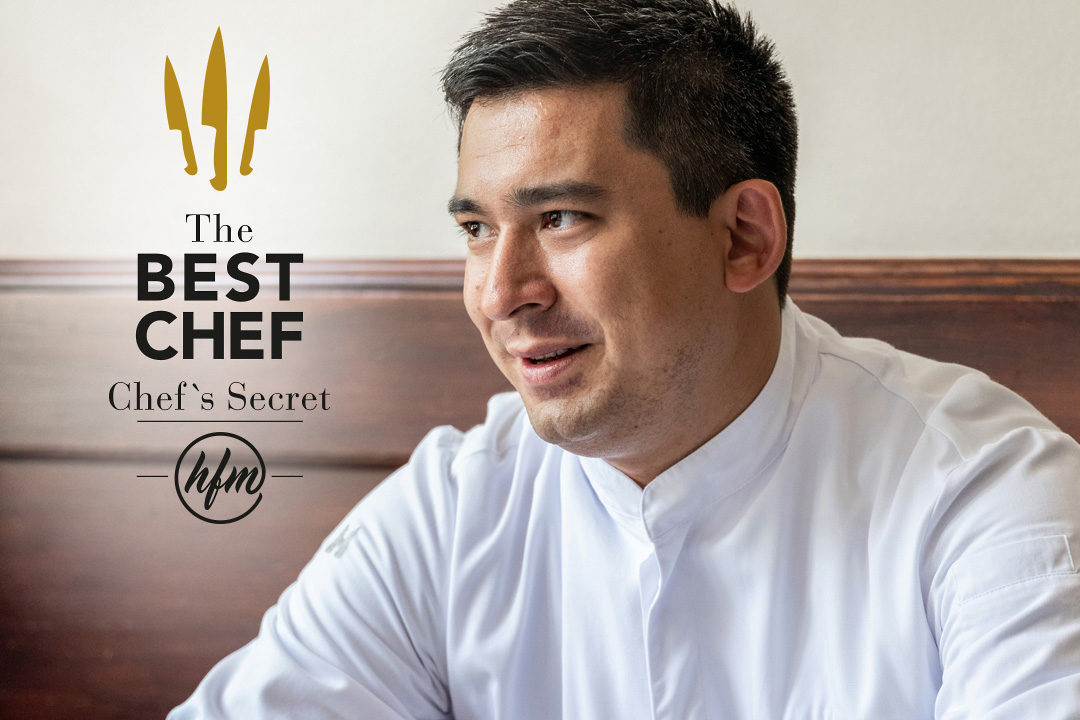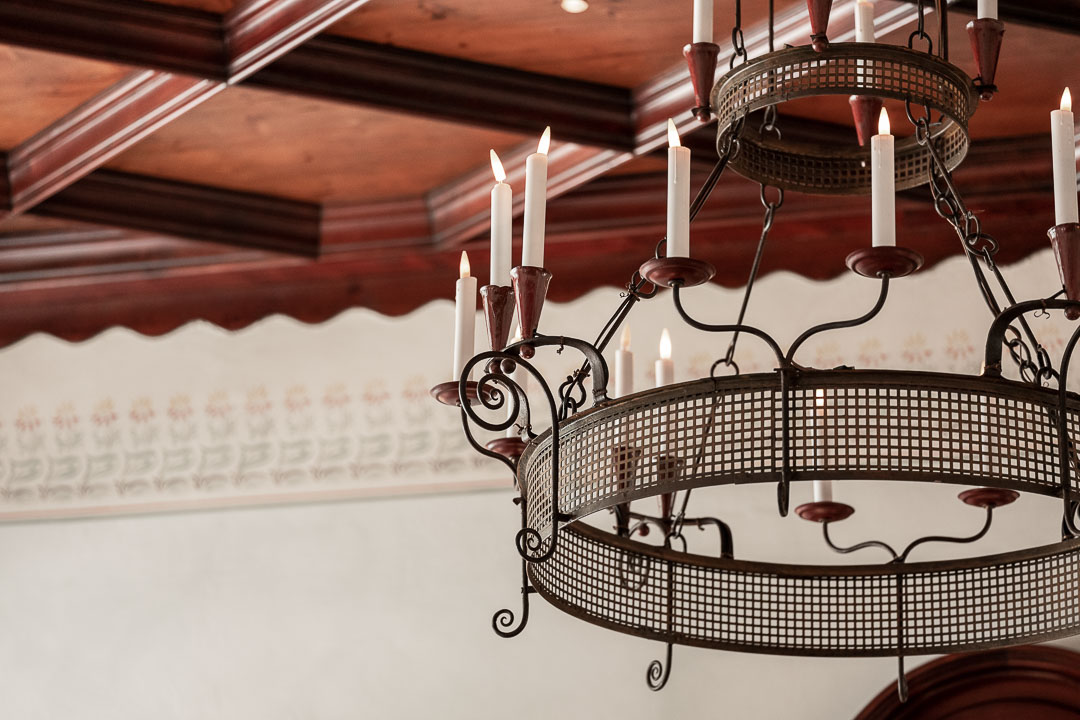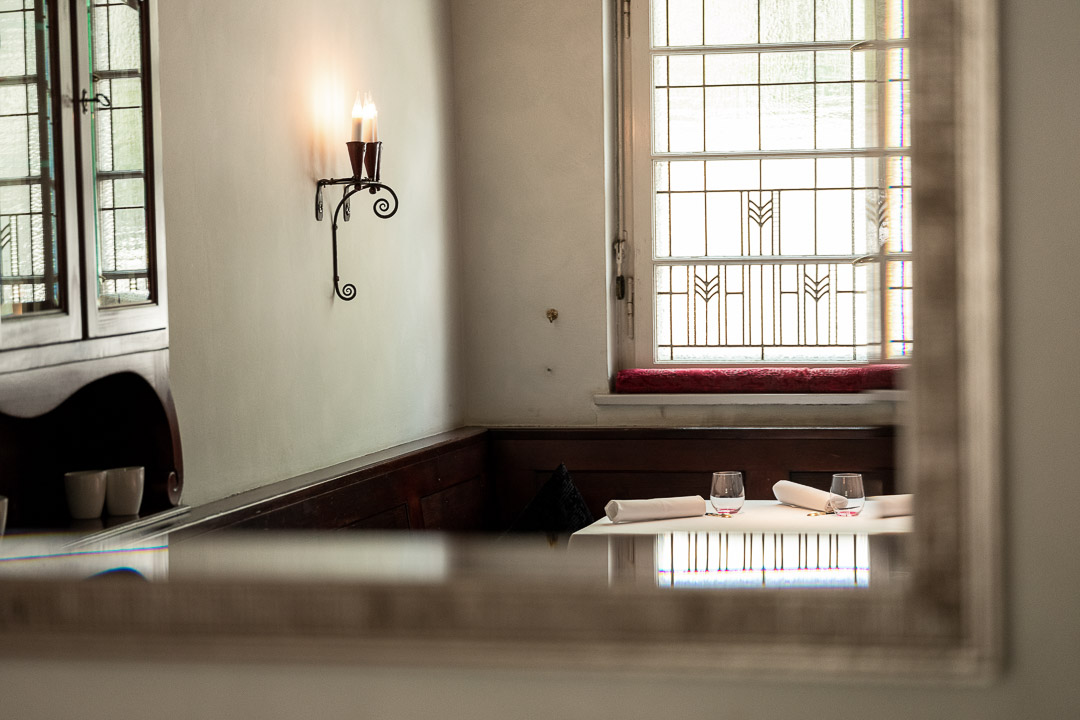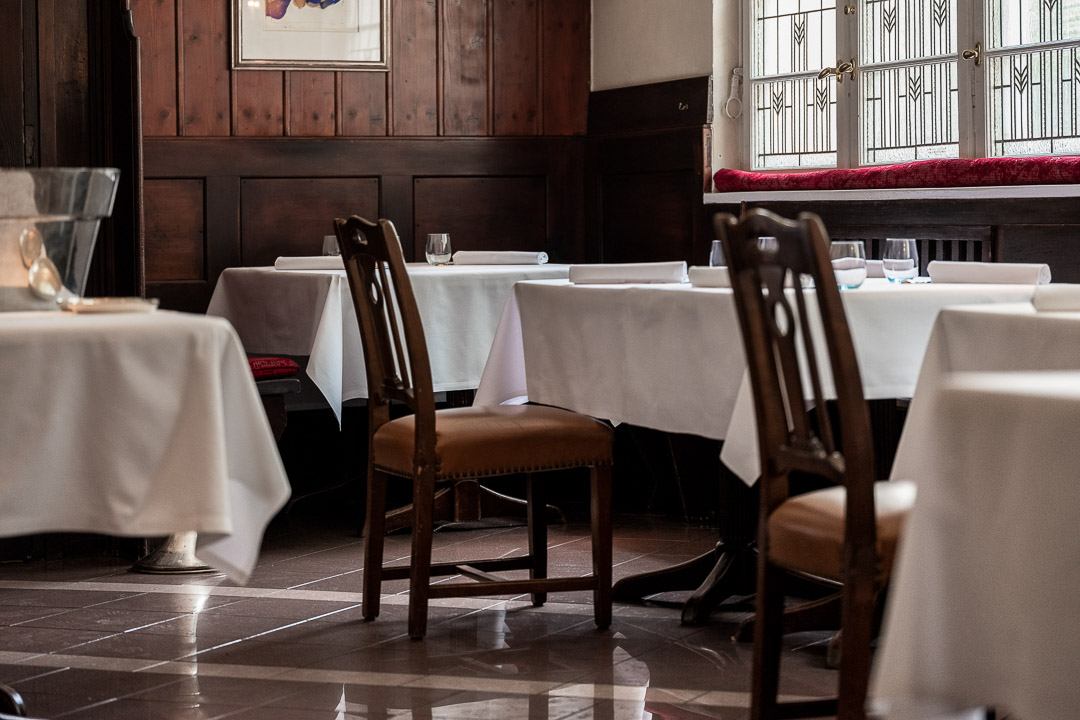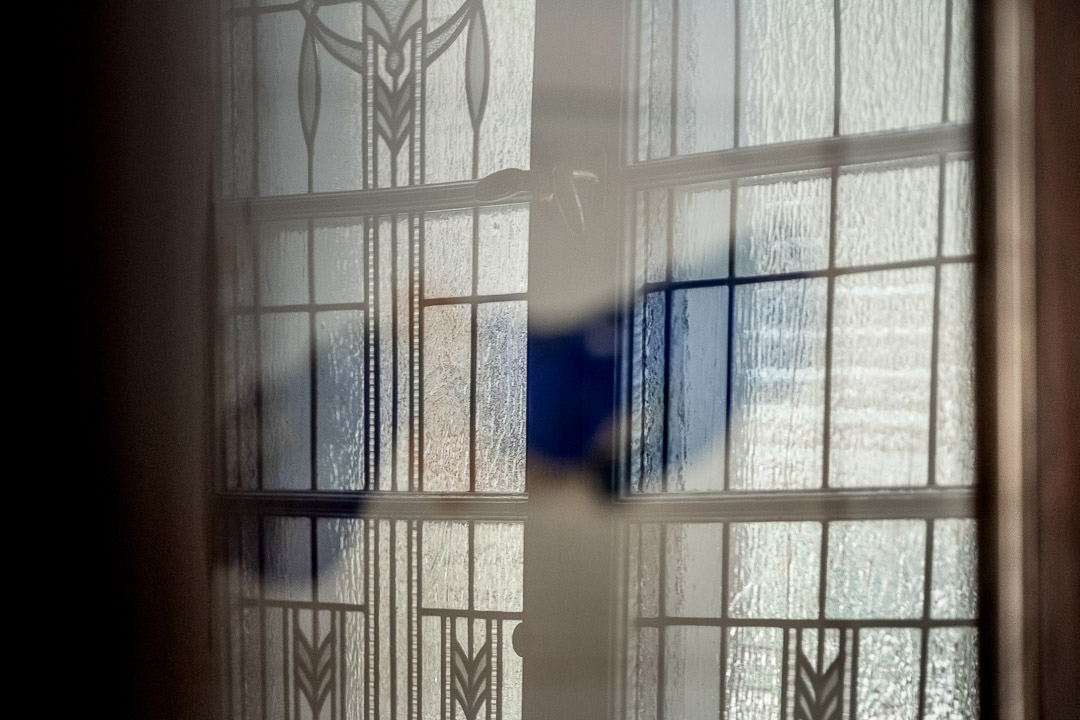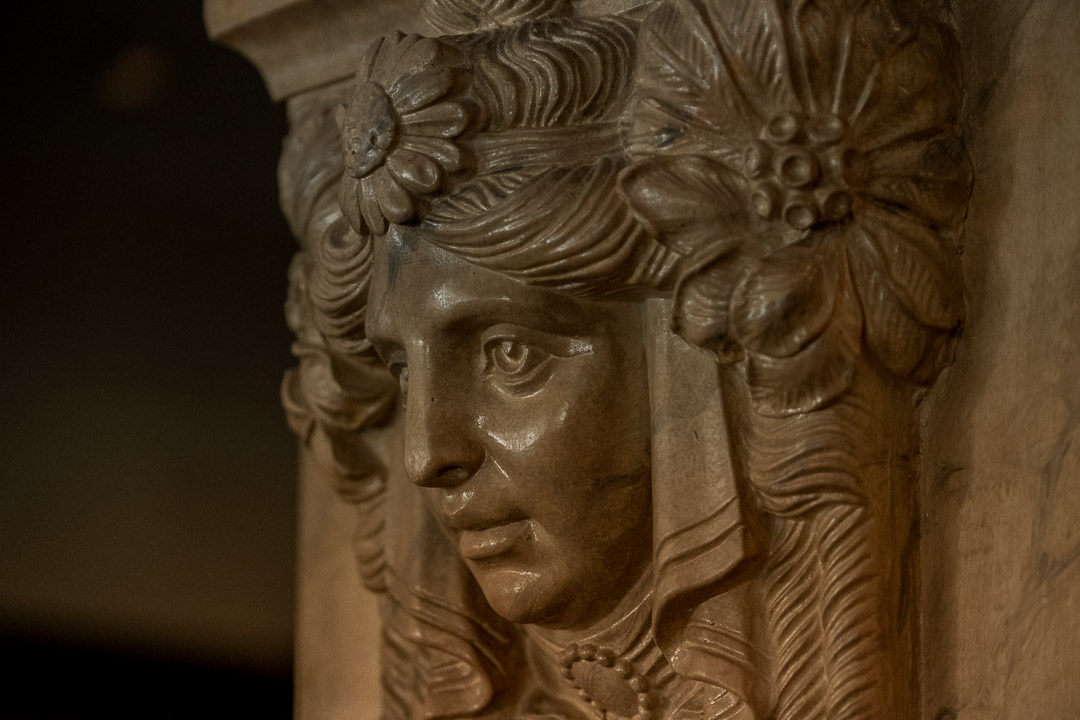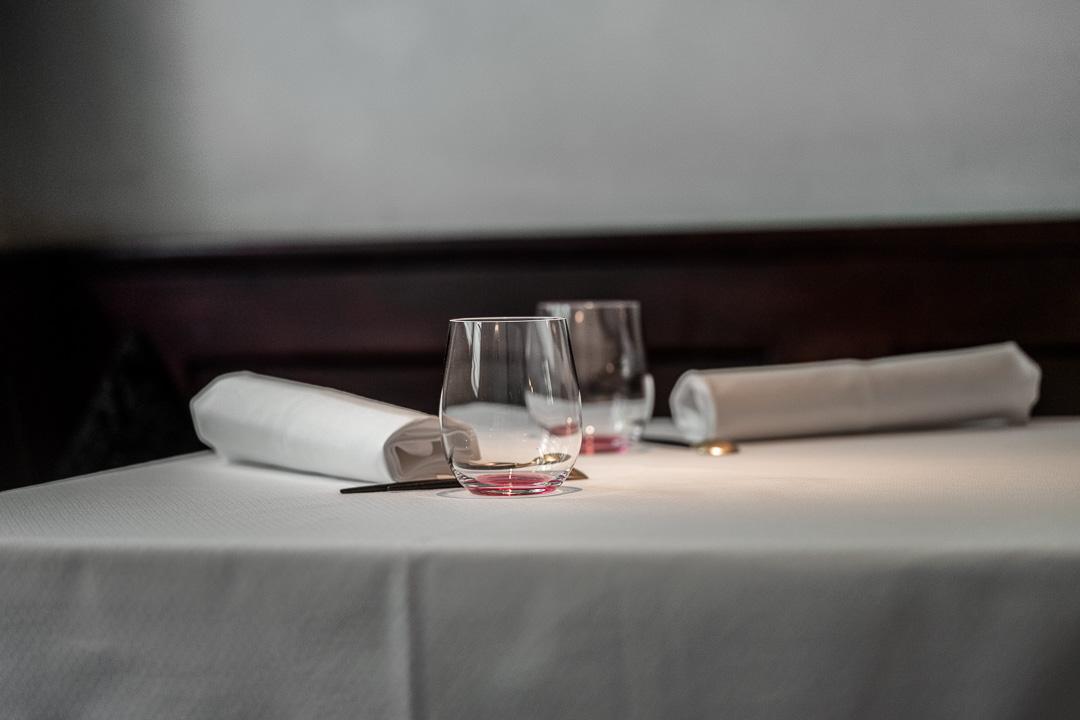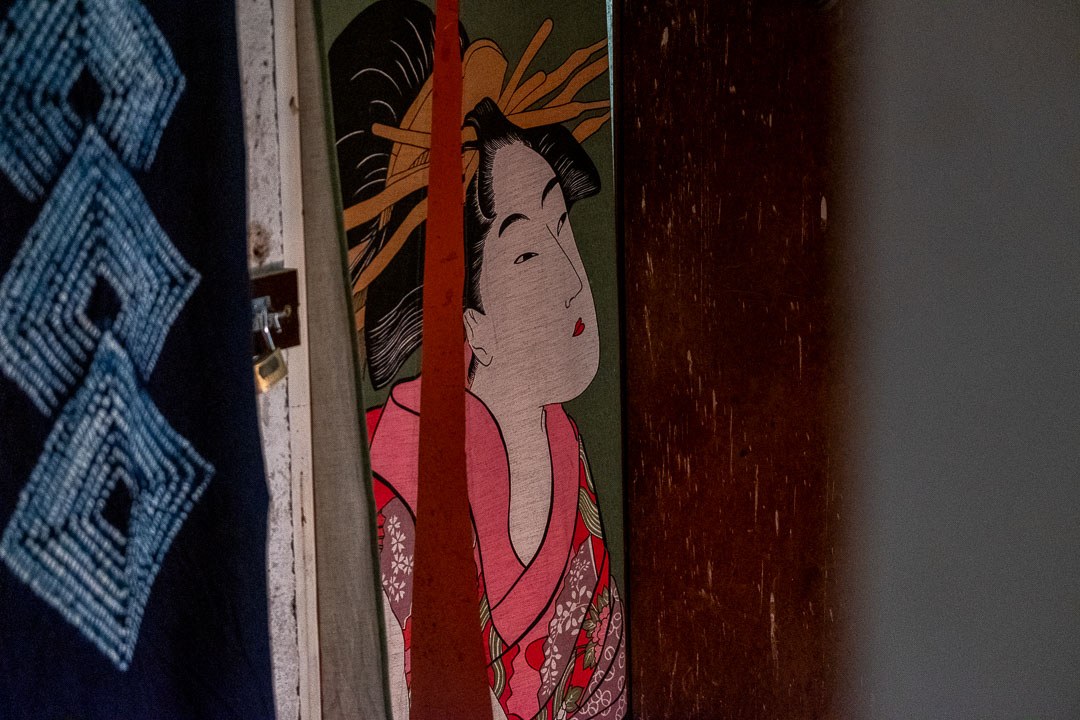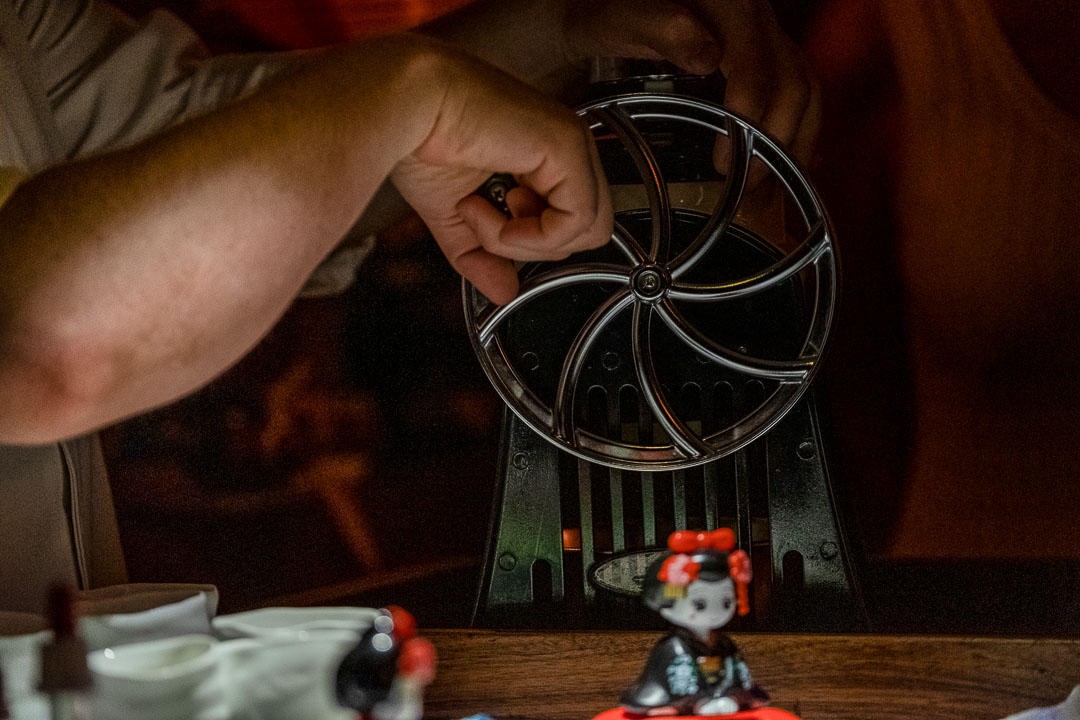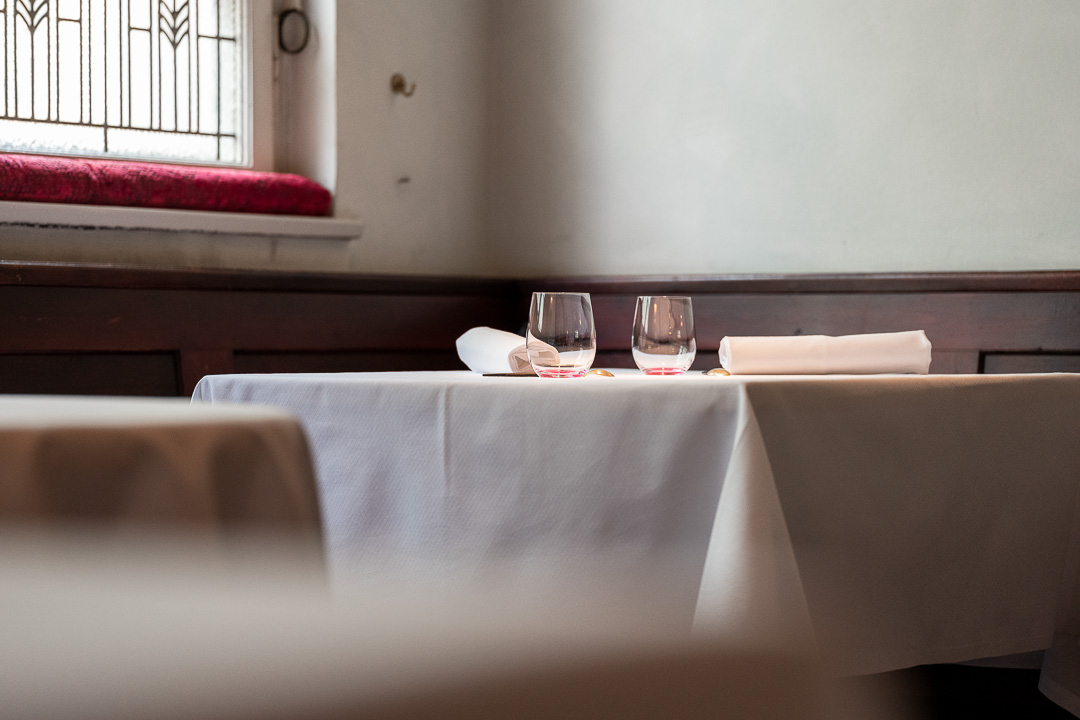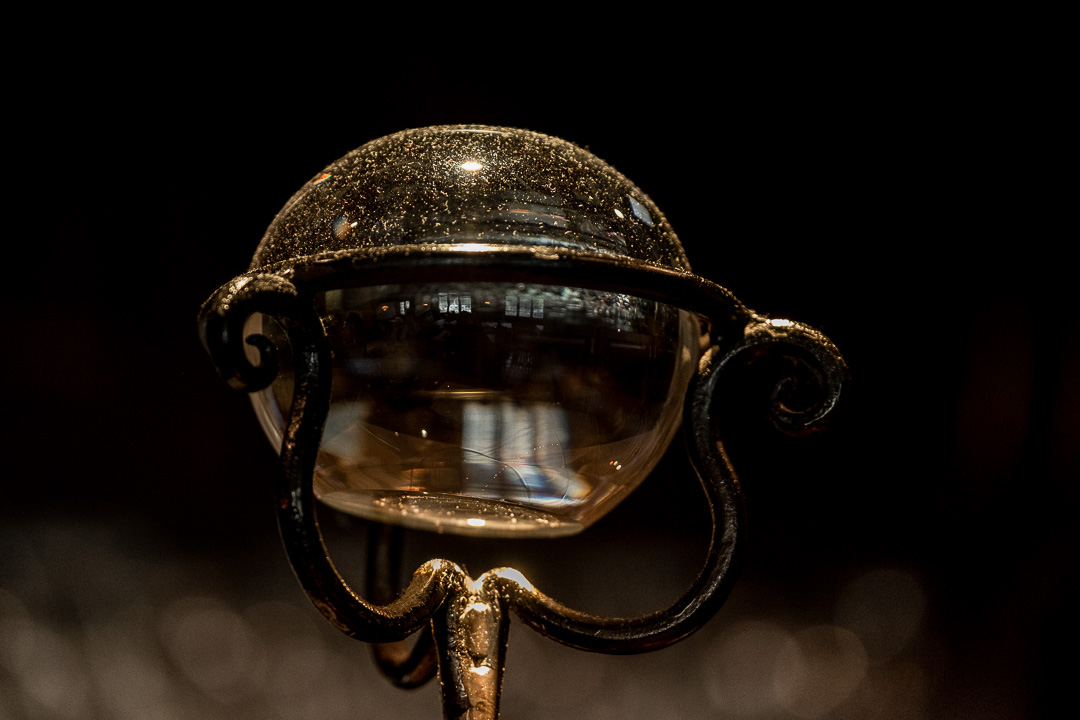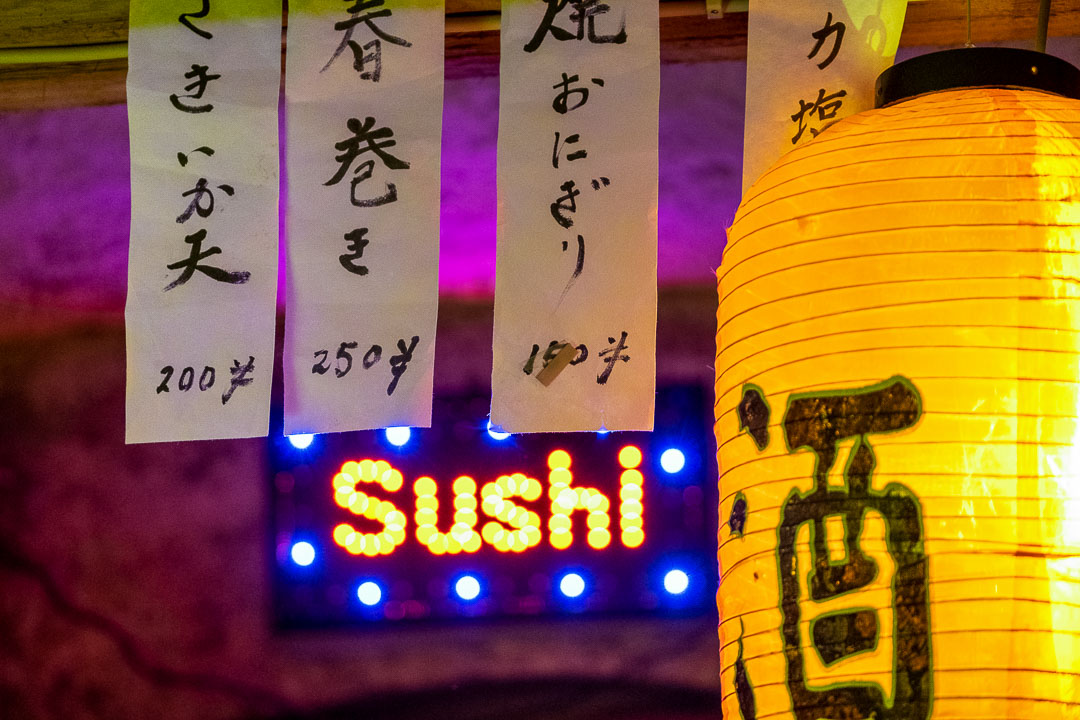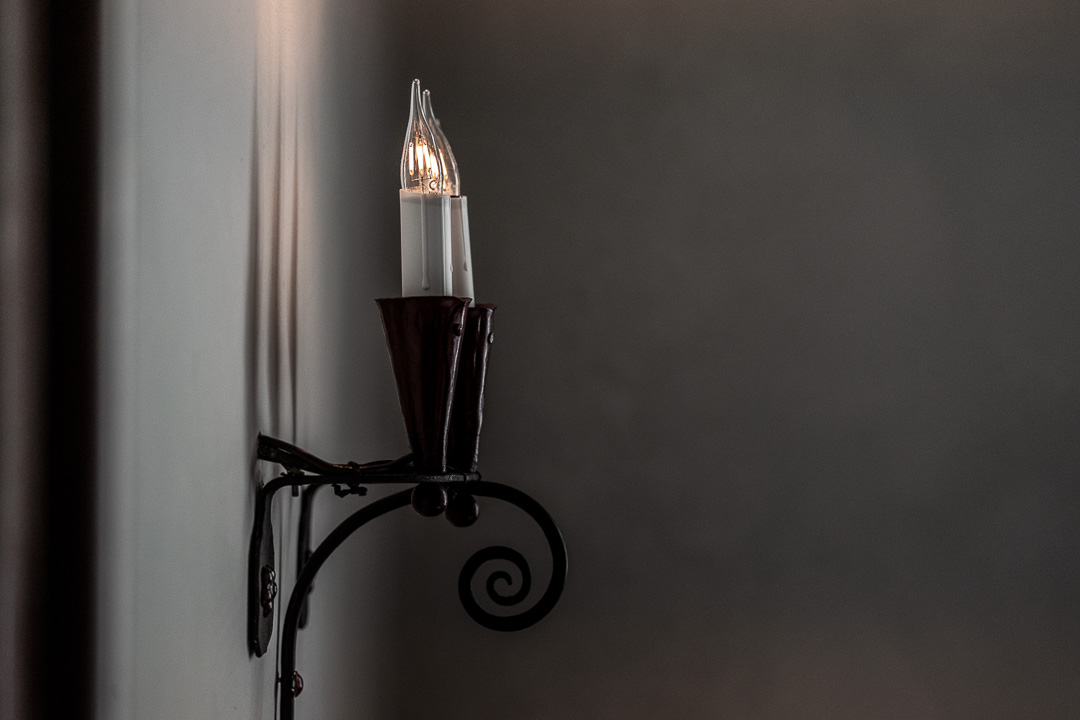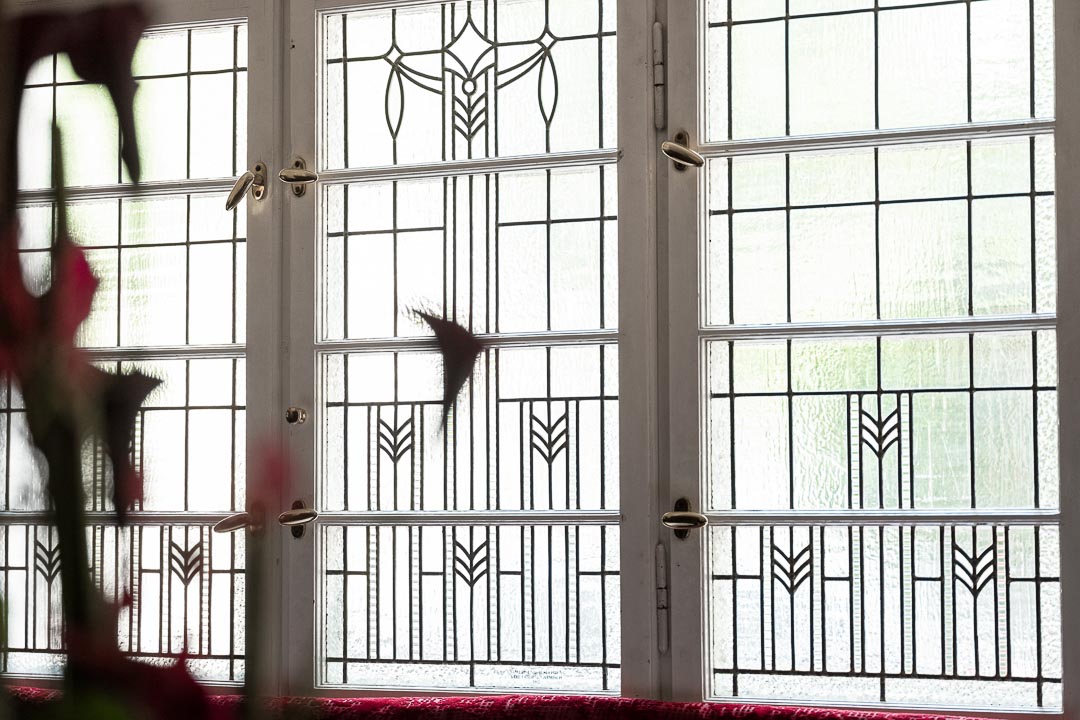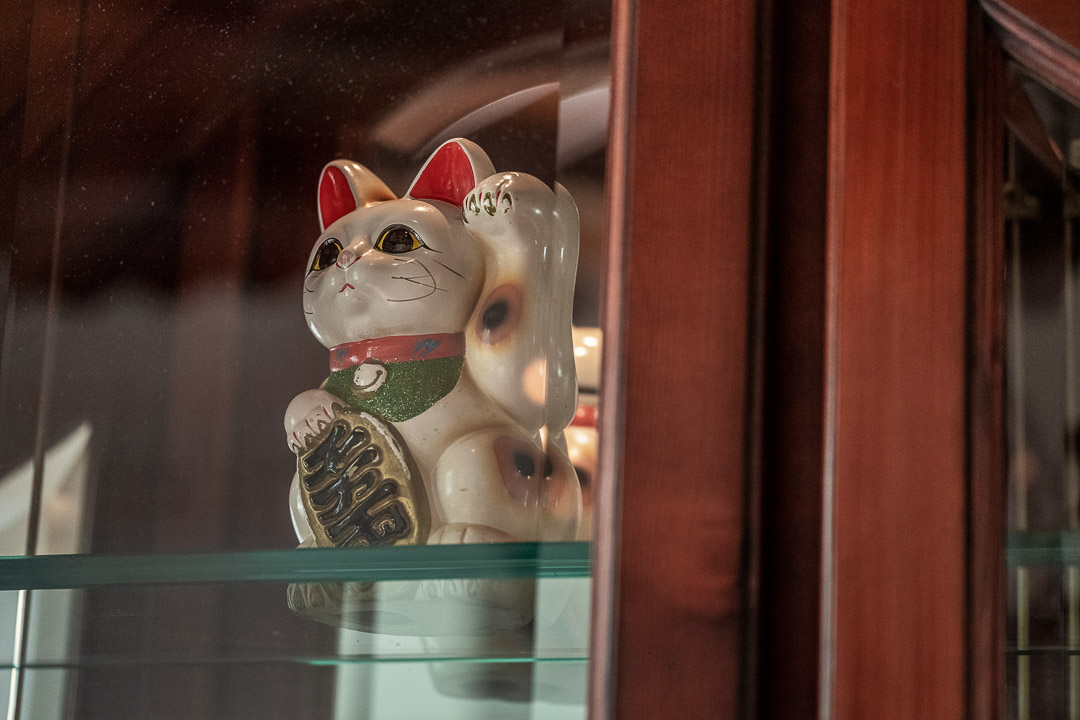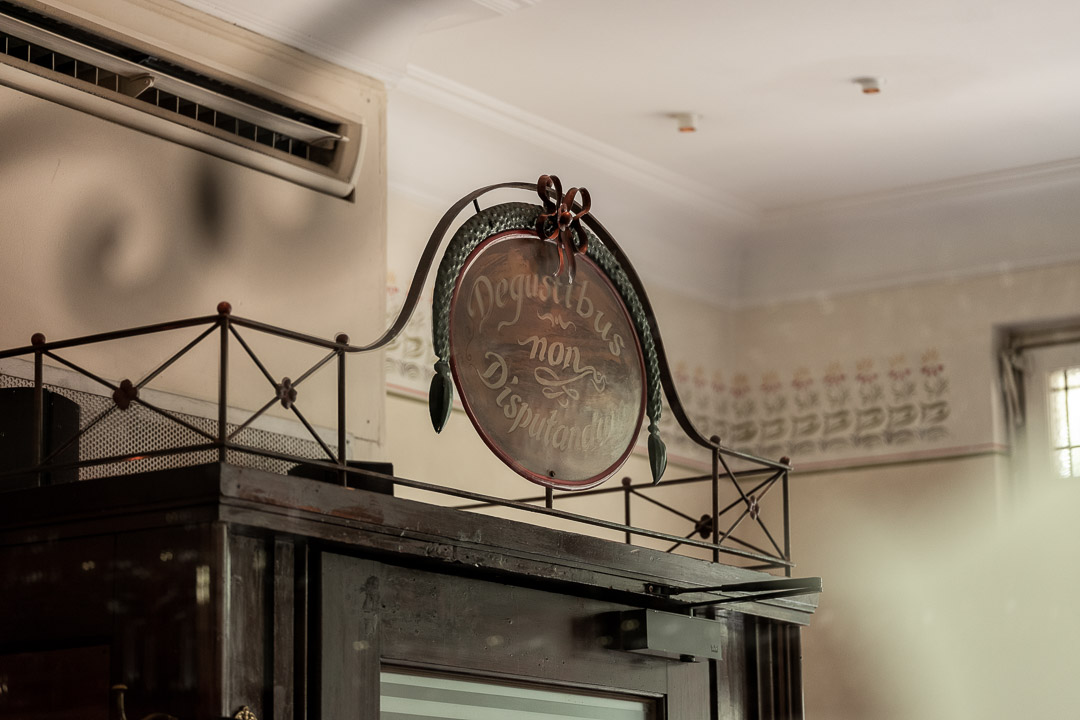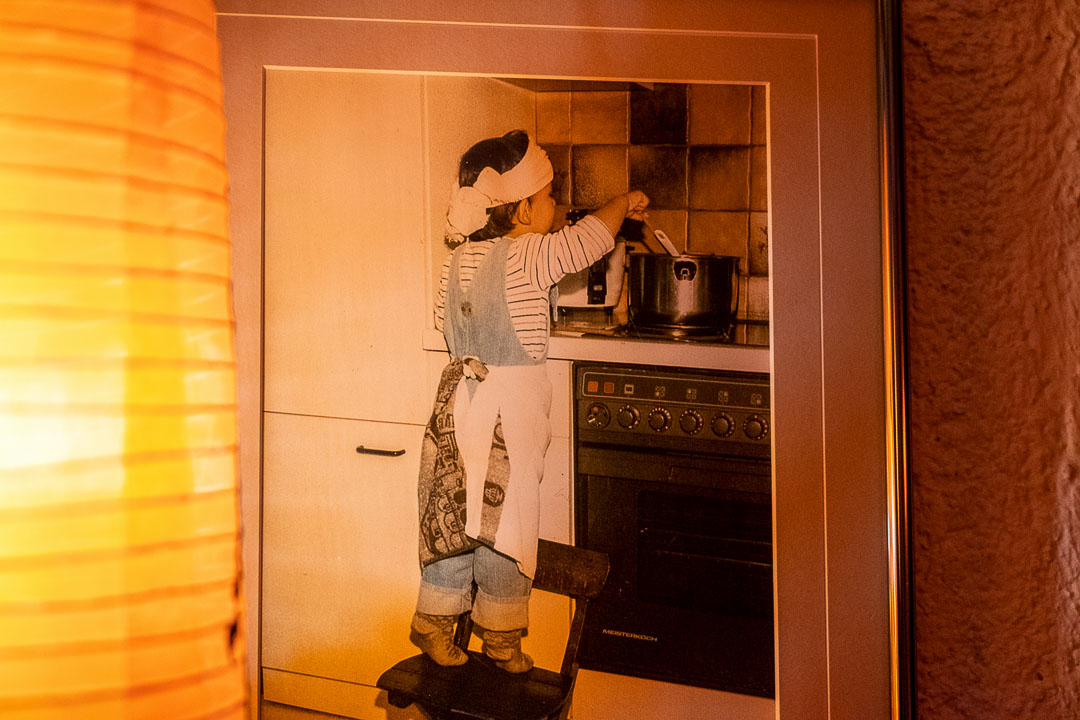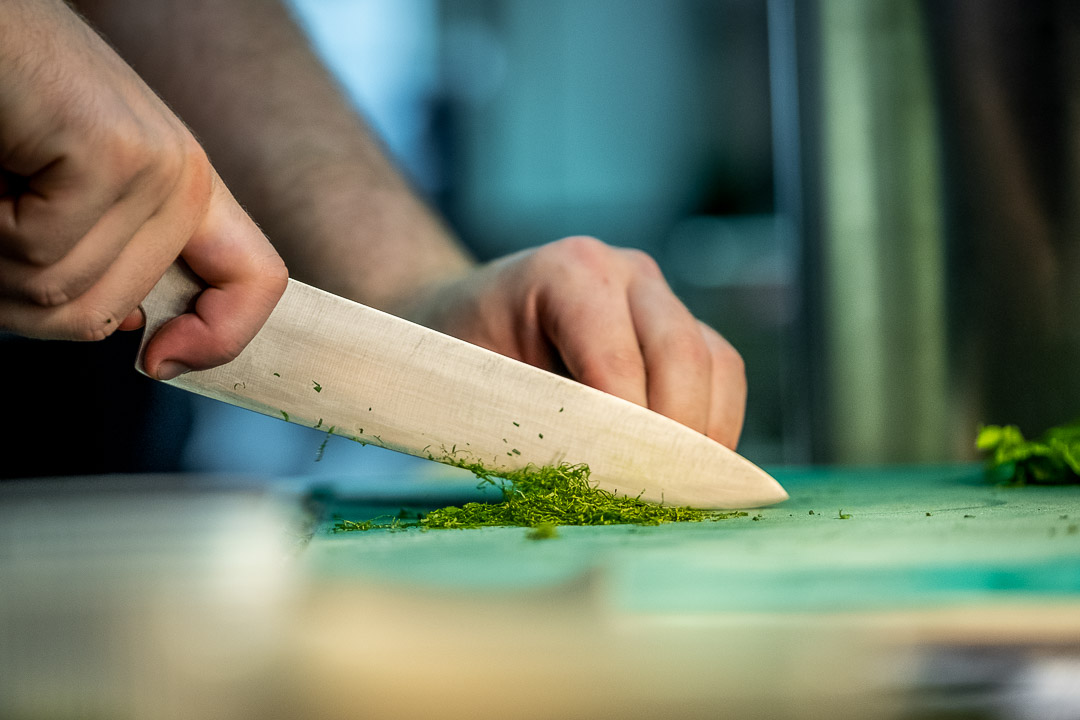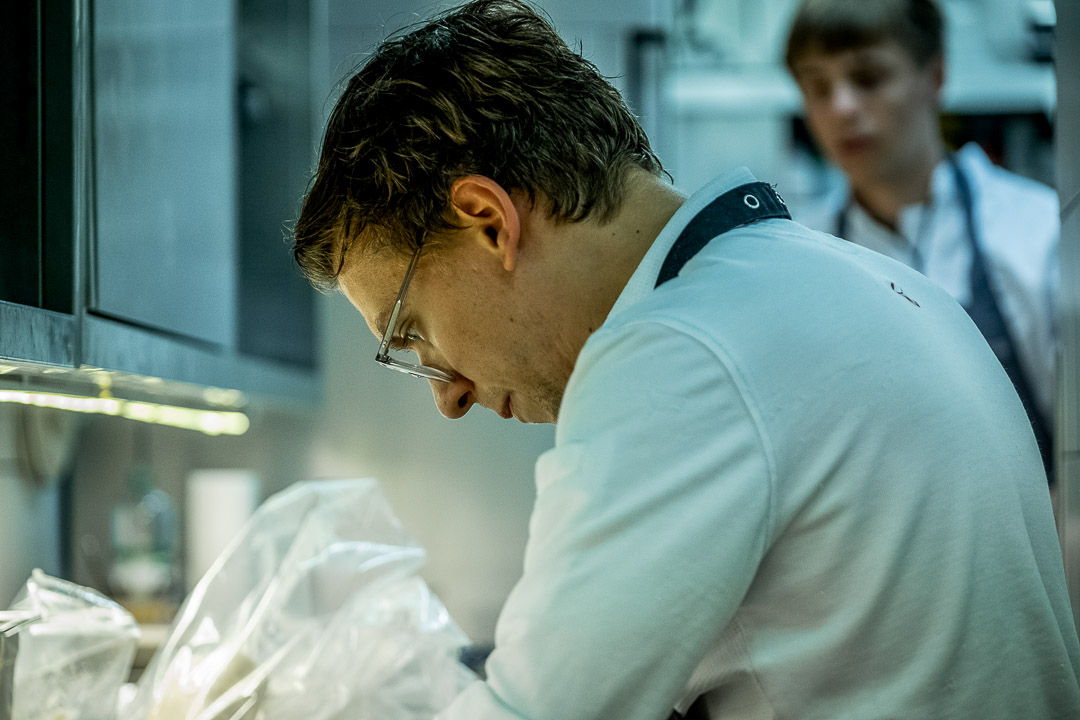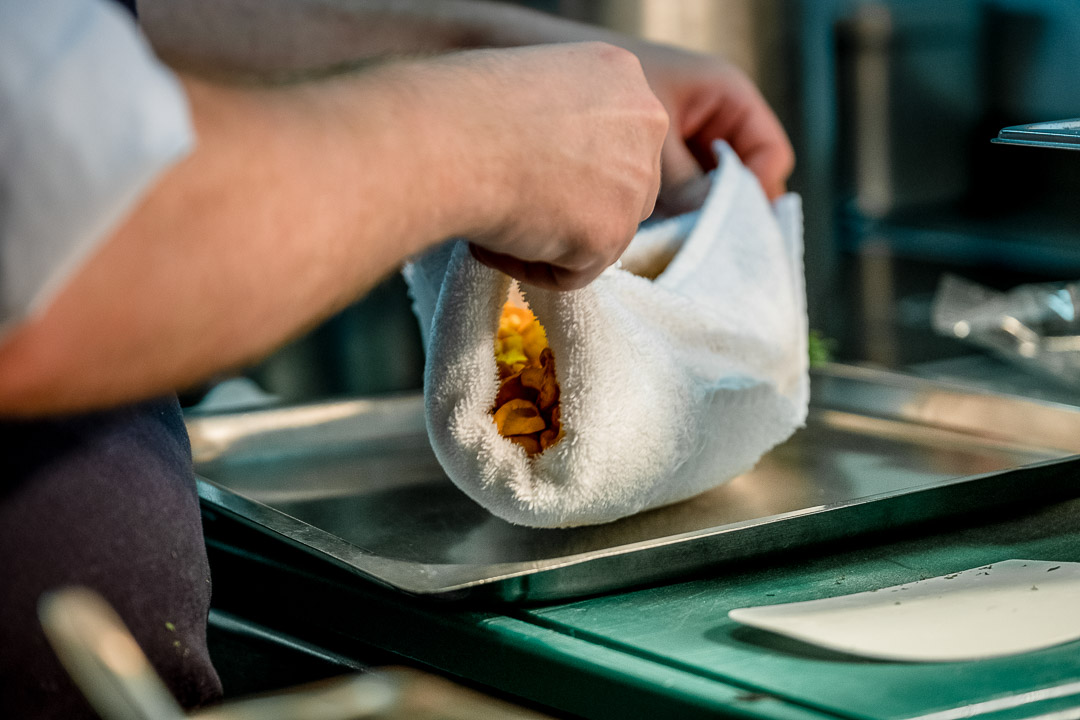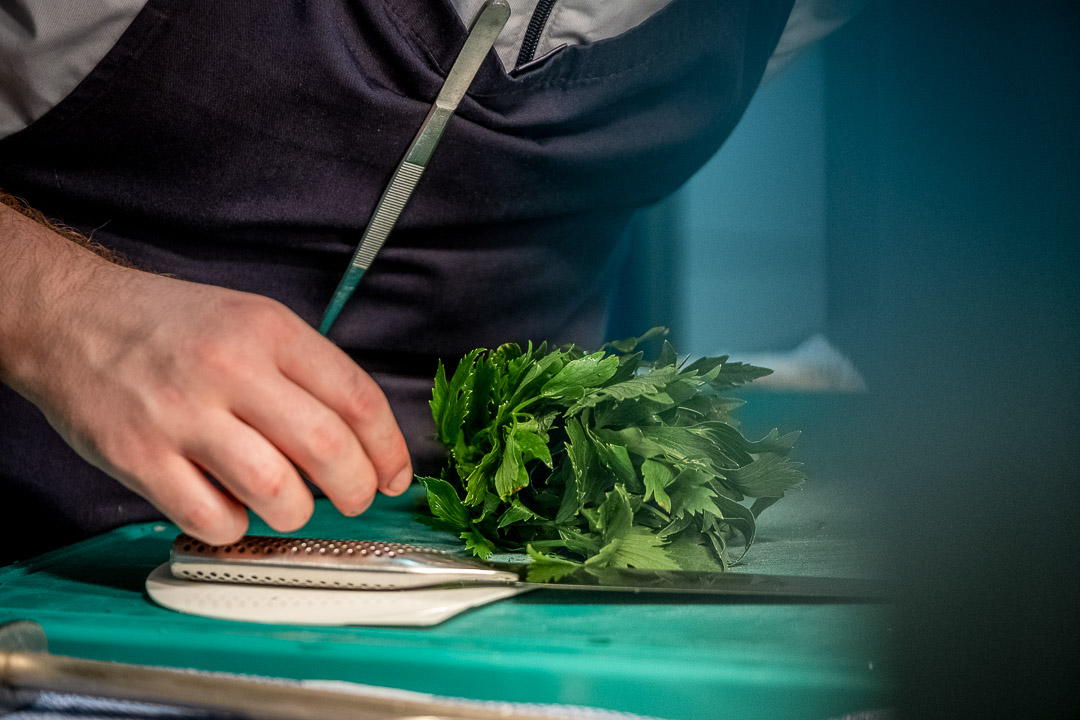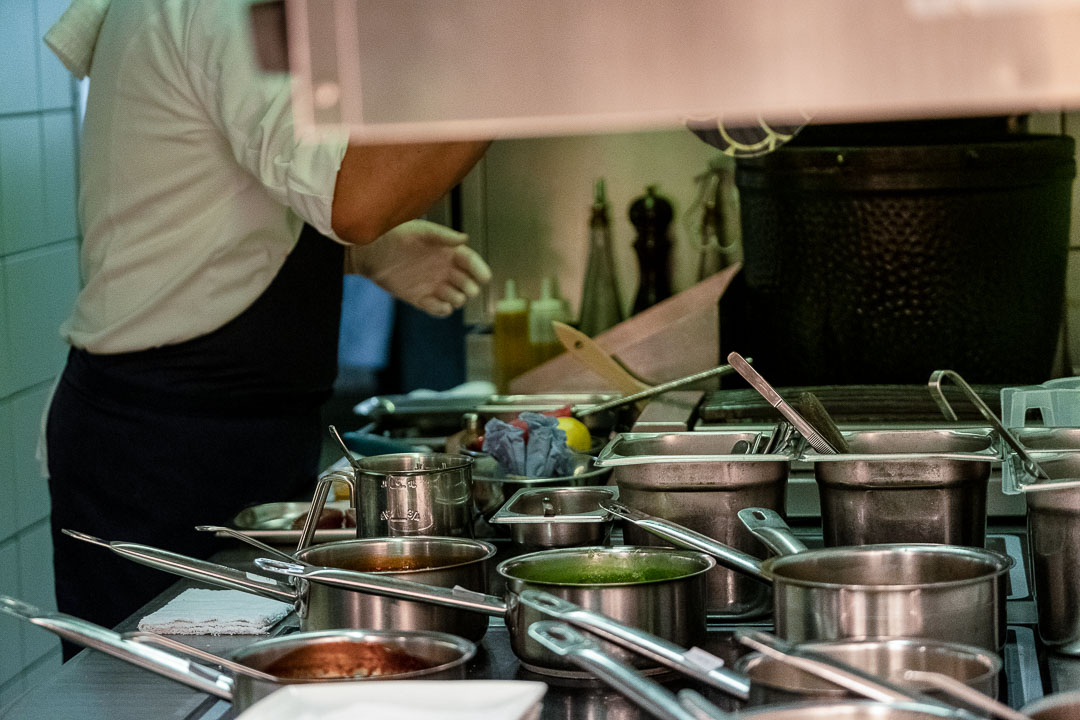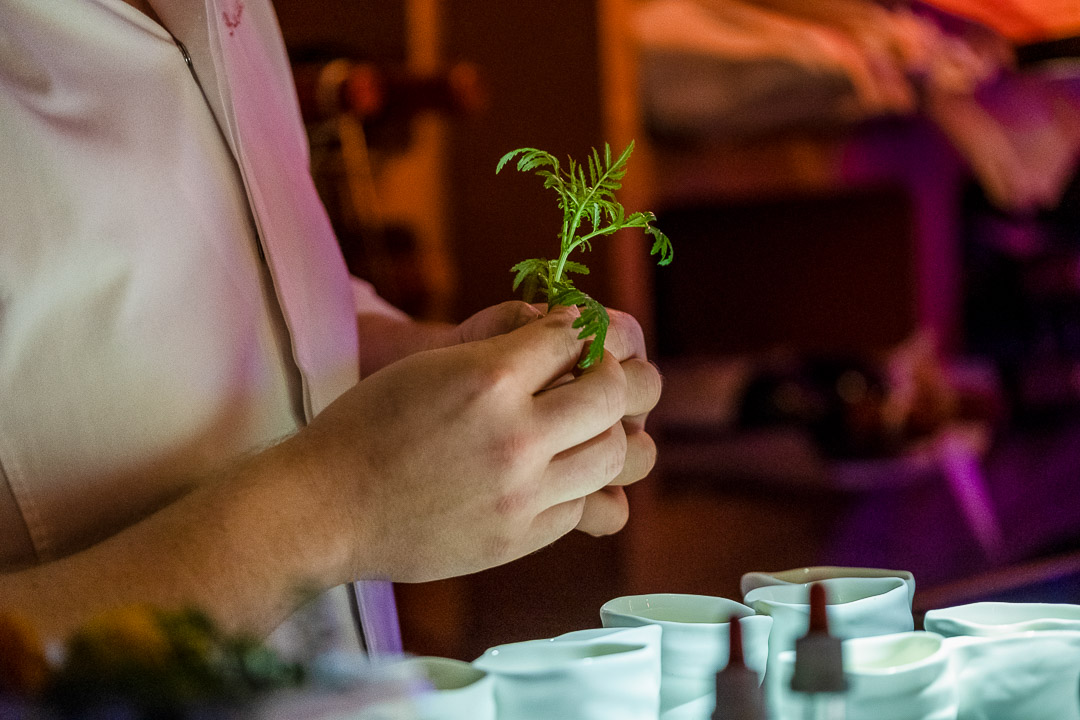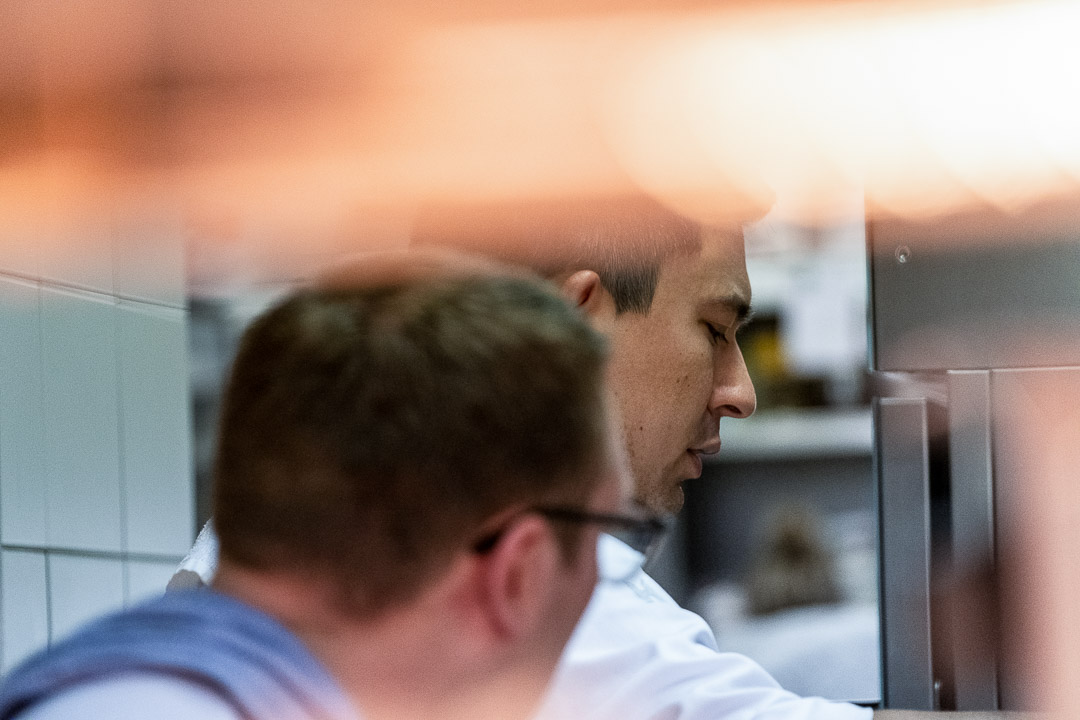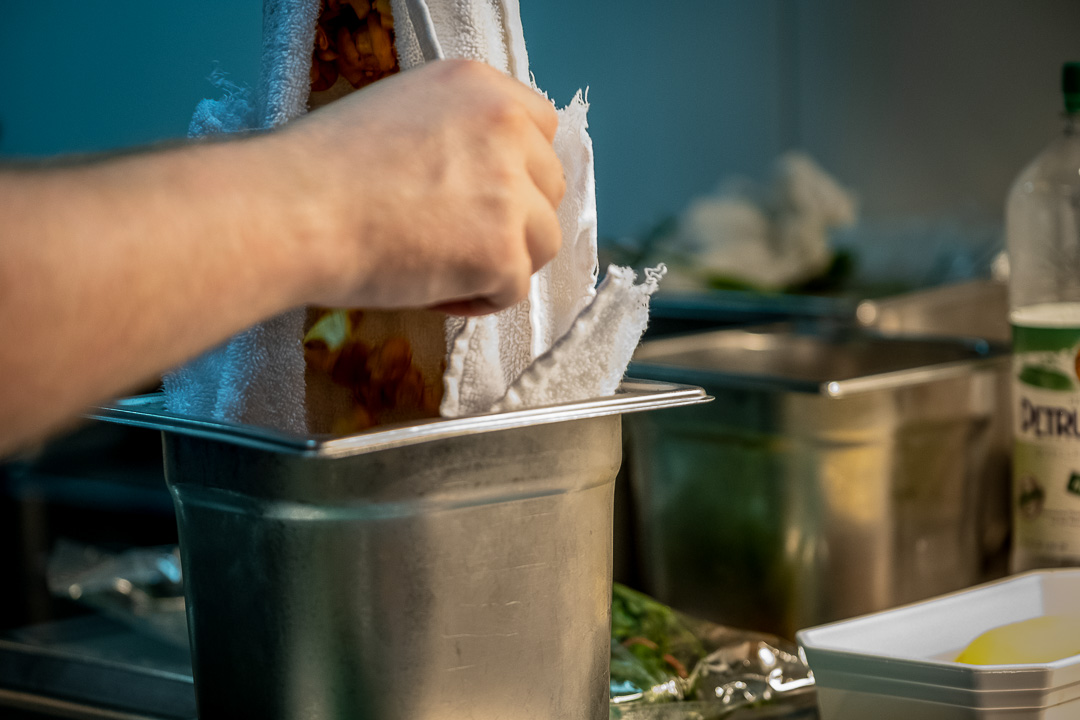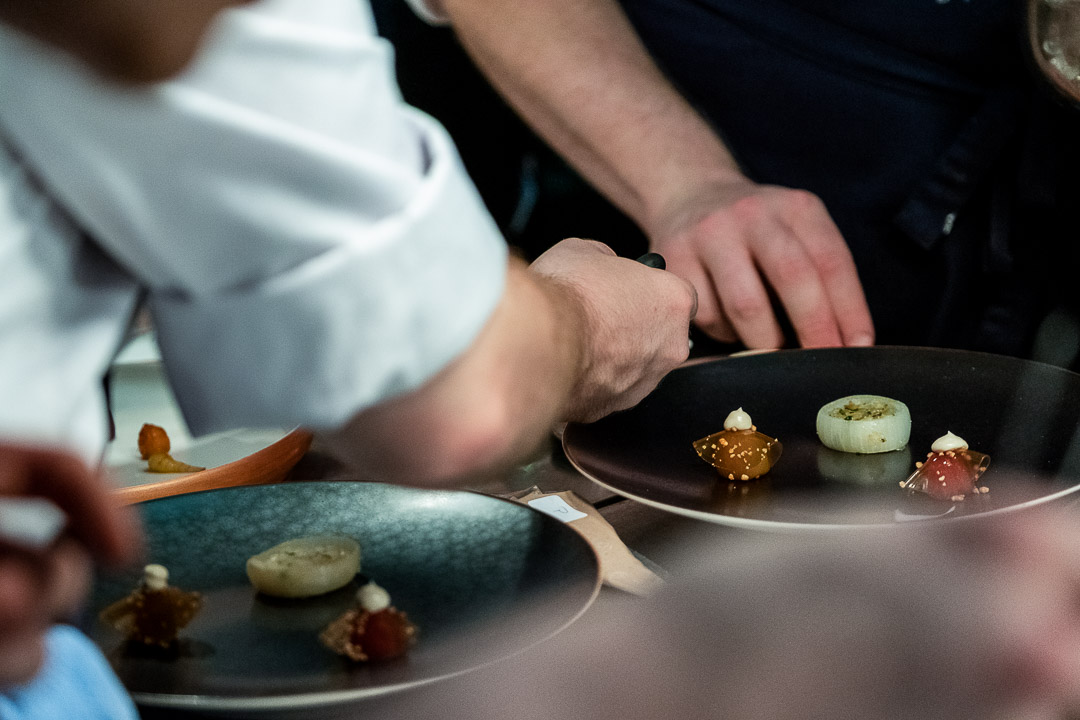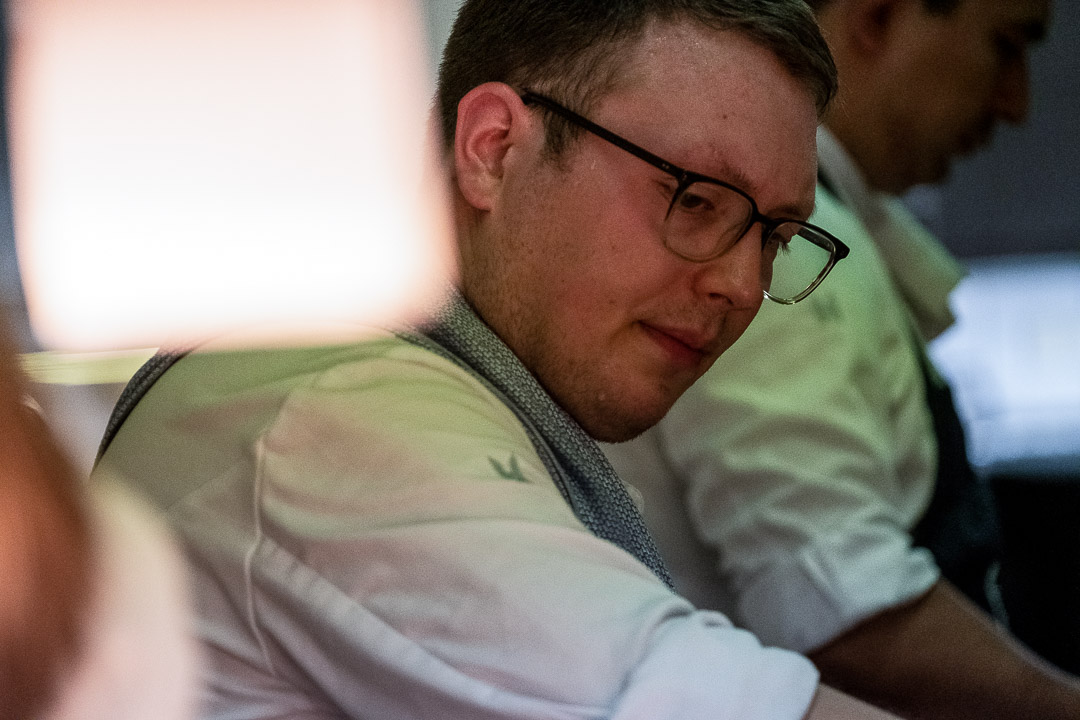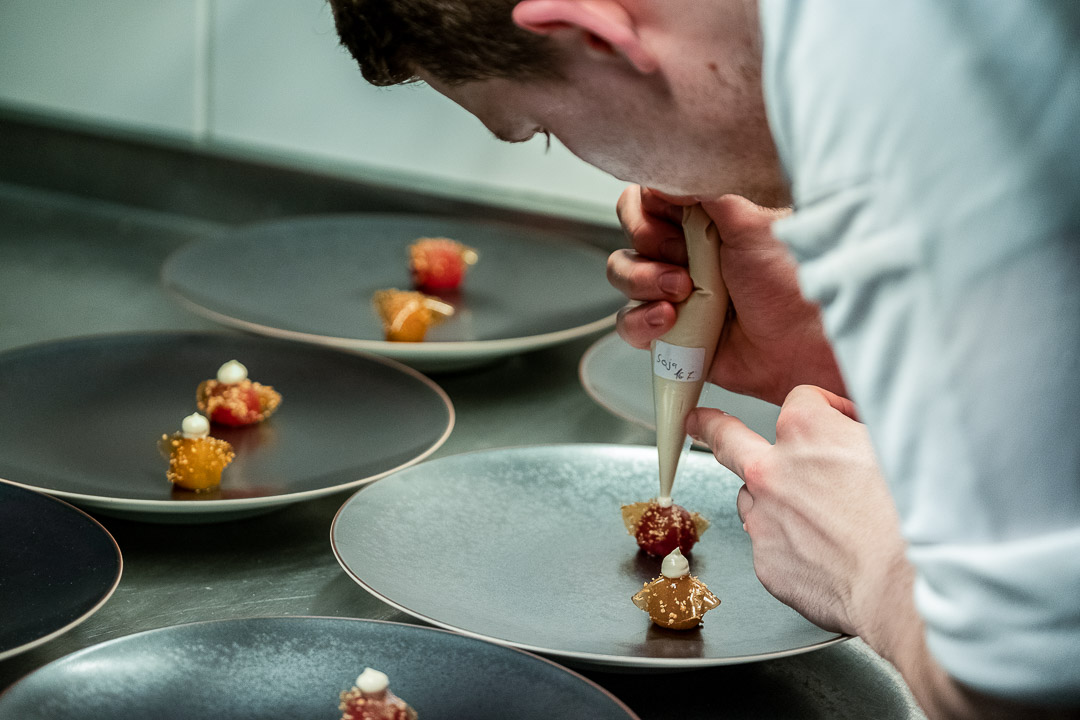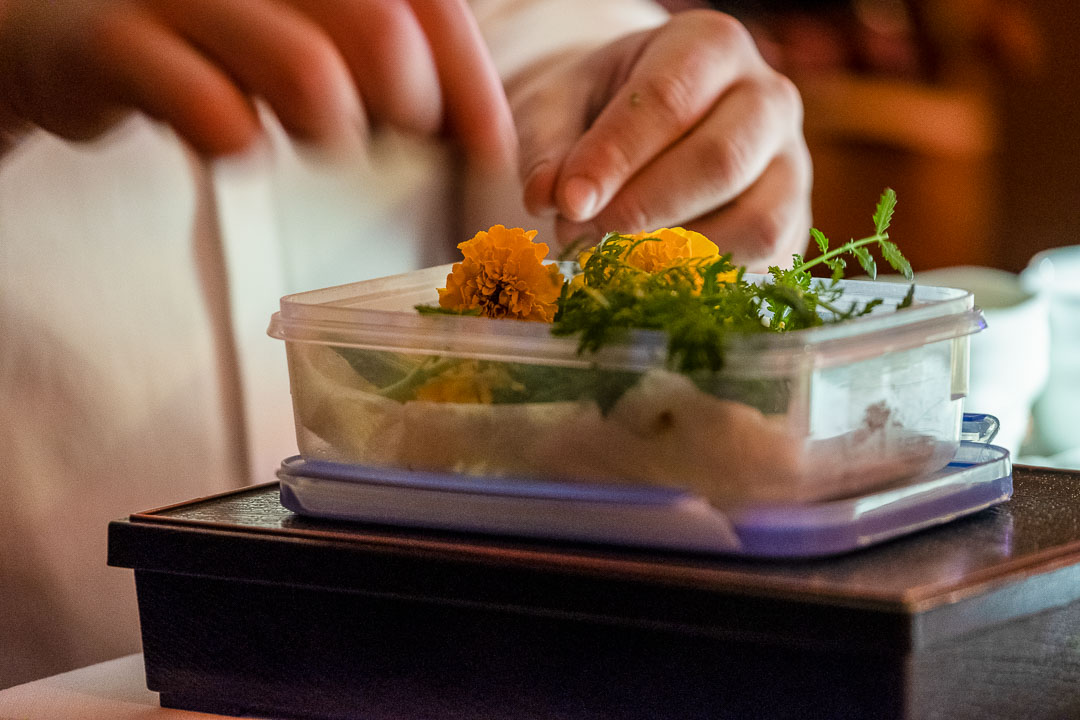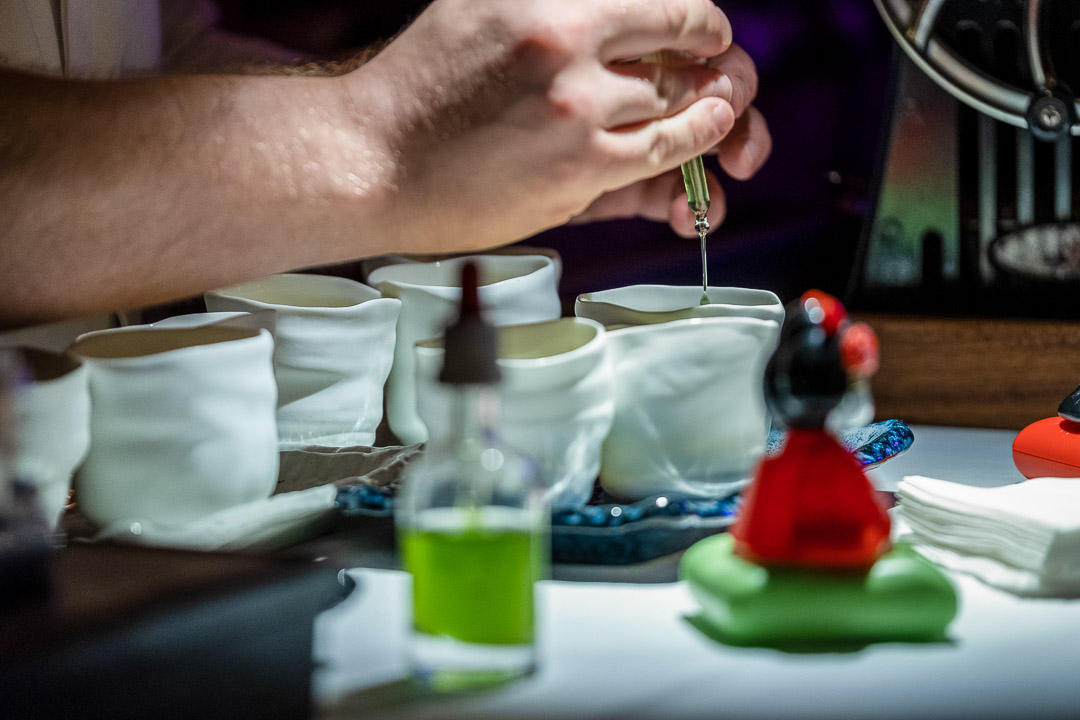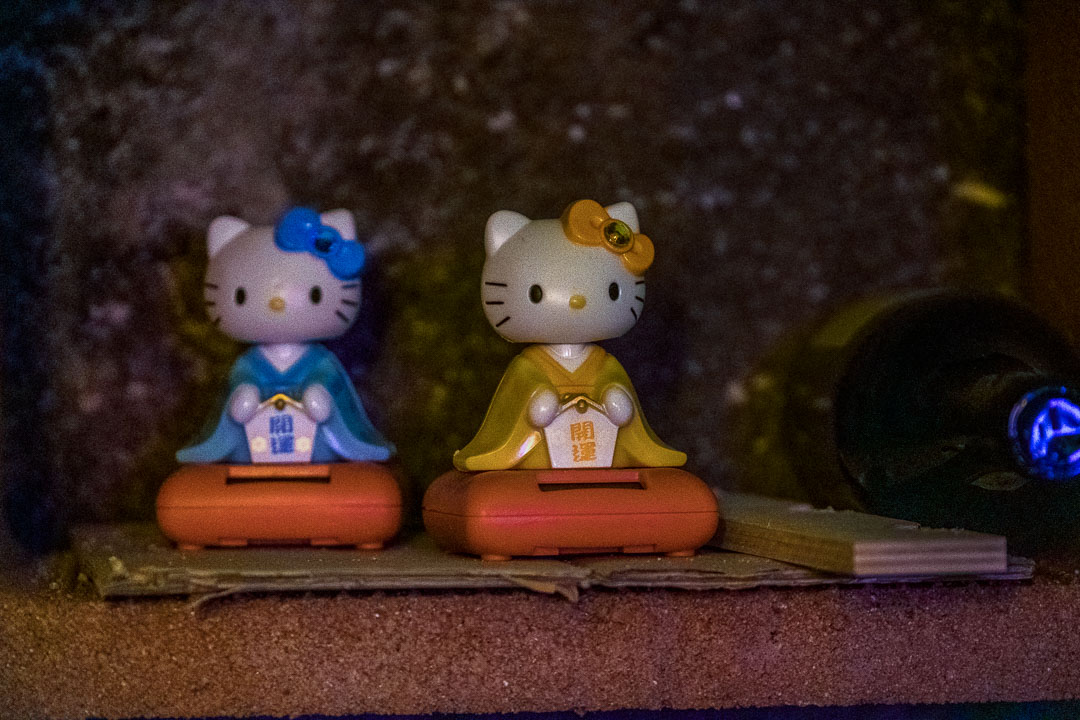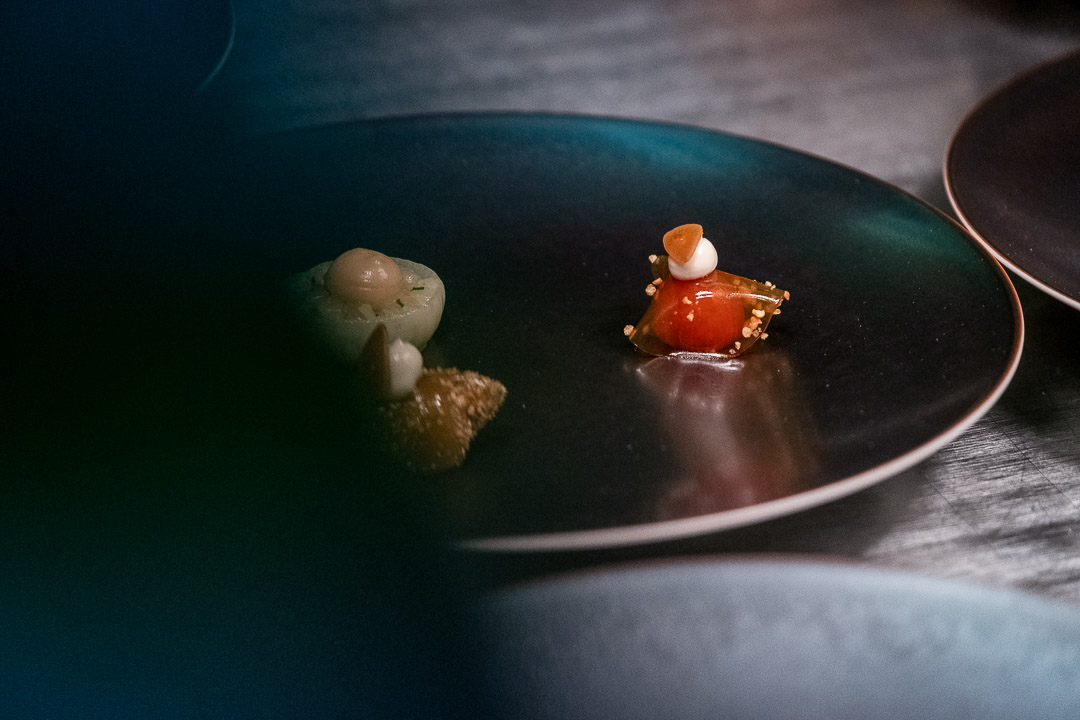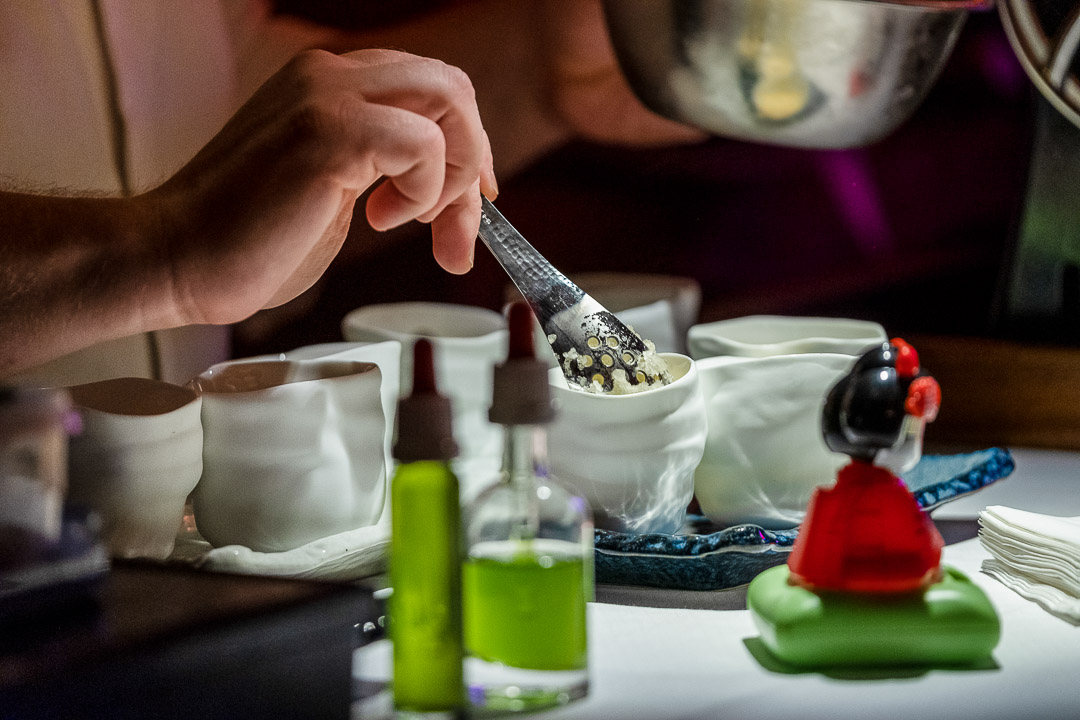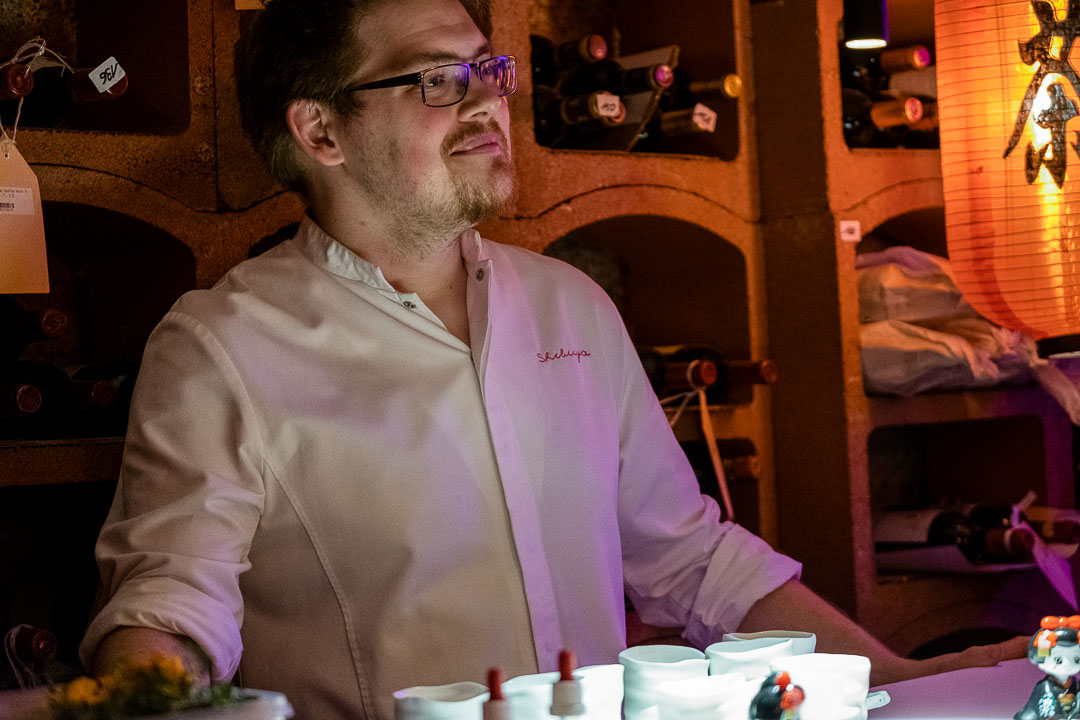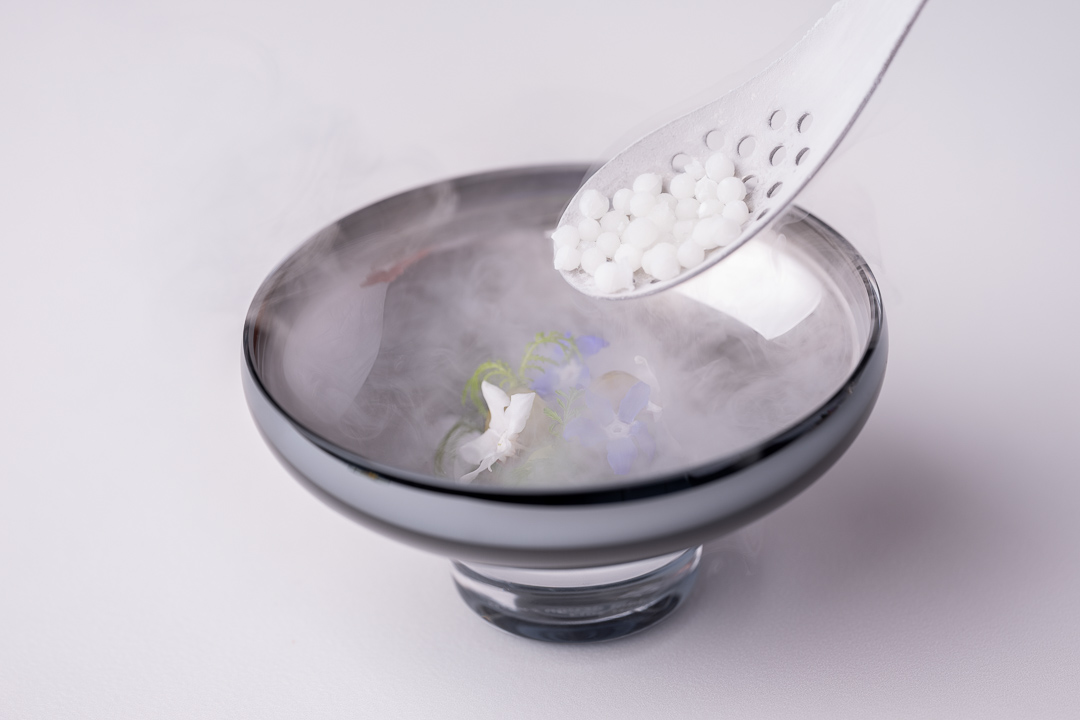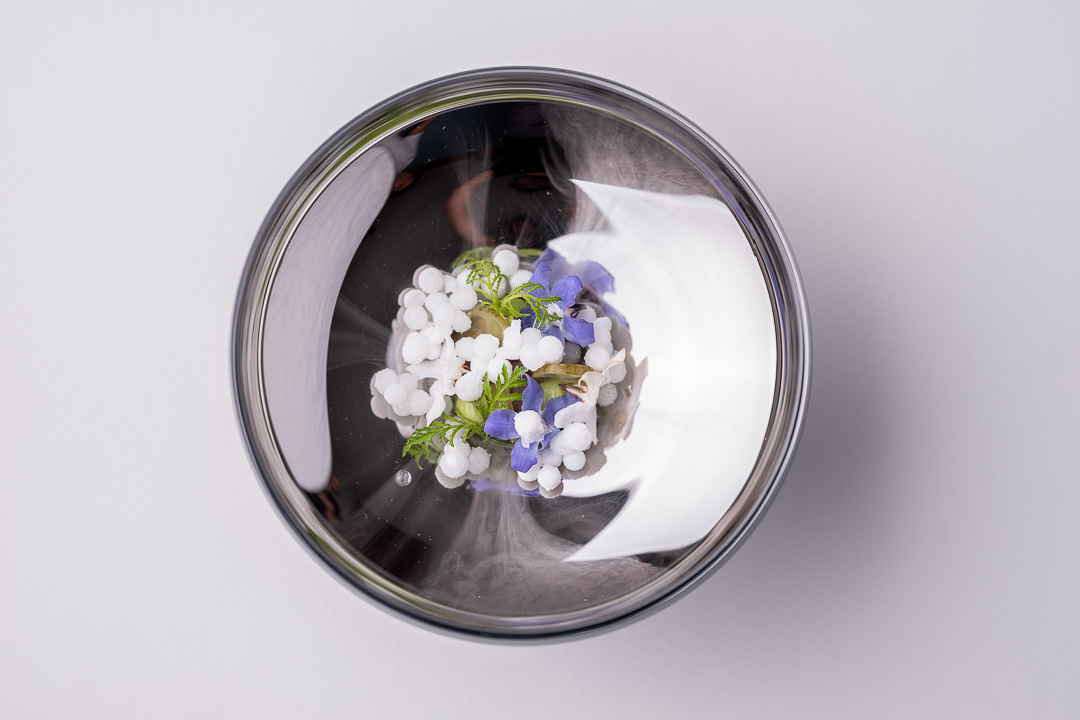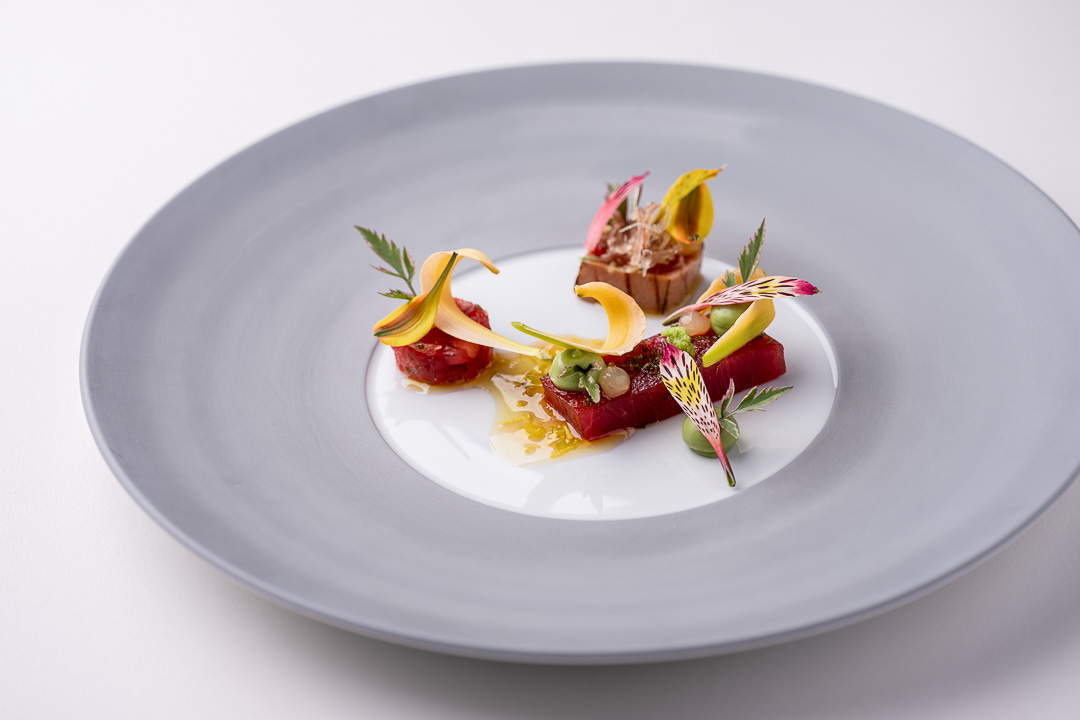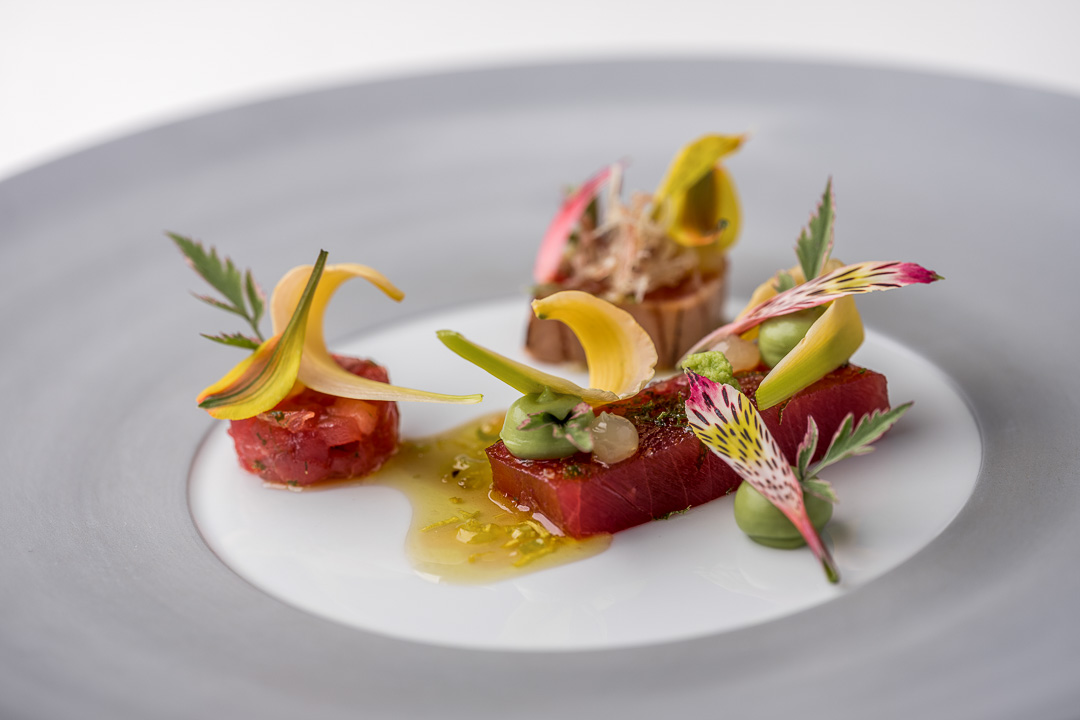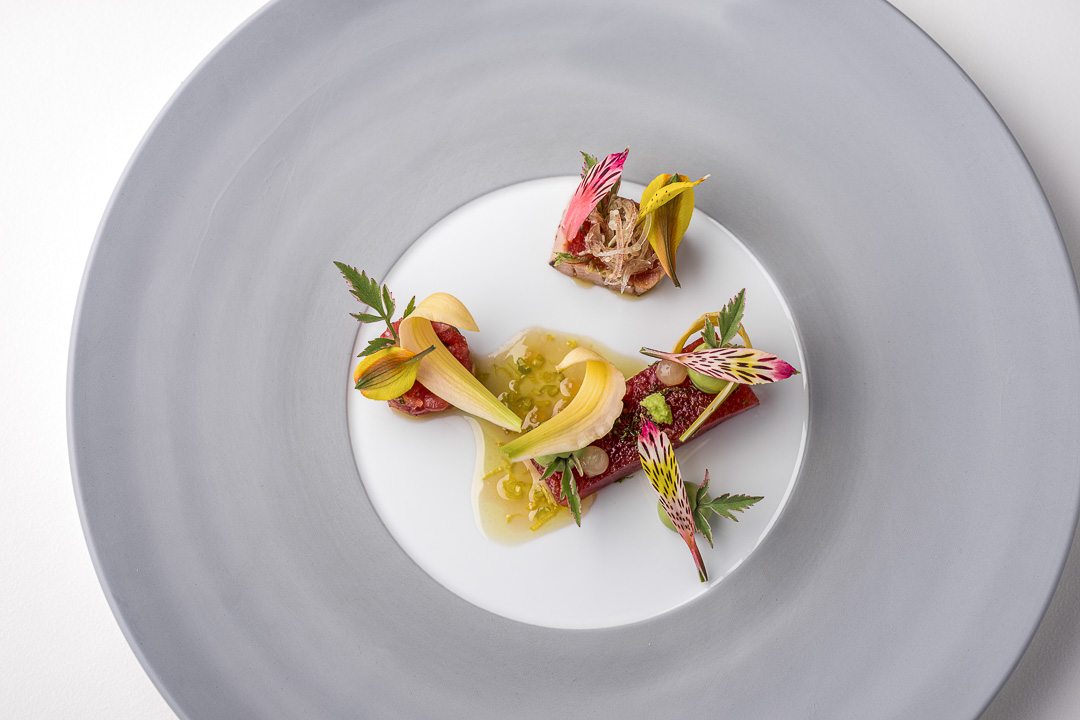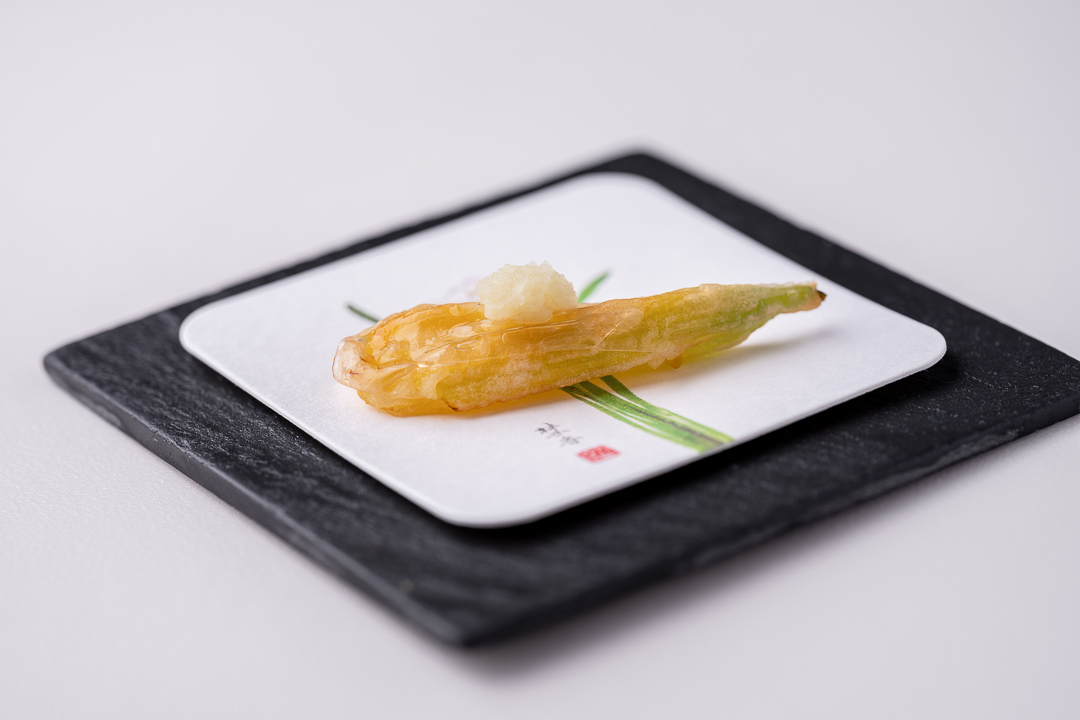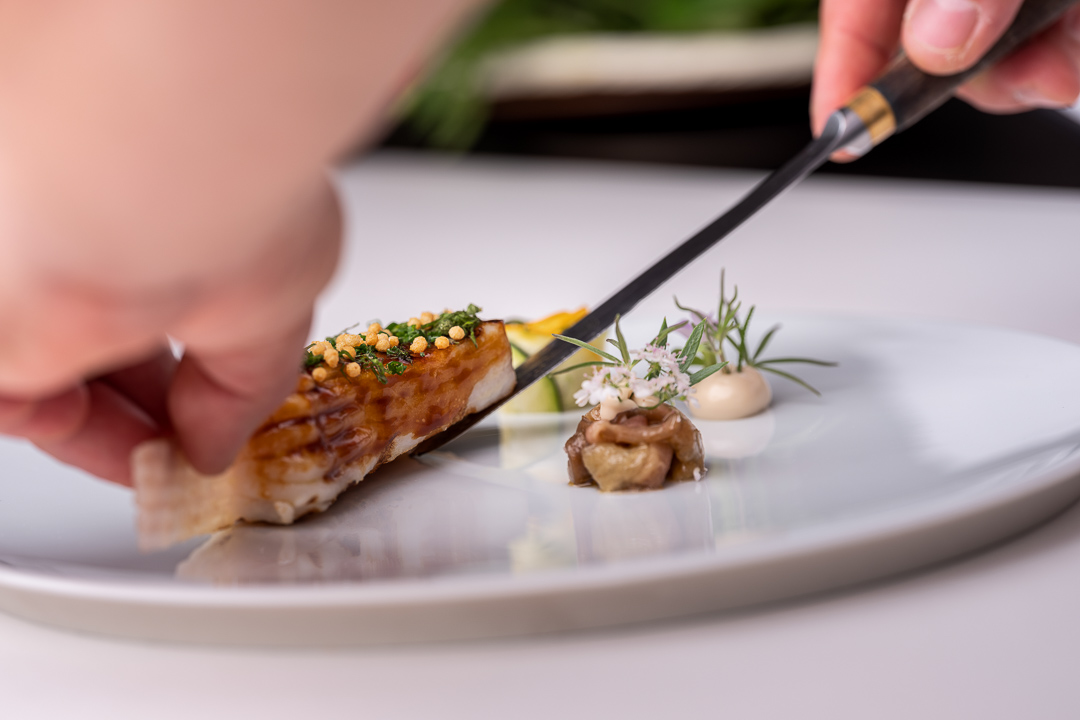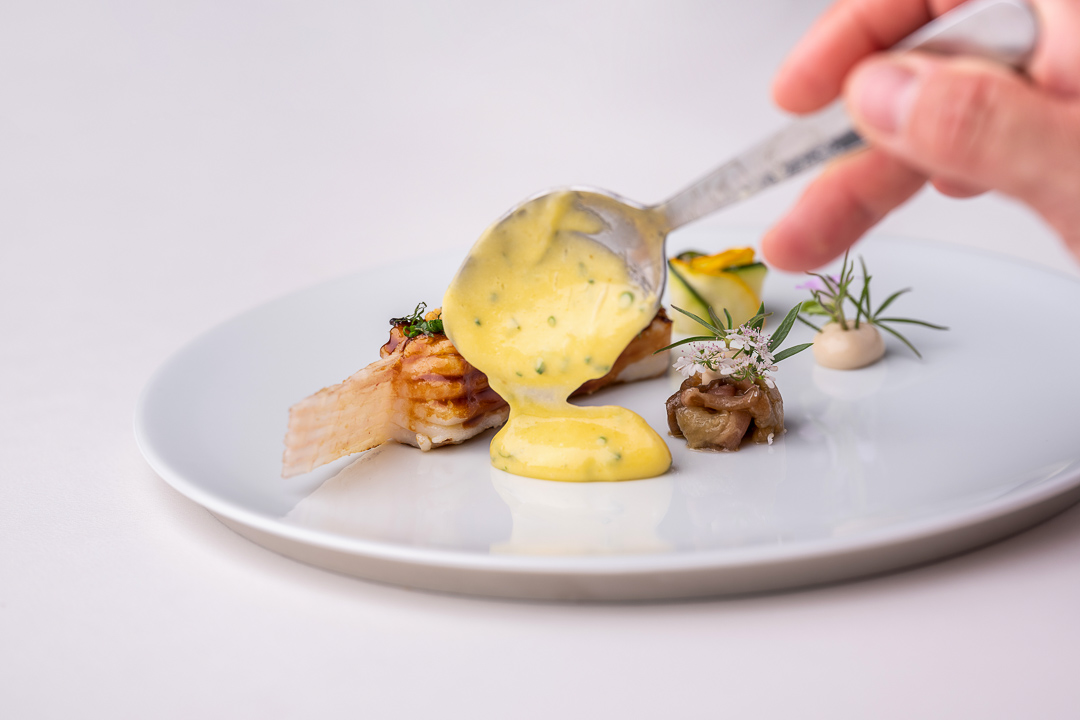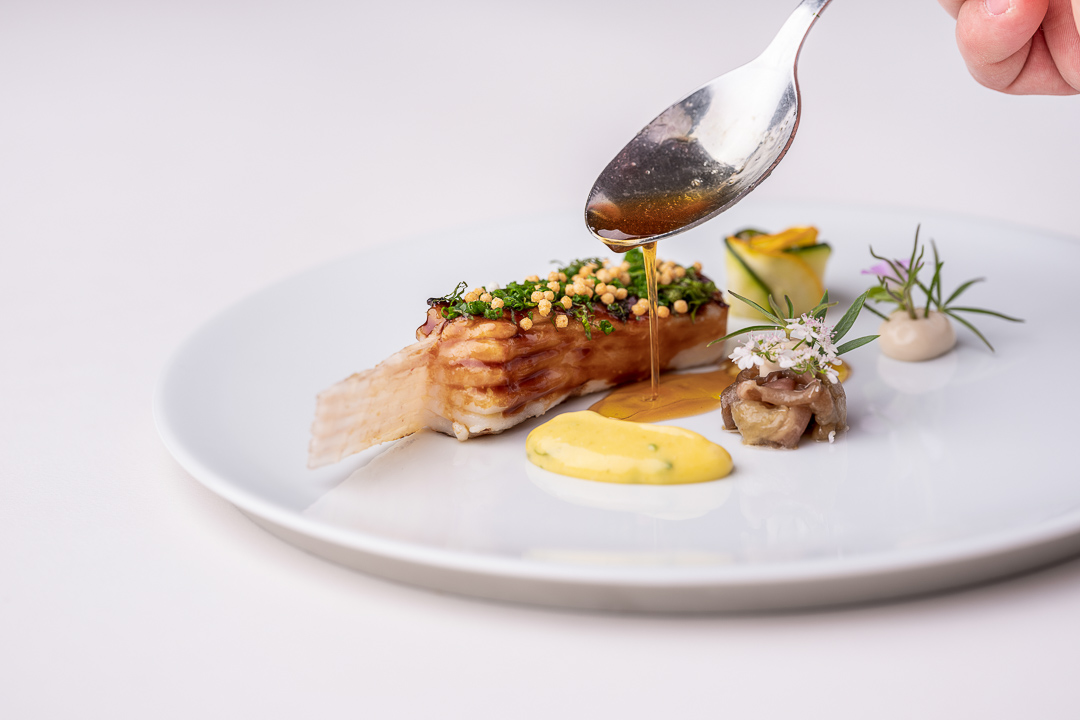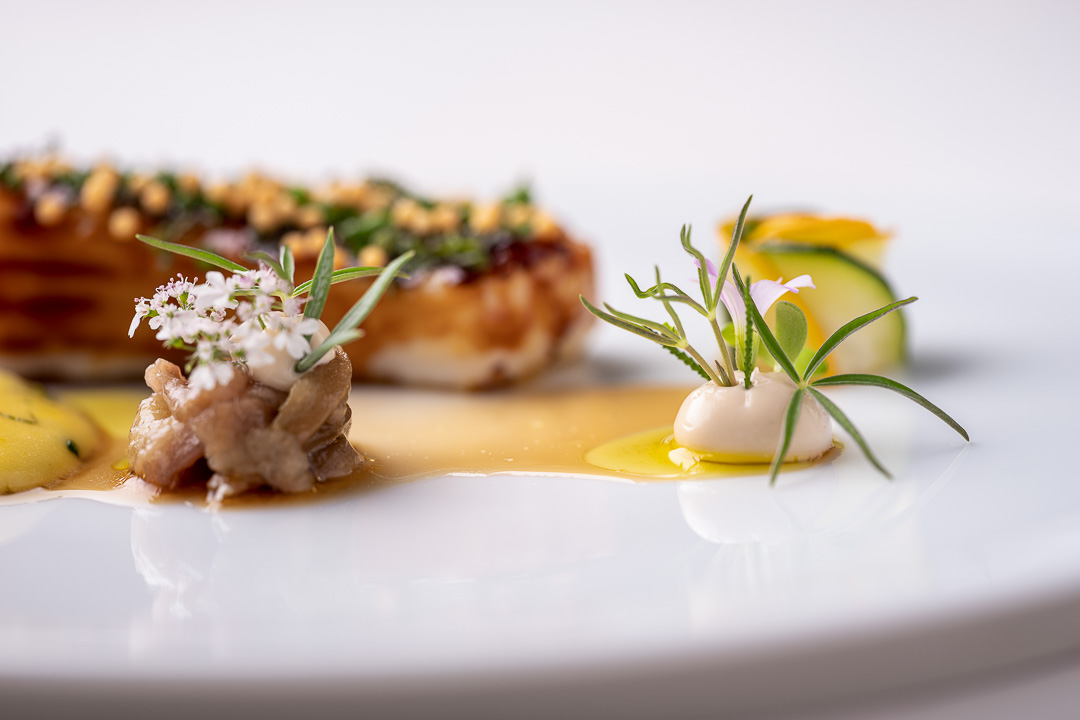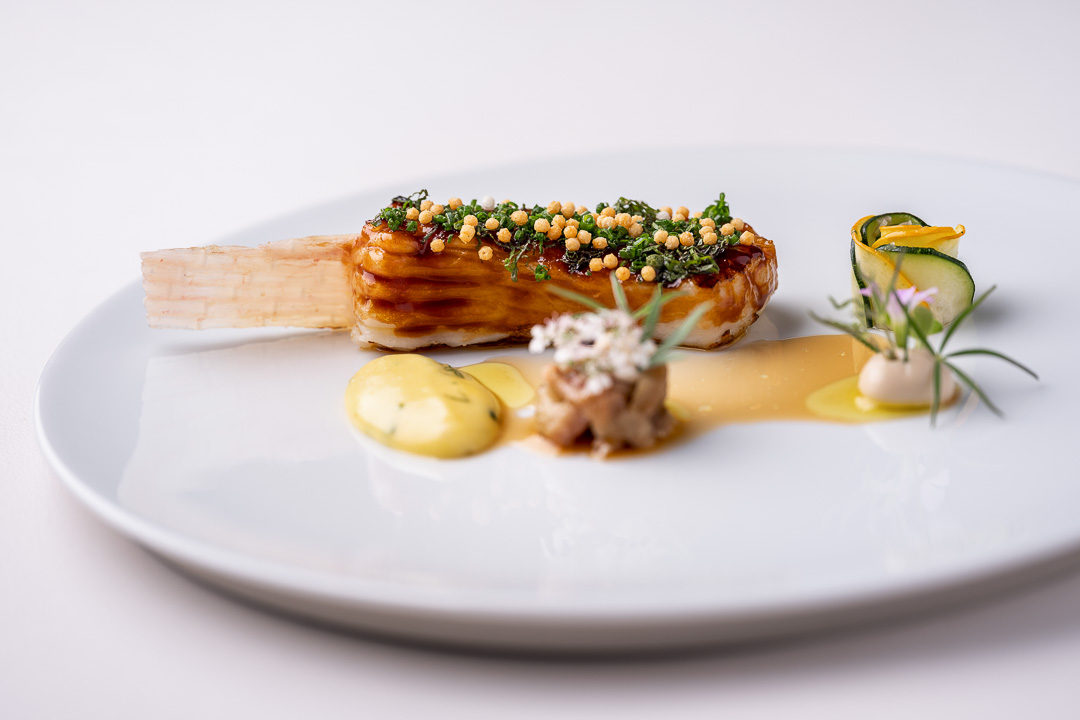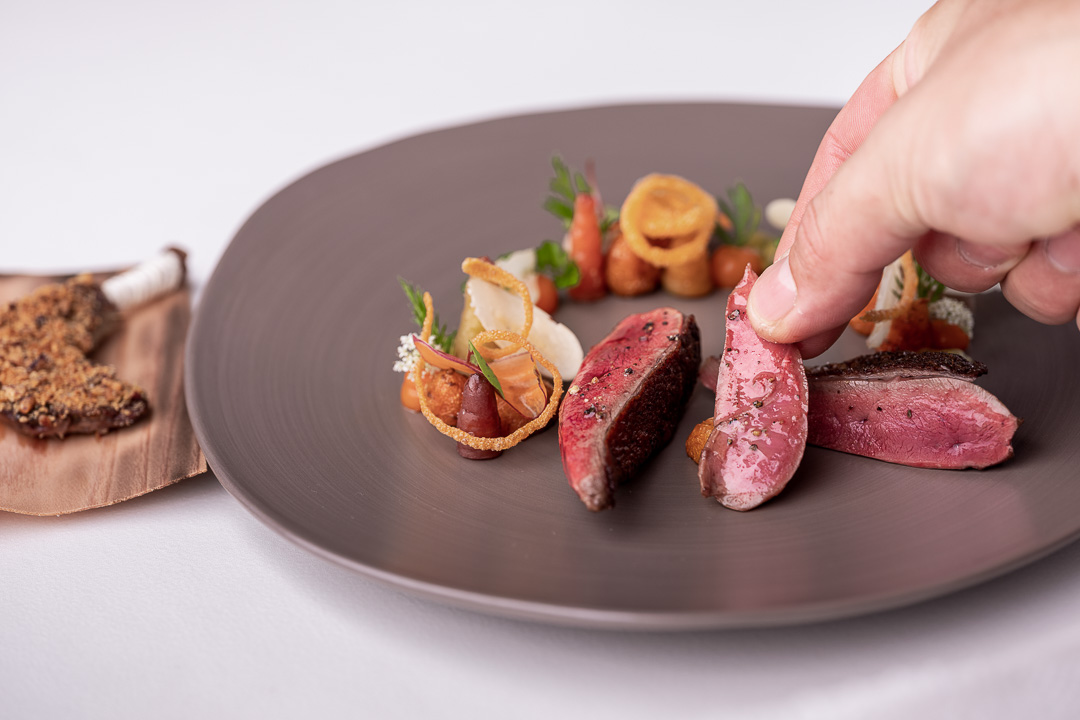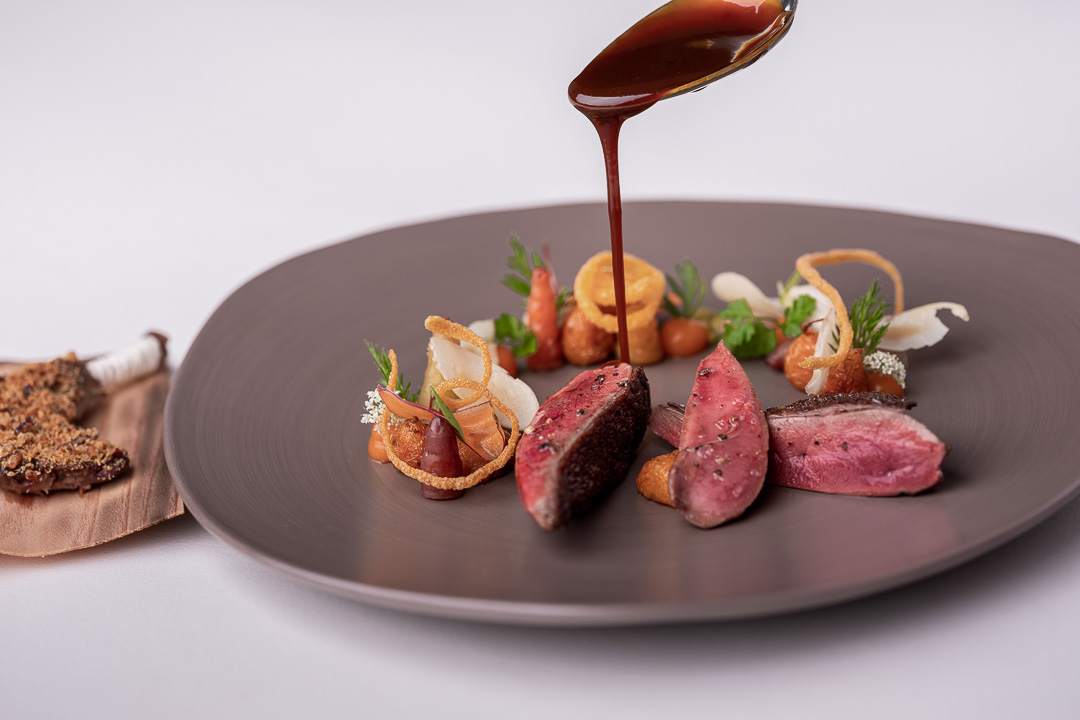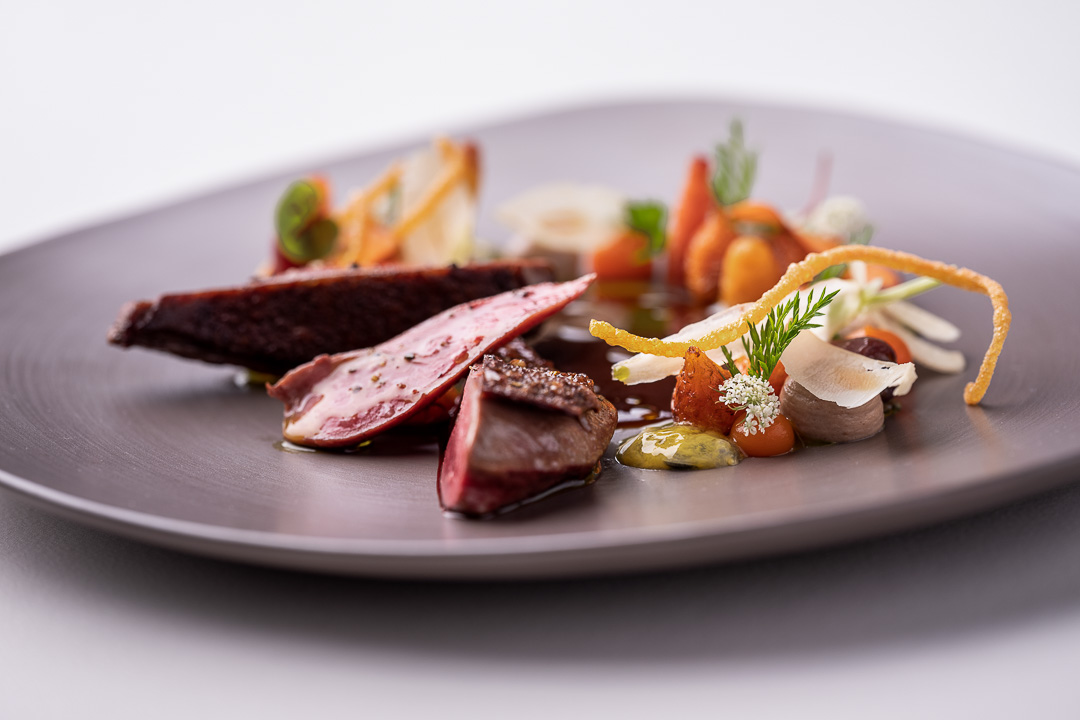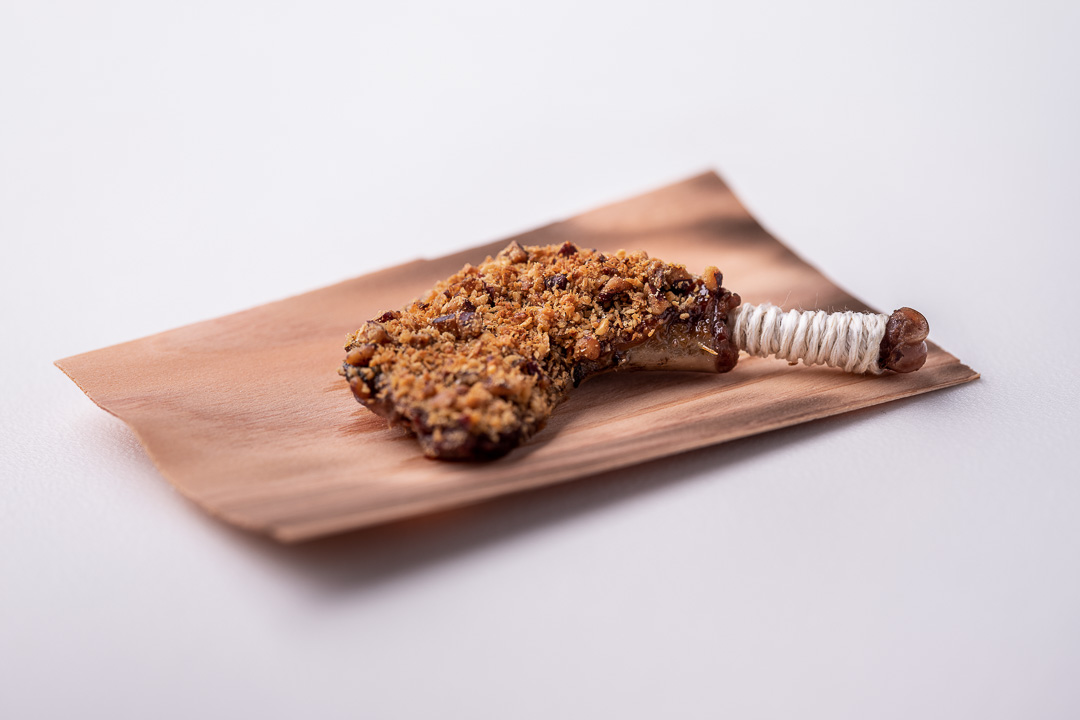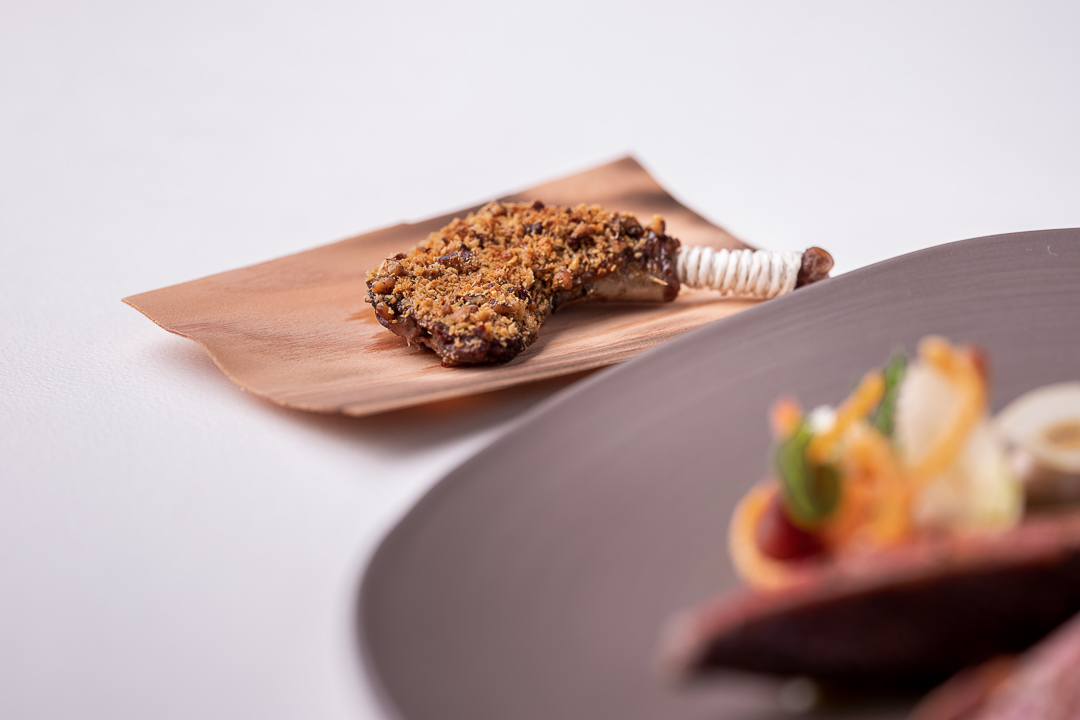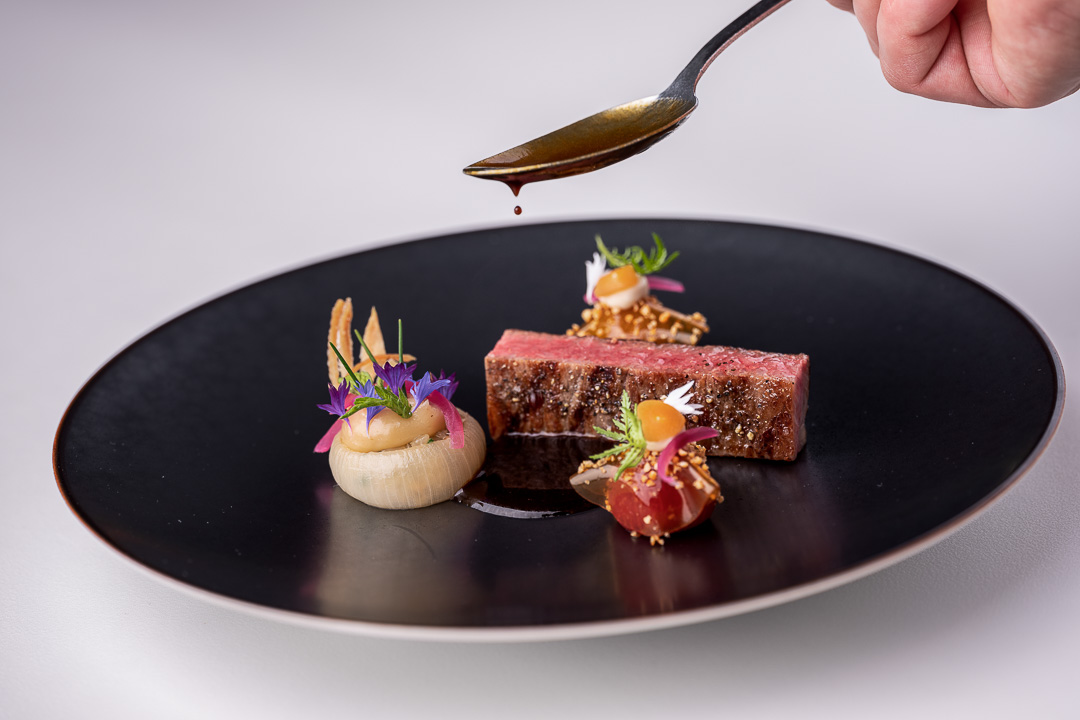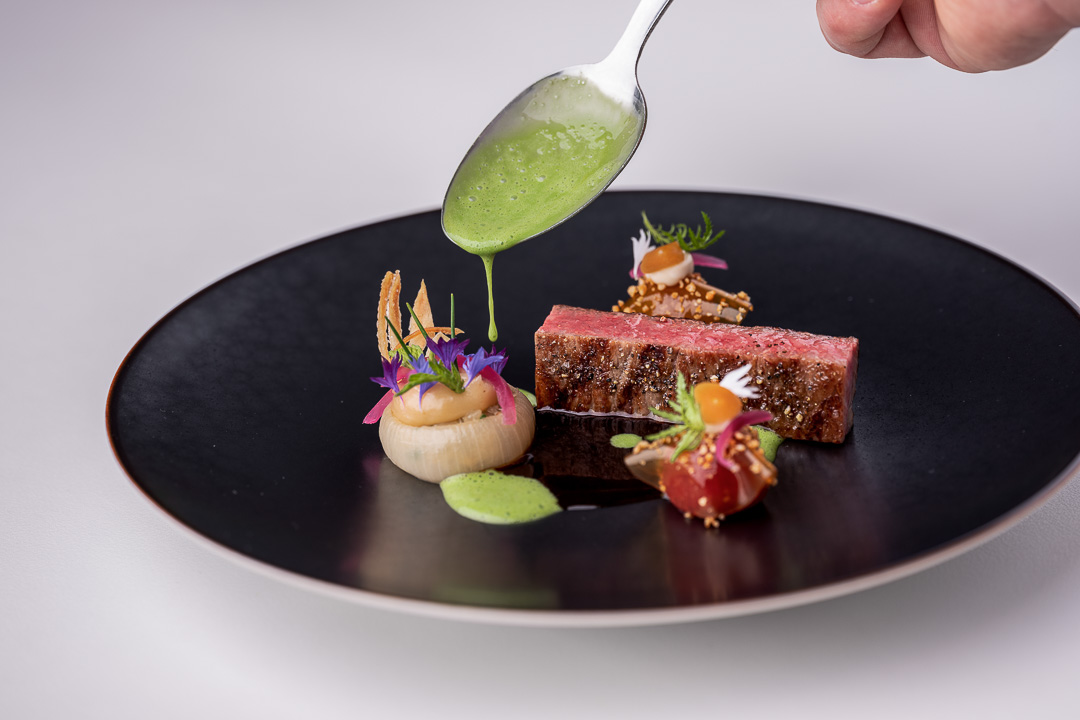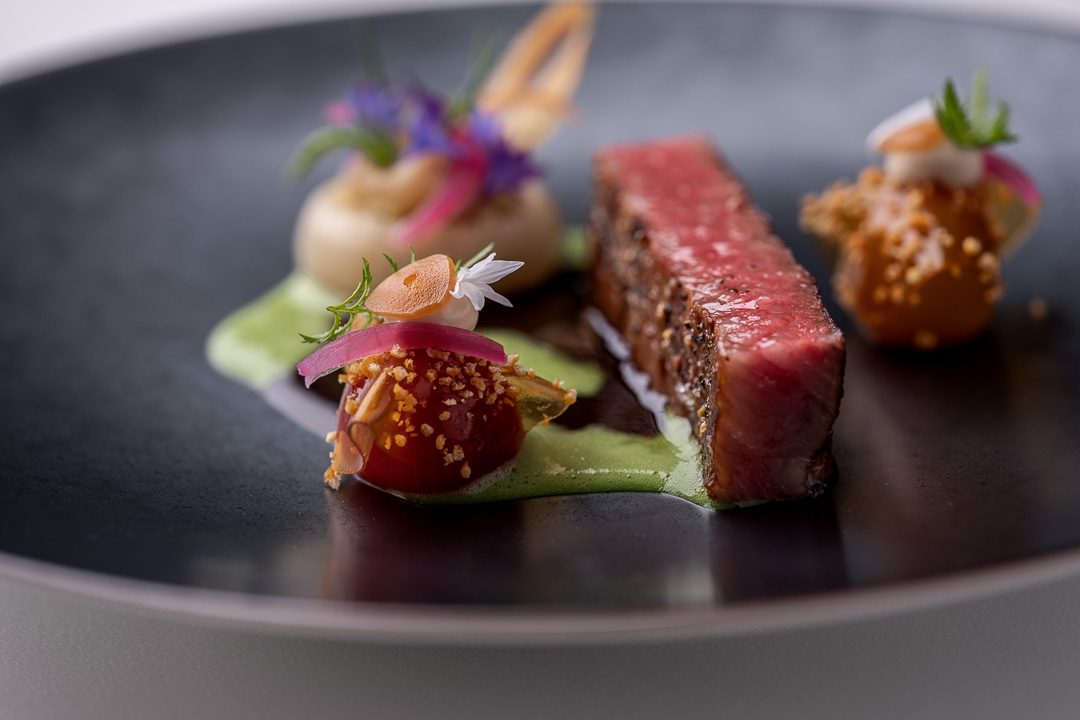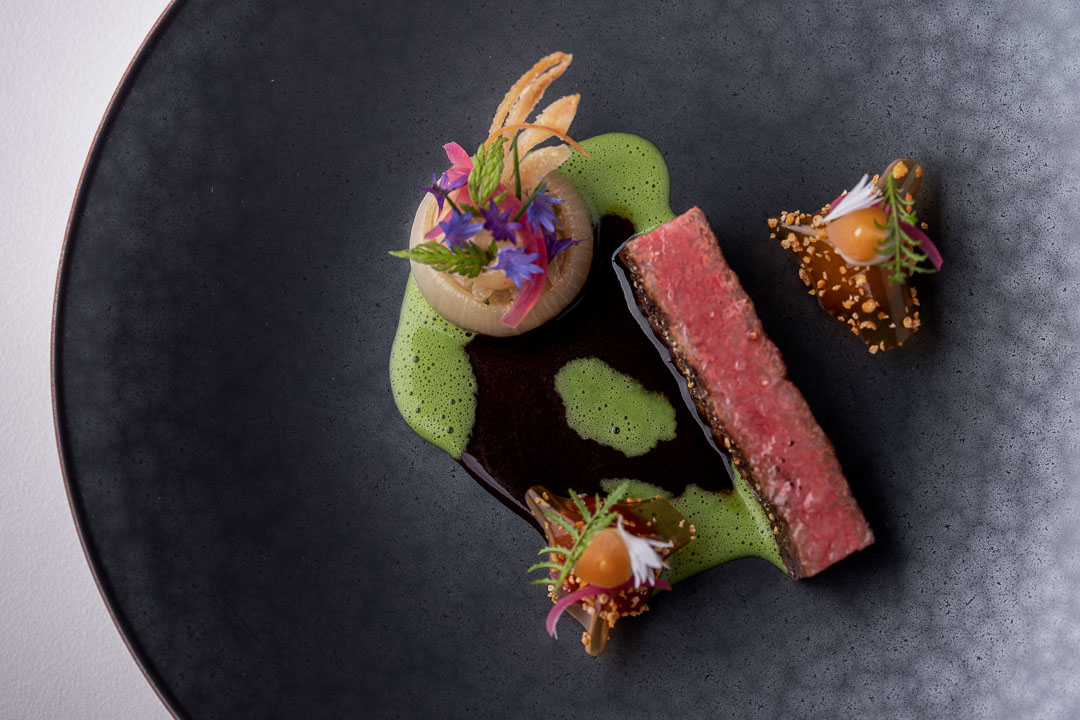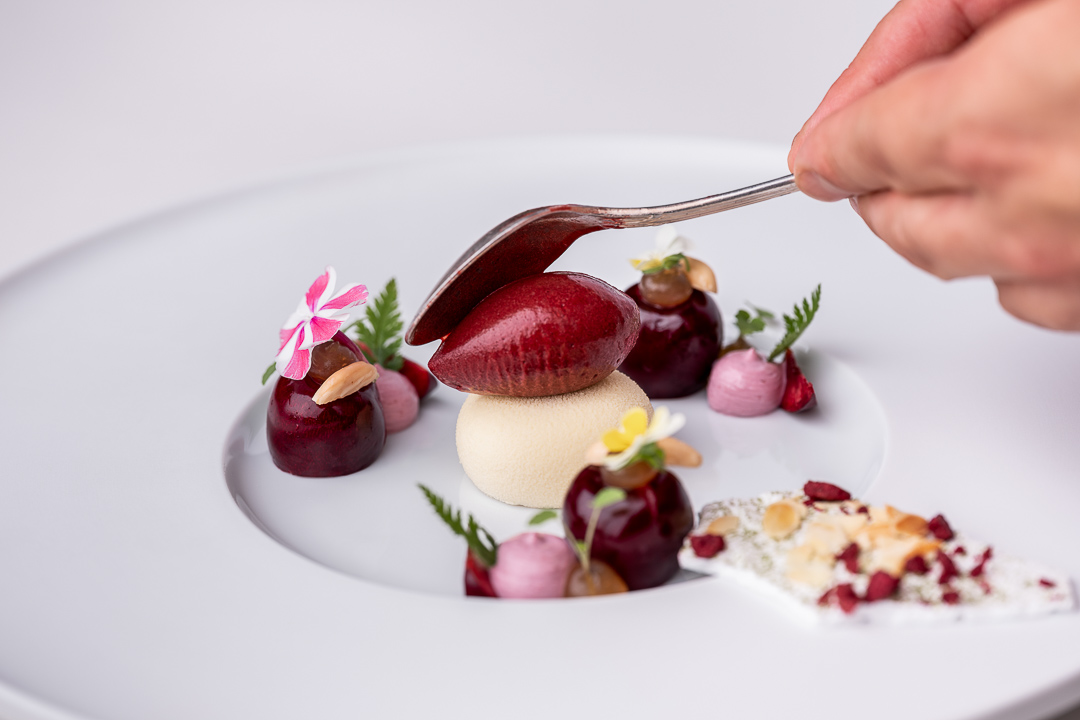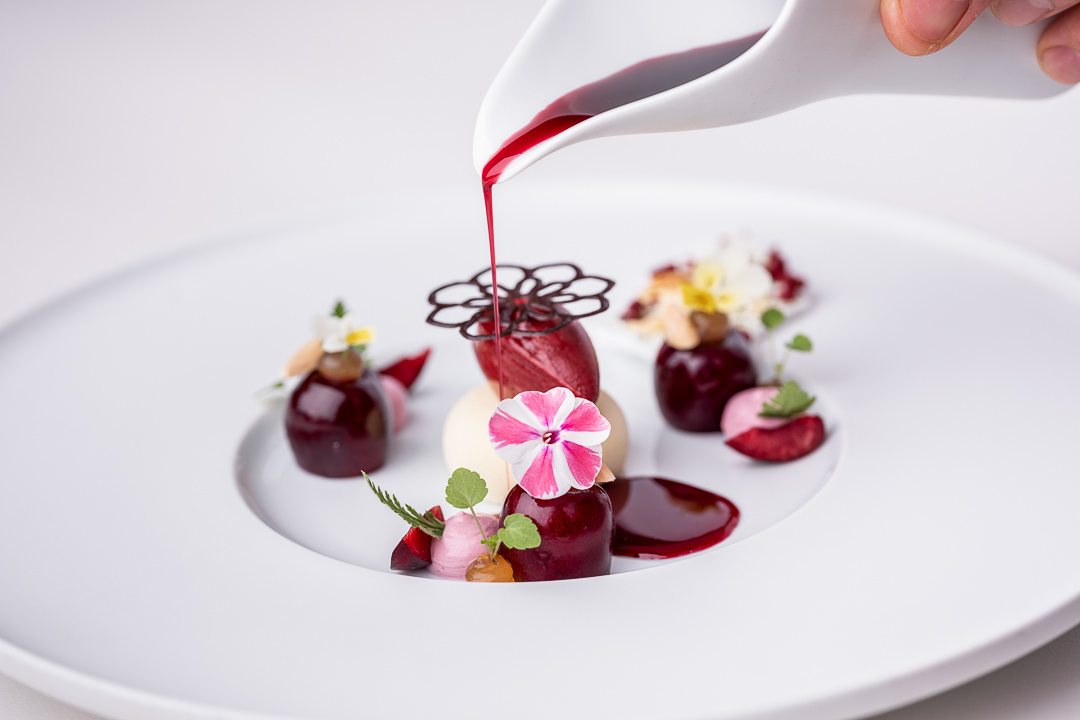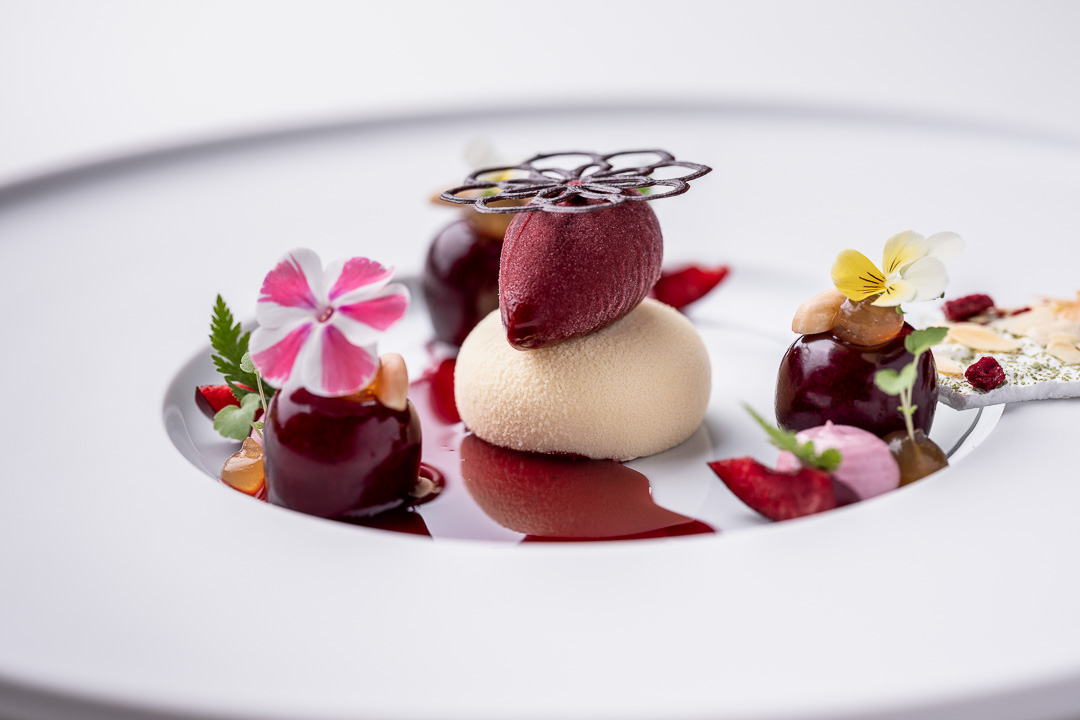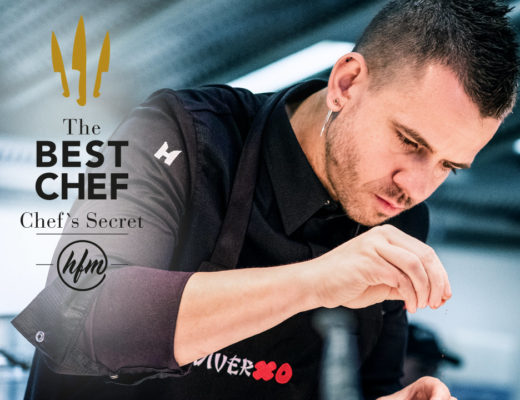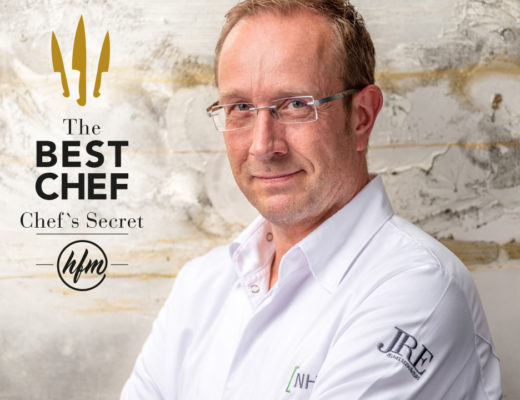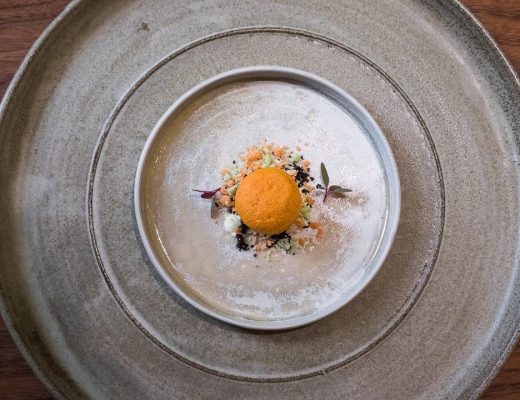The location of Werneckhof by Geisel restaurant in the Werneckstrasse, between Leopoldstrasse and the English Garden, is welcoming and idyllic. The vibrant and creative Schwabing district is loved by many locals, with its nice restaurants and bars, beautiful architecture and historical buildings, and lots of parks and green. It’s almost surreal to have such a tranquil area in a big German city like Munich.
Traditional setting, contemporary cooking
The interior revels in finest Art-Nouveau, leaving guests with the feeling that not much has changed in Schwabing and the rest of the world during the last hundred years. Everything about this gourmet restaurant exudes a cosy, almost private atmosphere, while always giving the sense of effortless perfection. Antique buffet cabinets and chandeliers, elaborate stuccos on the walls, a cherry wood bench along the wall, lead-glazed windows, natural lighting – make it a unique place to dine and celebrate.

Compared to the rather traditional design of the dining room, the cuisine at Werneckhof by Geisel is marked modern, fresh and refined. Starting off with top quality products, the preparations are highly balanced and flavourful. The gourmet restaurant Werneckhof by Geisel was awarded with two Michelin stars and 18 Gault Millau points. In addition, Tohru Nakamura got awarded as chef of the year 2017 by Rollin Pin and in 2015 as chef of the year by Feinschmecker.
Meet chef Tohru Nakamura
Chef de Cuisine Tohru Nakamura, who is half German and half Japanese, has obtained international recognition for the Werneckhof by Geisel with his modern, individual Eurasian cuisine. Before starting in his current position, he worked at several top restaurants like Königshof by Geisel, Vendôme and Oud Sluis.
Together with the experienced and friendly service staff, Tohru Nakamura breathed new life into the Werneckhof. In addition to this, the restaurant is characterized by a relaxed touch that is rare to find in a Michelin-starred kitchen. Maître Markus Klaas and sommelier Tobias Klaas – the highly skilled, yet playful and professional twins that lead the service team at Werneckhof by Geisel – are a true asset to the guest’s dining experience, making everyone feel at ease in no time.
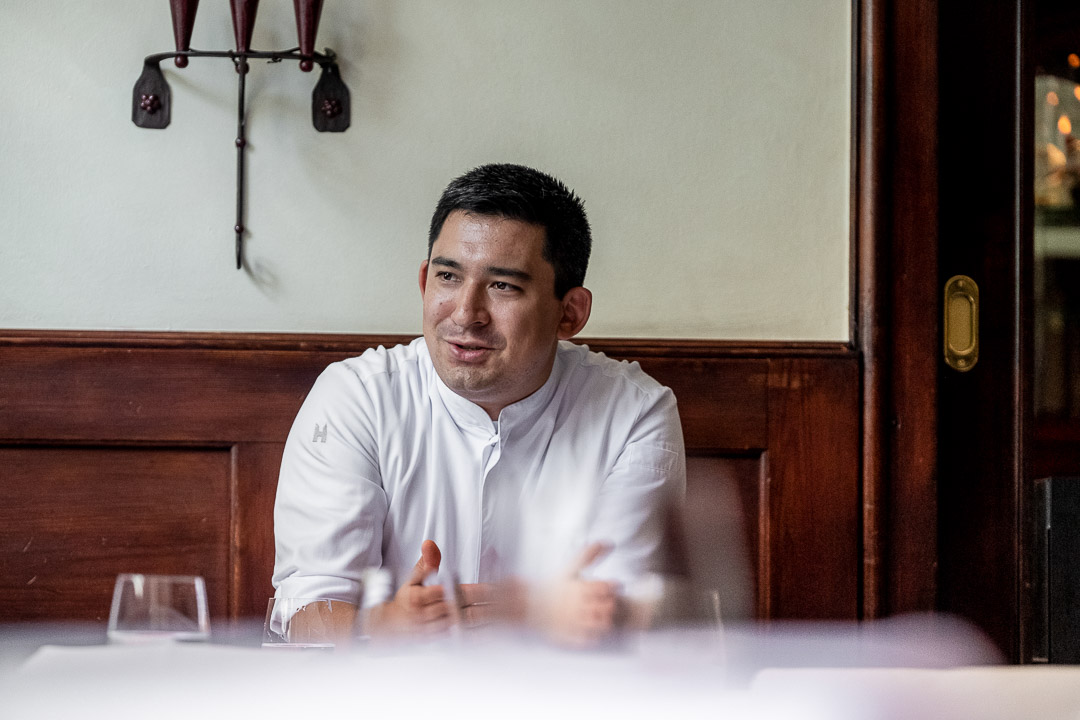
Chef’s Secret (The Best Chef & Hungry for More): Werneckhof by Geisel is truly unique in its offering. A Eurasian cuisine might not be what one would expect when entering the rather traditional Bavarian looking restaurant. How did your unique story at Werneckhof by Geisel took off?
Tohru Nakamura: I started my career as a chef at restaurant Königshof by Geisel here in Munich, which is another restaurant owned by the Geisel family. (Königshof by Geisel is currently being fully renovated ed.). After several years abroad – working with chef Joachim Wissler at Vendôme near Cologne and with chef Sergio Herman at Oud Sluis in The Netherlands – I felt it was time to return to my hometown Munich. When you get the chance to work on a personal project in your hometown, it feels extra special. I really like it when people come to Munich to discover our restaurant, but then discover there’s so much to see and to do here. I find it also important to be there myself, welcoming my guests, as I know that is something they expect when they go to an haute cuisine restaurant like ours.
So, in 2012 I returned to Munich, doing consulting work for the Geisel family. We were thinking about launching a new fine dining concept, but it was very difficult to find a proper location for what we had in mind. When the former chef of Werneckhof decided to leave his position back in 2013, we decided to start our new culinary project there. Maybe it wasn’t exactly the location we had in mind, but the building was already managed as a restaurant of the Geisel family, so we could get started immediately. The architecture and interior are quite traditional, so we did some small changes, yet always stayed true to the history and atmosphere that is so typical for Munich. The restaurant has been here for decades and I like to combine the local heritage, with a modern philosophy and a contemporary cooking style. I’m not so fond of hyper modern restaurants where you lose every connection with the spirit of the place.
However, our decision hasn’t made it easy in the beginning, so managing expectations was challenging. Some guests would want to order a schnitzel or roast beef, as the place looked like a traditional Bavarian restaurant. Others heard that a Japanese chef had come, so they’d expected that we’d serve sushi (laughs). So, step by step we made some changes in the restaurant. The large sumptuous chandeliers were replaced. But it was important to us to keep the respect for the heritage of the place, so we didn’t do huge refurbishments. We only did some subtle changes that have already made it much more modern.
Chef’s Secret: When you started here at Werneckhof by Geisel, did you already have a clear vision on what you wanted to do, or has it been a matter of evolution to come to the concept you present today?
Tohru Nakamura: When I started at Werneckhof by Geisel, it was my first position as an Executive Chef. The years before, I had worked for famous chefs like Martin Fauster, Joachim Wissler and Sergio Herman, who all had an impact on my cooking. You’re used to execute their signature style to perfection. But when you start off as an Executive Chef yourself, you need to learn how to develop your own style. You need to explore how you want to cook your meat or fish, what kind of dishes you want to serve and how you want to do the plating. Defining your own style is something you need to do, because you can and because it’s what is expected of you in the position of Executive Chef.
So, I started from what I had learned from my mentors and combined it with my personal background – being half German, half Japanese – and my vision on the future. When I look back now, I guess I wanted to show too much of my skills and knowledge in one dish. I thought that it’d show what I was capable of and I’m sure that I did manage to make our guests happy. When I worked at Sergio Herman’s restaurant, I had learned how to combine many flavours and textures into one harmonious dish. But after a while, I realised the problem with too much components and complex preparations, is that it’s hard for people to remember what the dish was all about. Today I think we can say our cuisine is much more focused. We reduced the number of elements and explore things to perfection. It’s all about taste, quality and balance.
Chef’s Secret: You’re half Japanese, half German. How is that background reflected in your cuisine?
Tohru Nakamura: Many people ask if I feel more Japanese or more German. I must say that I feel both. My mother is German, my father is Japanese, so I grew up with both cultures. In my opinion fusion cuisine starts from a certain cuisine – like the French, the Italian or the German – to which other, more exotic influences are added. That’s different from what I’m doing, as it’s very logical to me to combine the German and Japanese cuisine. It’s not that I start from one or the other. When I was young, there was soya sauce on the table, irrespective we’d had German or Japanese dishes on the menu at home. Or combinations like tomato and miso are also very normal for me. Luckily the European and Asian cuisine match very well. Otherwise it would have been difficult for me to put my philosophy into practice (laughs).
Before my career at Werneckhof by Geisel started off, I went to Japan to get a more profound knowledge of the local cuisine. Because of my background, I already had a strong connection with Japan. But then I really took the time to learn more about the way the Japanese chefs are managing their cuisine, so I wasn’t just after their recipes. I was very much interested to learn how they would treat their products and how they’d organise the work in the kitchen. So just like a little kid, I kept asking them many questions. I learned how things are different in Japan. Compared to the classic French cuisine there are not that many side dishes to prepare. So young chefs will rather help with washing the rice, instead of doing the vegetables or cold preparations which is the case in Europe. Next to that, the way Japanese chefs will treat the fish is very different. They’re much more focused and cautious. They take their time to filleting the fish perfectly, with so much attention to detail. While in the traditional European cuisines it’s more about showing how fast you can work and how many pieces of fish you can prepare in the mise en place, instead of thinking about every cut and handling.
Another difference also exists between the classic French sauces and dashi. While a good European sauce takes a lot of time to cook, it’s the other way around with dashi. The latter is much simpler and takes no longer than 1,5 hours to cook. But the basic ingredients that are used to make the dashi require much more time for the production due to the processes of aging and fermenting that are often used.
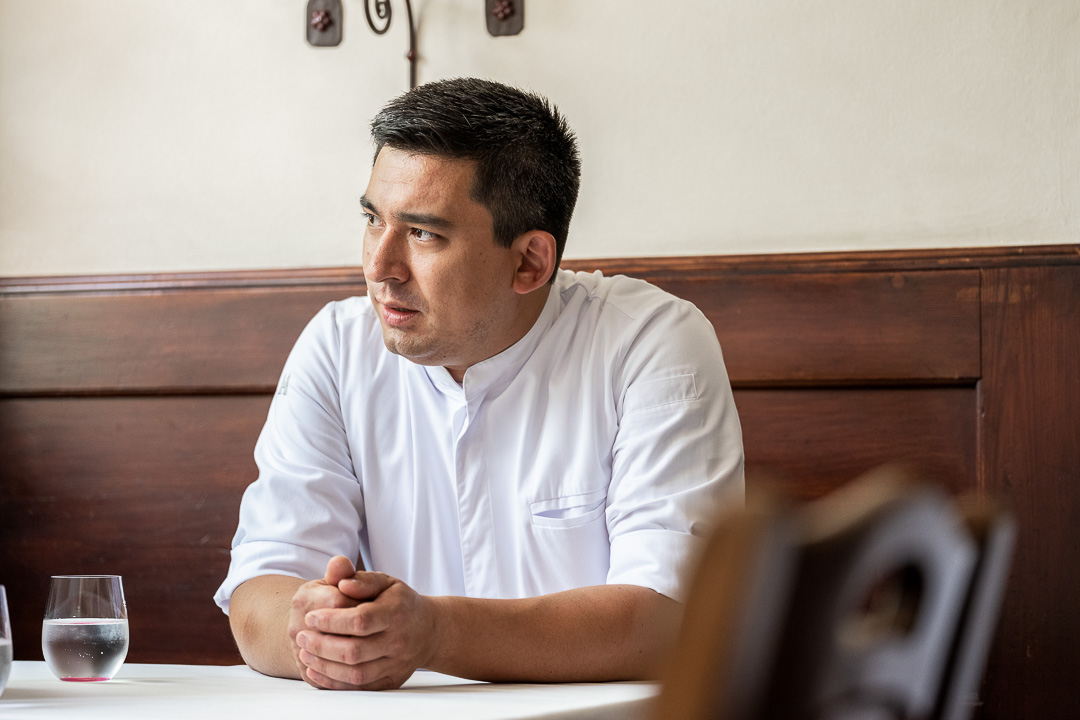
Chef’s Secret: Do you have a signature dish, a favourite dish or certain preparations that characterize your cooking style?
Tohru Nakamura: We don’t have a certain signature dish. Maybe I feel a bit too young to already have such an iconic signature dish. We are still developing, so most dishes are continuously evolving. We always try to create new dishes and new menu’s without repeating ourselves to much. Of course, we stay true to certain flavour combinations, but that doesn’t mean we need to create the exact same dish. Let’s take asparagus for example. We really have top quality asparagus here in the region of Bavaria. So, when the season starts, we start thinking about the best possible combination with that top product as a solid basis. Other ingredients that we often use are ponzu, fresh wasabi, Japanese ginger shoots and many more. And we always have the Wagyu on the menu, as well as an alternative meat dish for guests who prefer something else. Fresh water fish – from a very good supplier from the area – is also included in each menu. So, let’s say that many people like to discover new dishes and that they know that our menu changes regularly, but on the other hand they can be sure the best ingredients of the season will always be integrated in the menu of that moment.
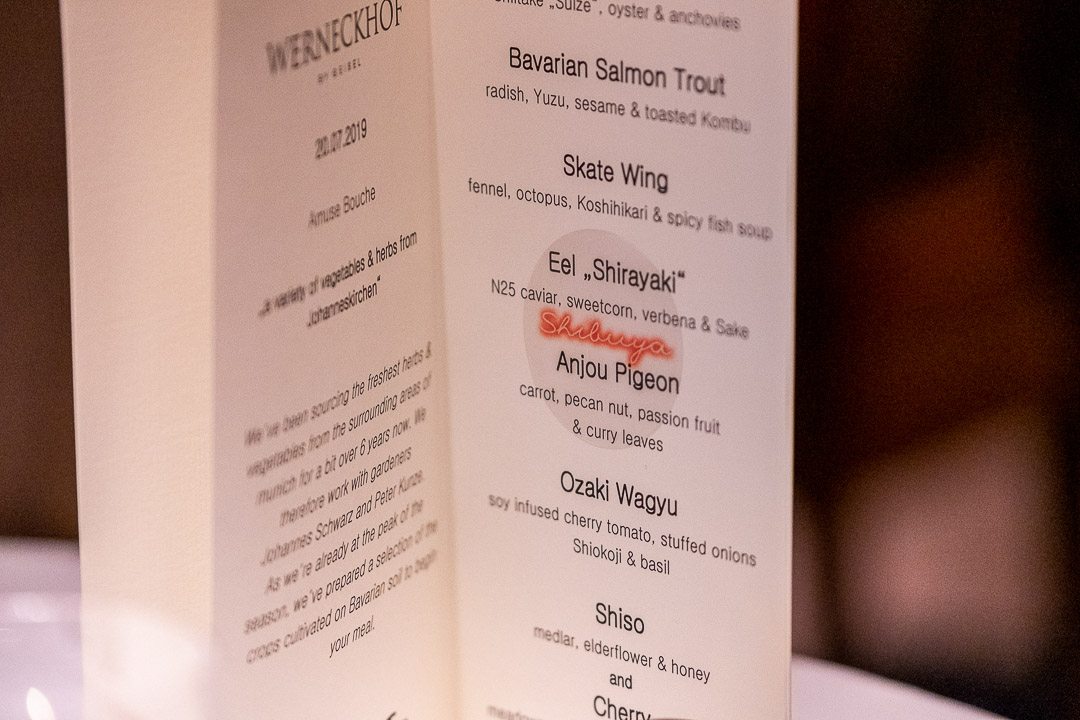
Chef’s Secret: Isn’t it difficult to come up with new ideas each time? Especially if you’re changing the menu regularly?
Tohru Nakamura: It is always a challenge to find inspiration. With this kind of structure, you can’t fall asleep creative wise. Sometimes it happens that I can’t immediately come up with a new creative idea, but then we sit down with the key team and we organise a little brainstorming session. We always start from a certain frame and both the seasons as the garden, where we get our fresh vegetables and herbs, can inspire us. In fact, the garden inspires us to such an extent that we’ve organised for the fourth time our event “The Garden Table” in July. During one week, we move our restaurant and kitchen to Botanikum, the Green house and garden of Johannes Schwarz, which is a green oasis not far from Munich. Here we serve a “from garden to table concept” for 40 guests in a sixcourse menu.
But there are also other things that can give me inspiration for a new menu, such as the trip I’ve made to Barcelona with my Sous Chef last week or just reminiscing with people. I also have a collection of 200 cookery books at home and sometimes all I need is just to read them again to call back certain products to memory to come up with a new idea for a dish. According to me, the most important thing is to have an open mindset. Just be relaxed and feel inspired by all the beautiful things around you. You can’t force creative work. The only thing you can force is the creation of a frame within which you can be creative.
Chef’s Secret: So, what’s next? What are your further dreams and ambitions as a chef?
Tohru Nakamura: As a chef, I think my main goal is to improve constantly my cooking skills and to see some sort of evolution in each menu. I think it’s normal that you may never be completely satisfied with your current skills and performance, but you must strive to be satisfied with what you bring today. Of course, we also appreciate the magic of the Michelin stars and we try to achieve a higher rating, but that’s not our main goal. It is the experience of the guests that we focus on and that is our priority.
A menu full of exciting flavours, inspired by the best of Europe and Asia
Guests can choose between a five or seven course menu at Werneckhof by Geisel, accompanied by a wine or sake pairing, or a selection of non-alcoholic beverages.
To refresh the palette we sample a sparking sake, which is a nice alternative to the traditional champagne, and matches the context perfectly.
We start with a selection of appetizers made of vegetables and herbs from the Johanneskirchen garden. The team of Werneckhof by Geisel has been sourcing the freshest herbs and vegetables from the surrounding areas of Munich for six years now. Therefore, they work with gardeners Johannes Schwarz and Peter Kunze. At the peak of the season, they’ve prepared a selection of the crops cultivated on Bavarian soil to begin the meal.
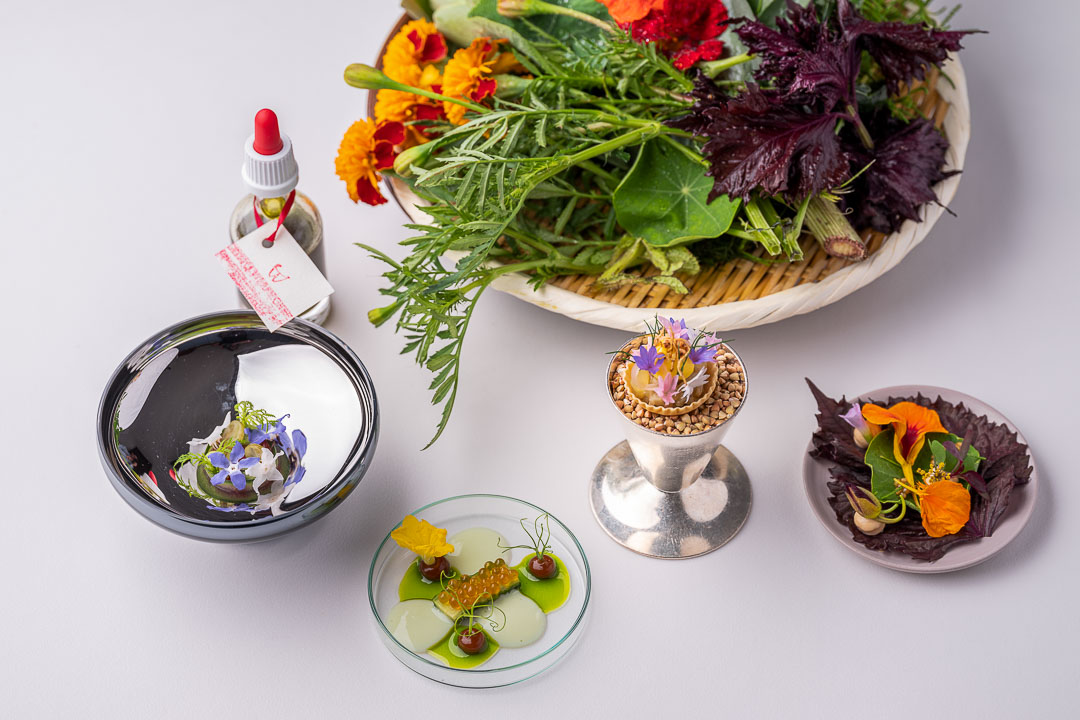
Watermelon tatar, cucumber, melothria & margherita shots.
Artichoke salad served in a crispy tartelette, Japanese crème fraiche, kimizu, soba, cornflowers.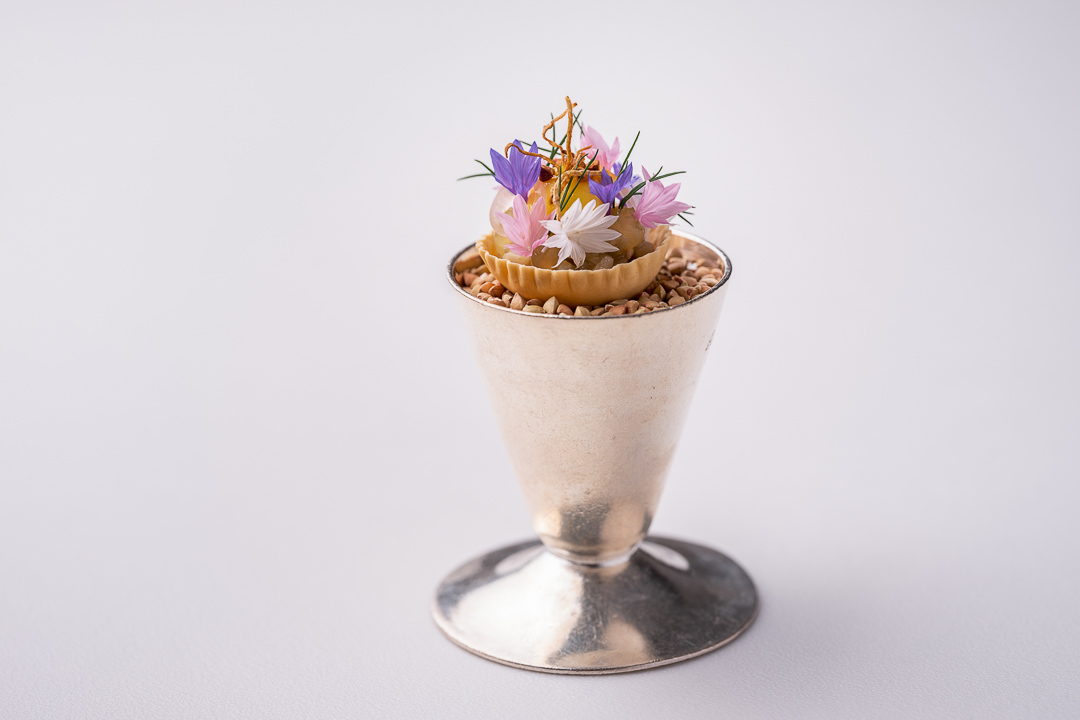
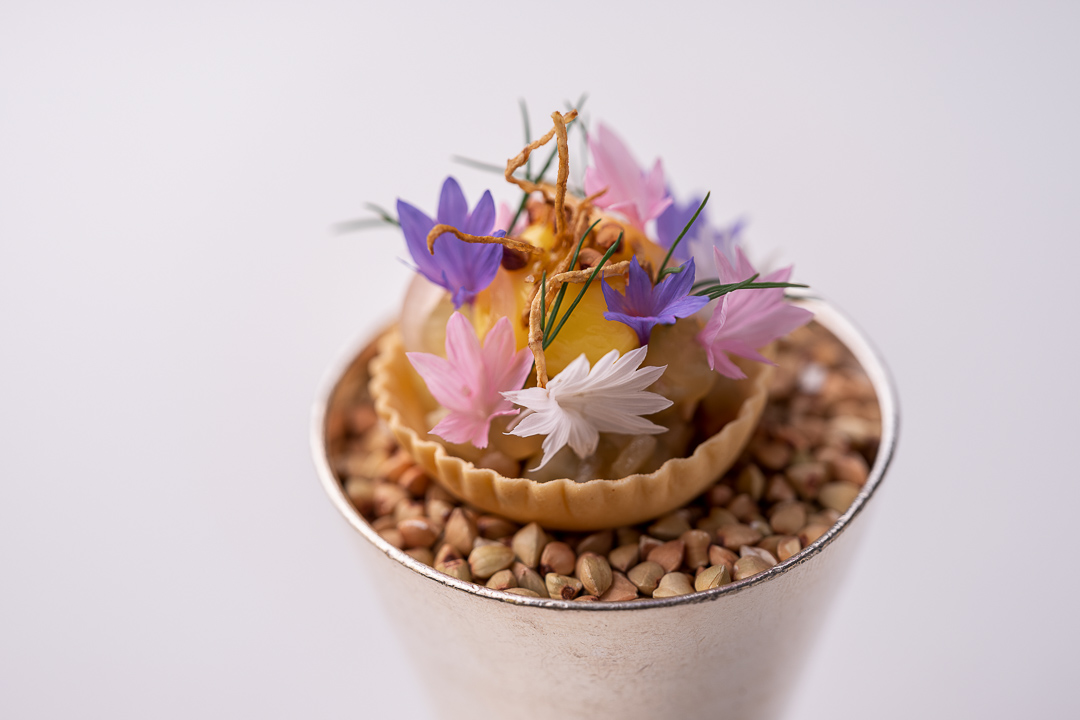
Japanese cucumber, miso, char caviar, edamame vichysoisse, parsley oil.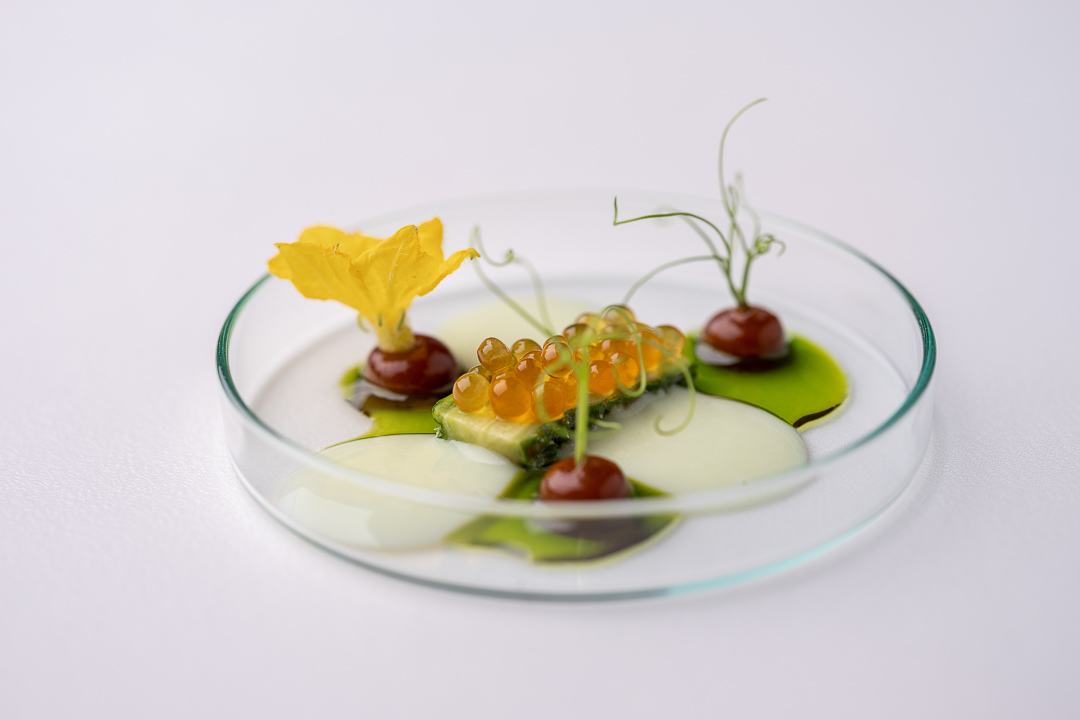
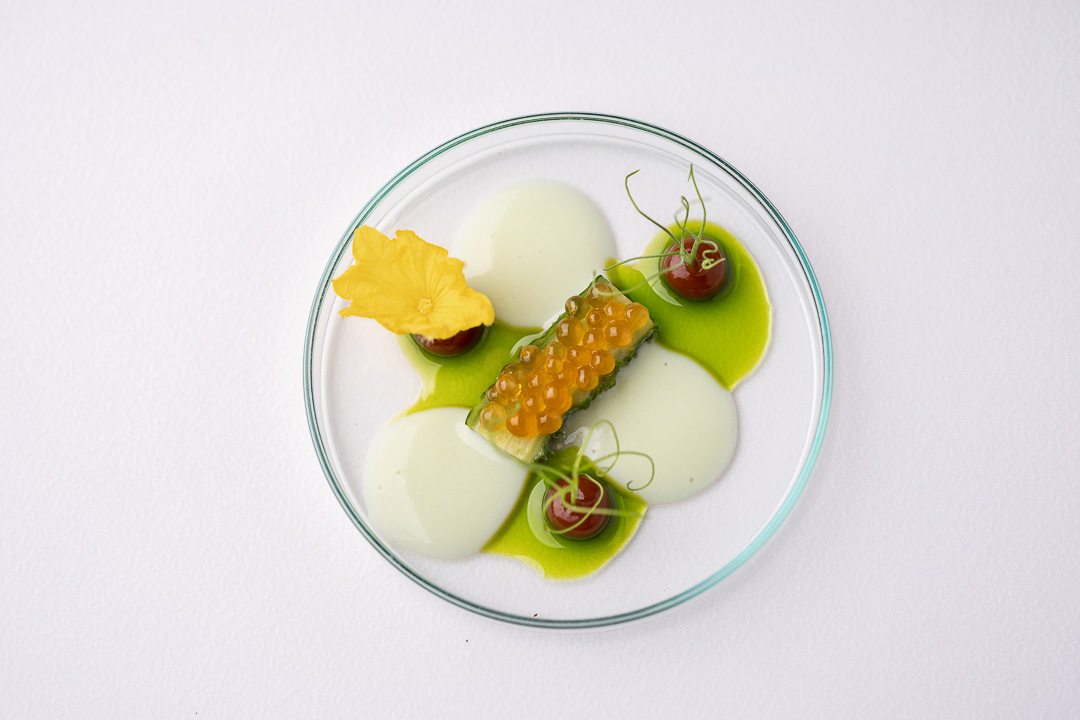
Nasturtium taco, shiso leave, broccoli flower, pickled mustard seeds, XO emulsion, rocotto chilli oil.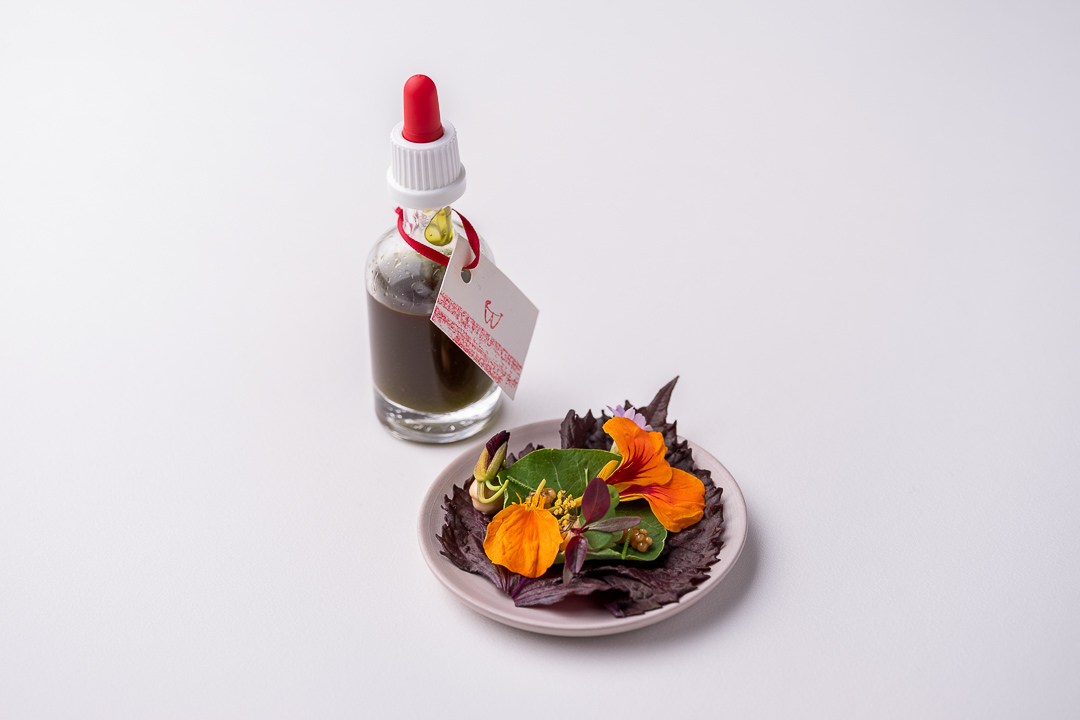
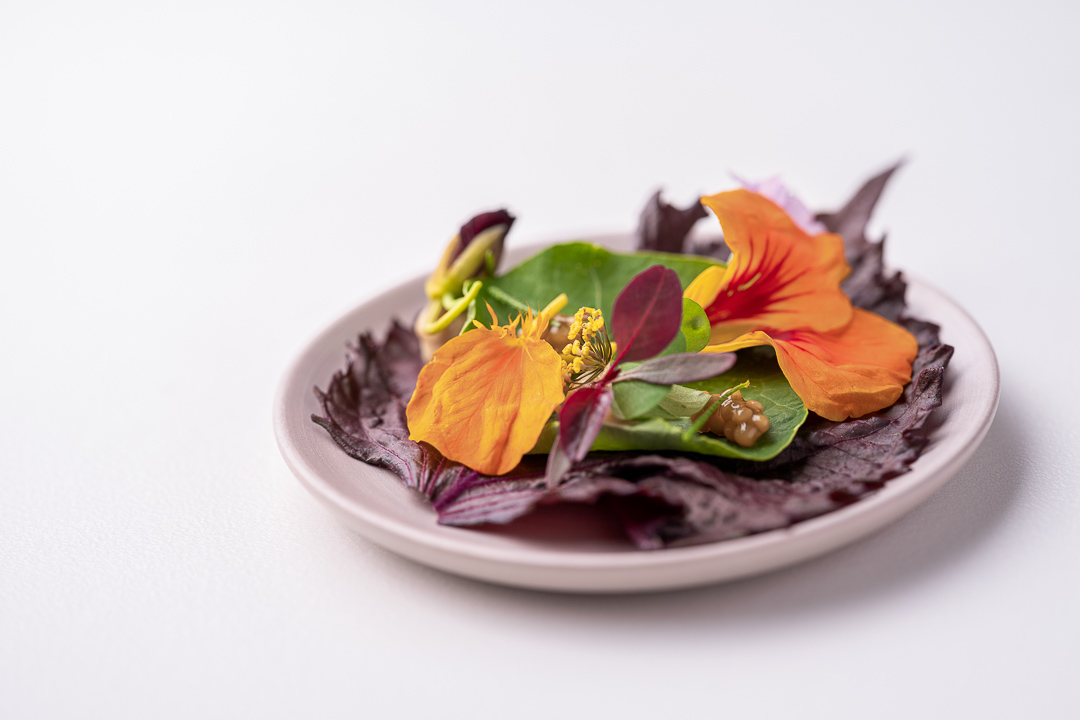
At Werneckhof, they serve bread of the best local bakery close to Munich by Arnd Erbel, accompanied by Japanese flavoured butter and ricotta, as well as chive oil which is a popular taste in the Bavarian cuisine.
Balfégo tuna, lilies, avocado & ginger.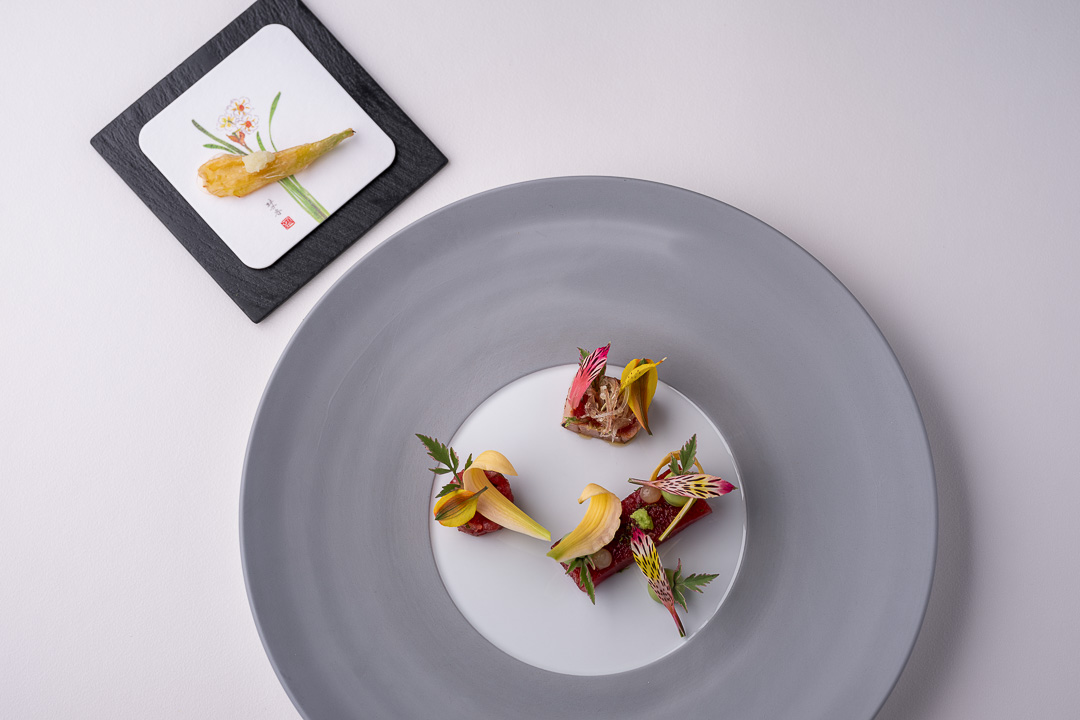
Langoustine, shiitake „Sülze“, oyster & anchovies.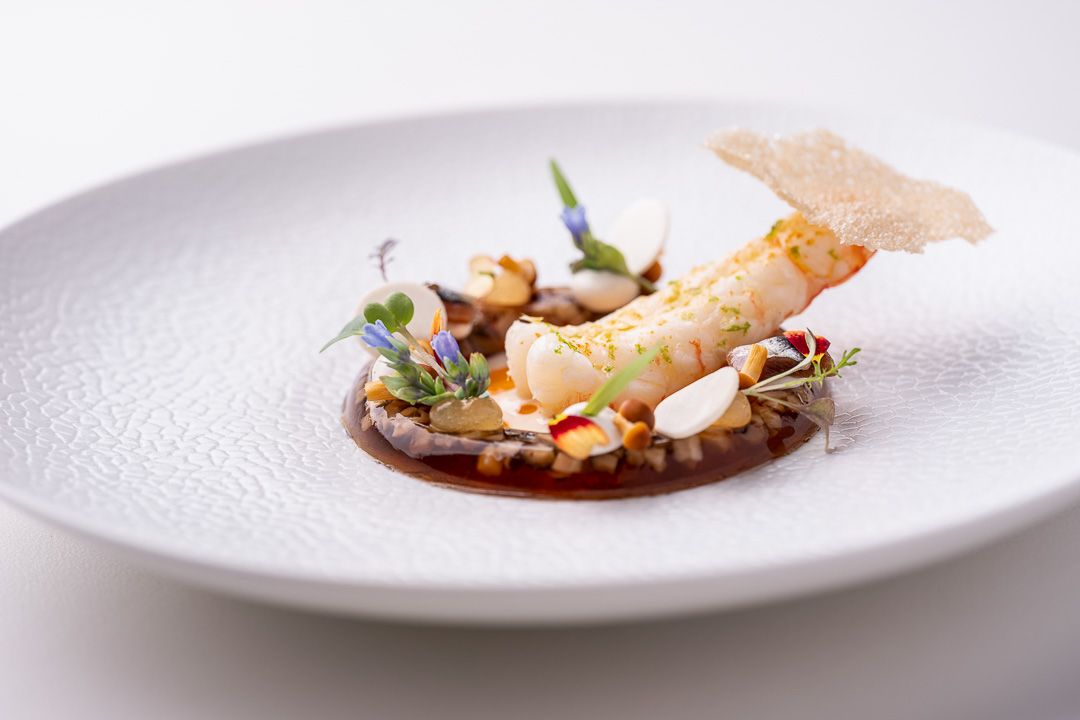
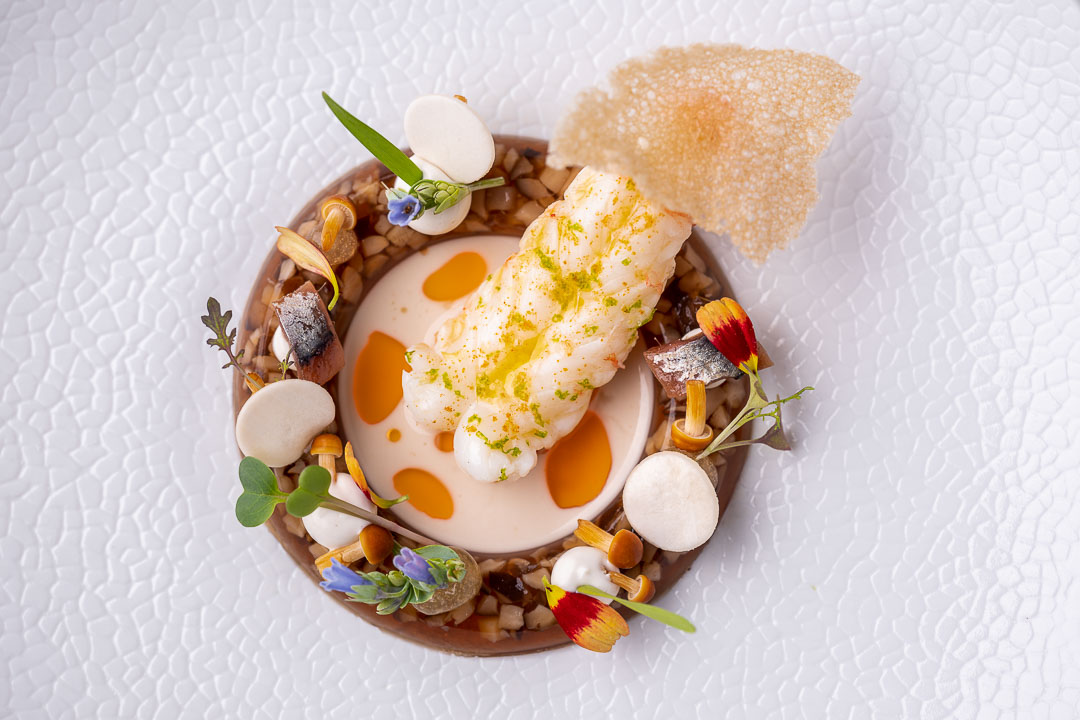
Bavarian salmon trout, radish, yuzu, sesame & toasted kombu.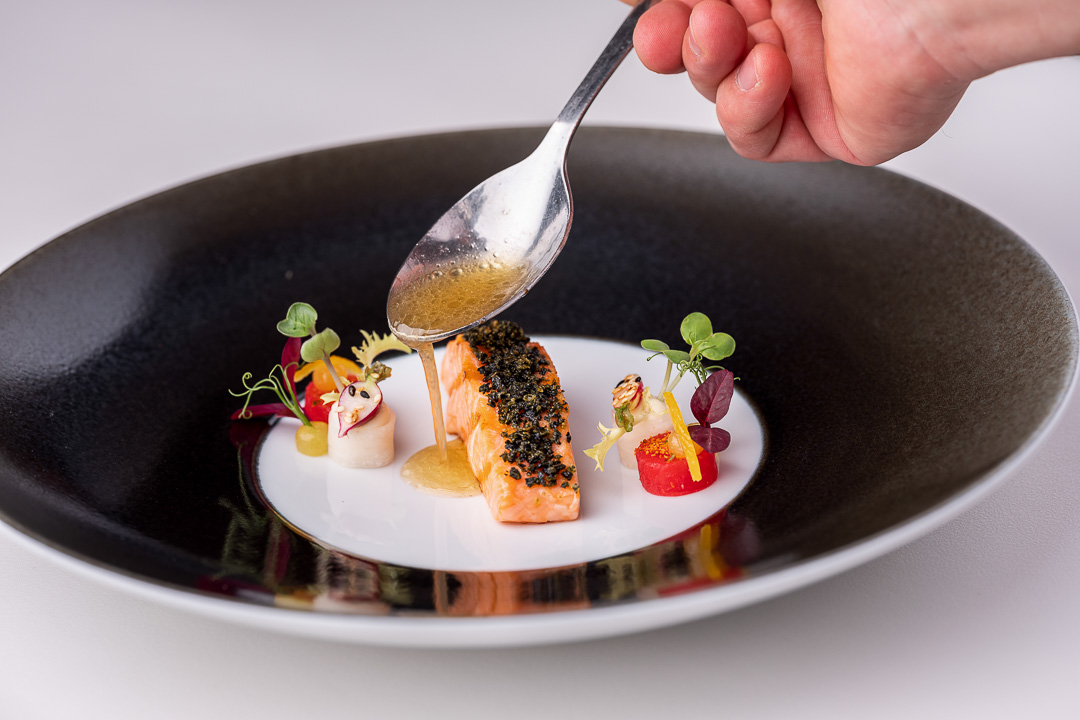
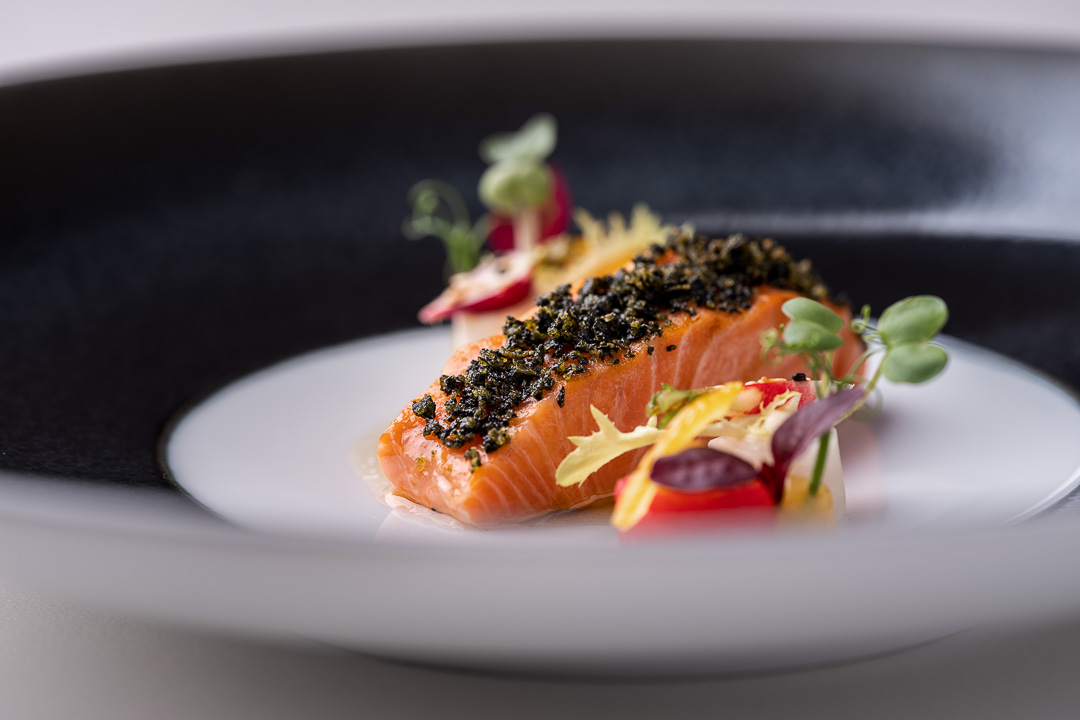
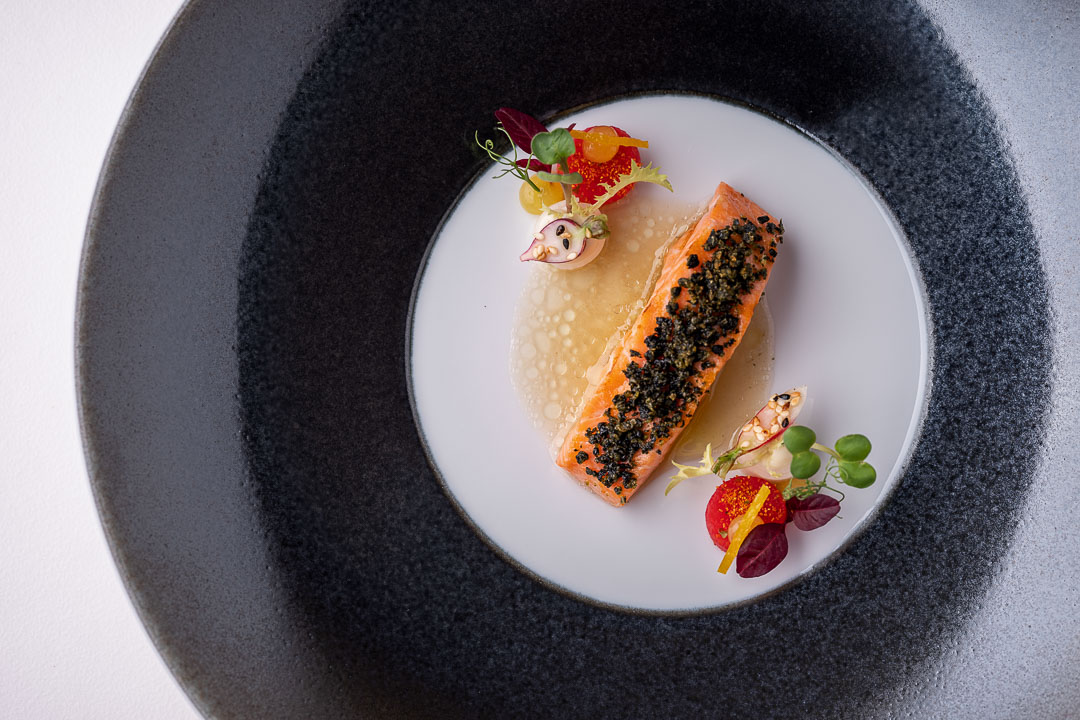
Skate wing, fennel, octopus, koshihikari & spicy fish soup.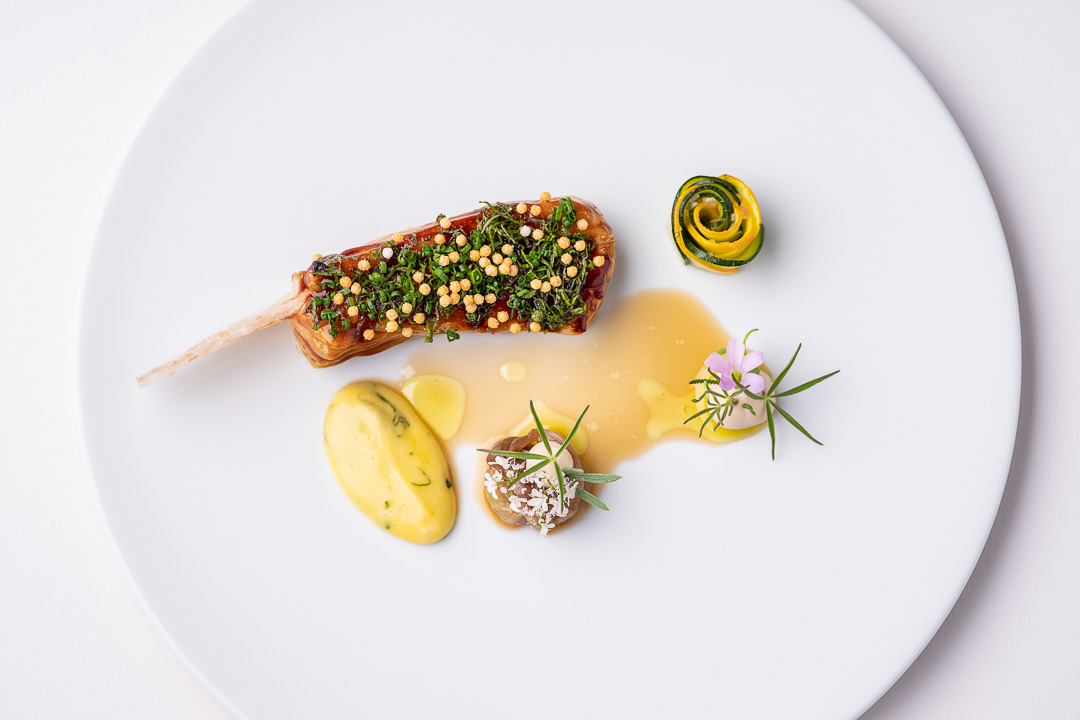
Eel „Shirayaki“, N25 caviar, sweetcorn, verbena & sake.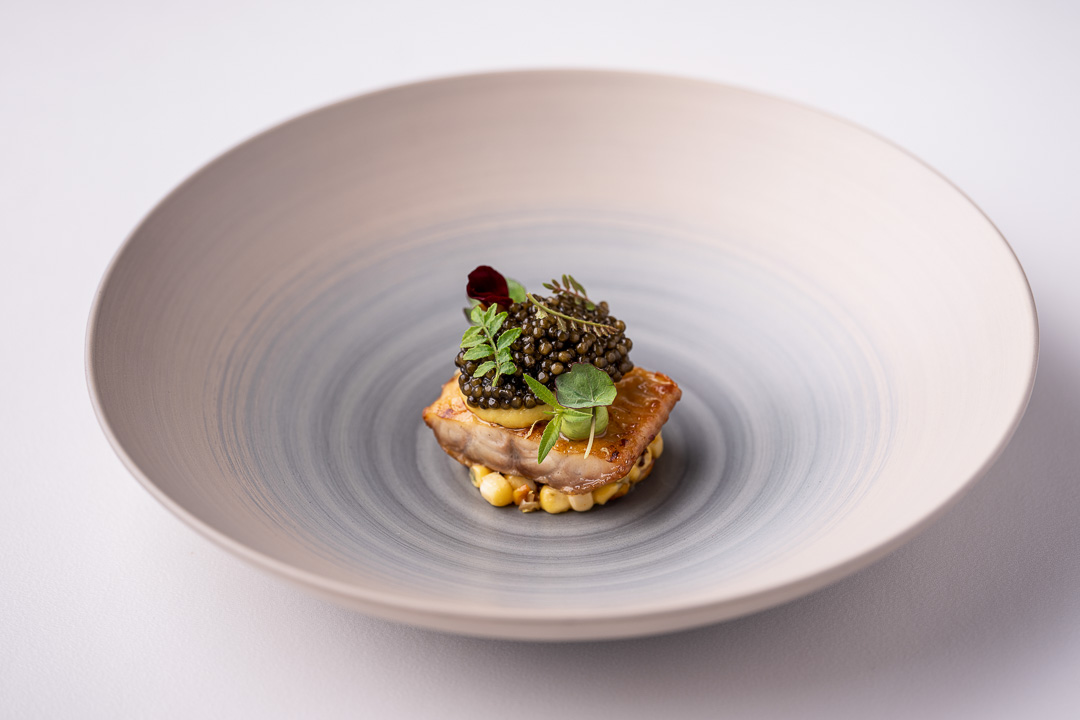
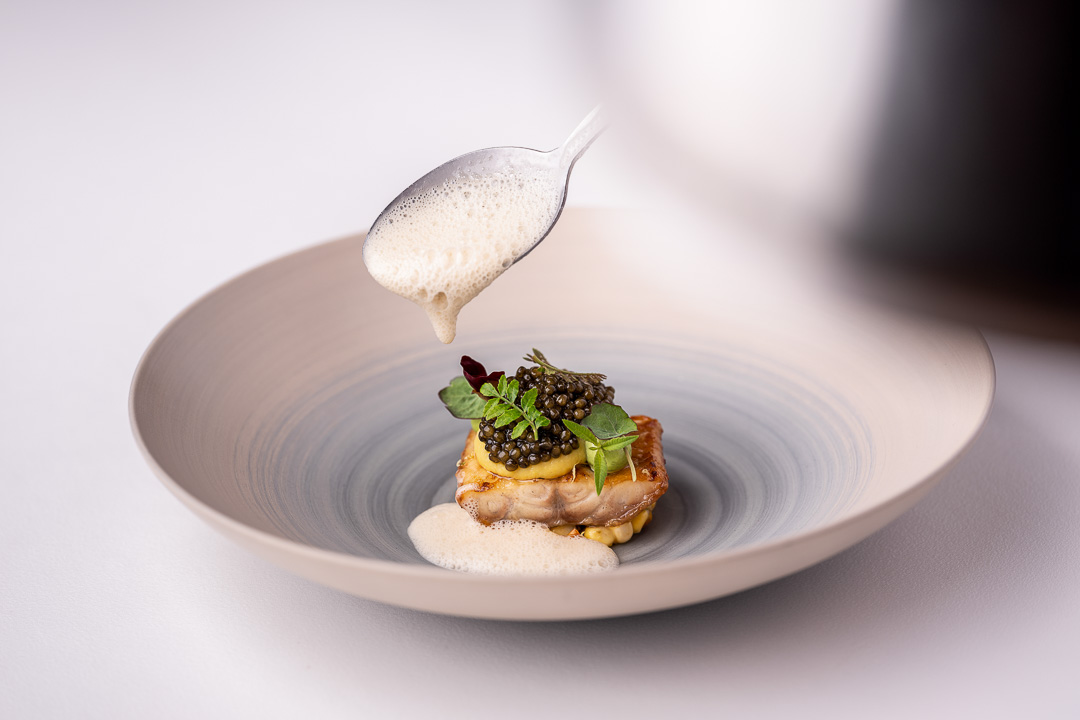
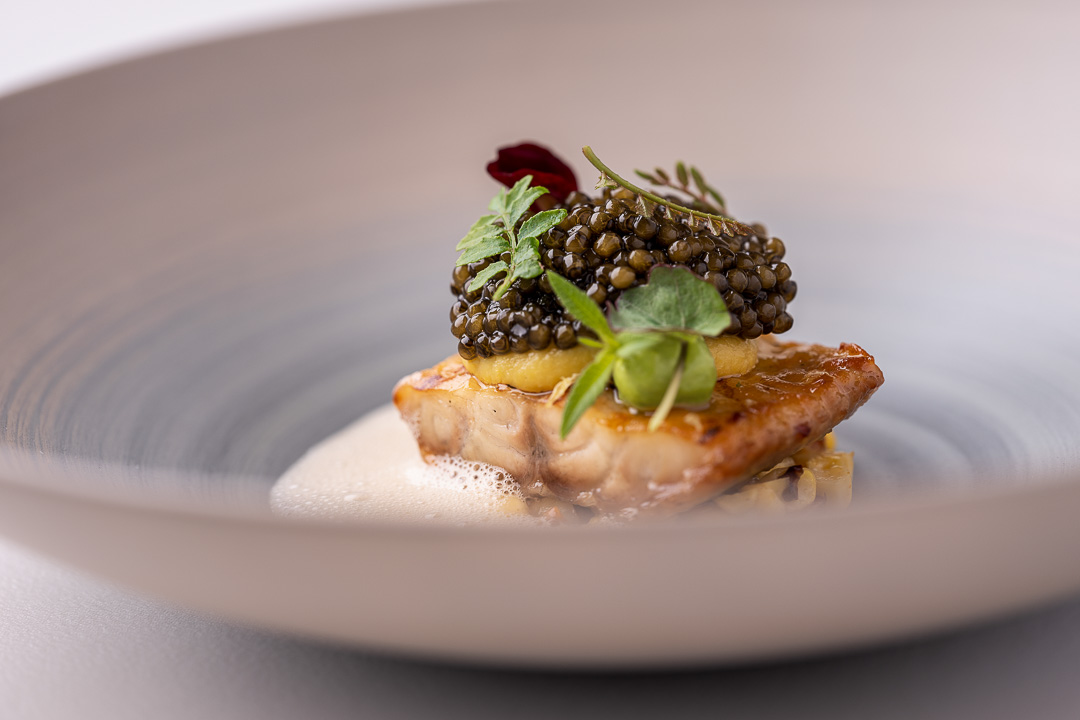
Intermezzo: Shibuya. Shibuya is not only the name of a special district in Tokyo, it’s also the name of the unique experience Werneckhof offers to its guests. The staff guides you to the basement where they prepare you an intermezzo of small dishes in a Japanese inspired setting.
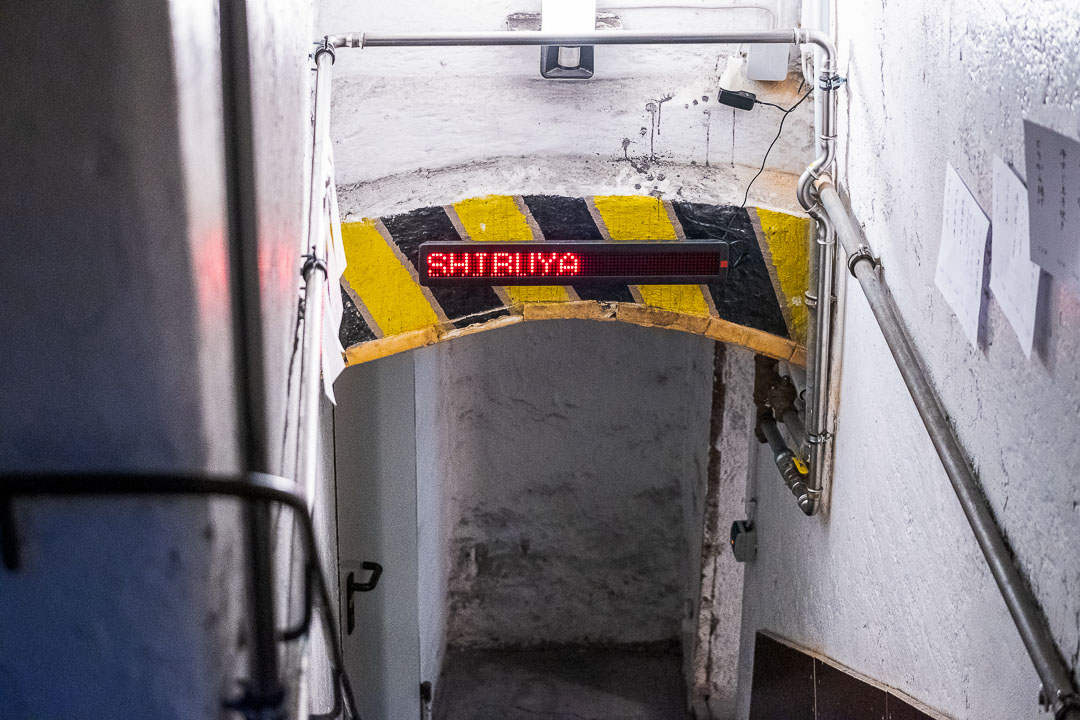
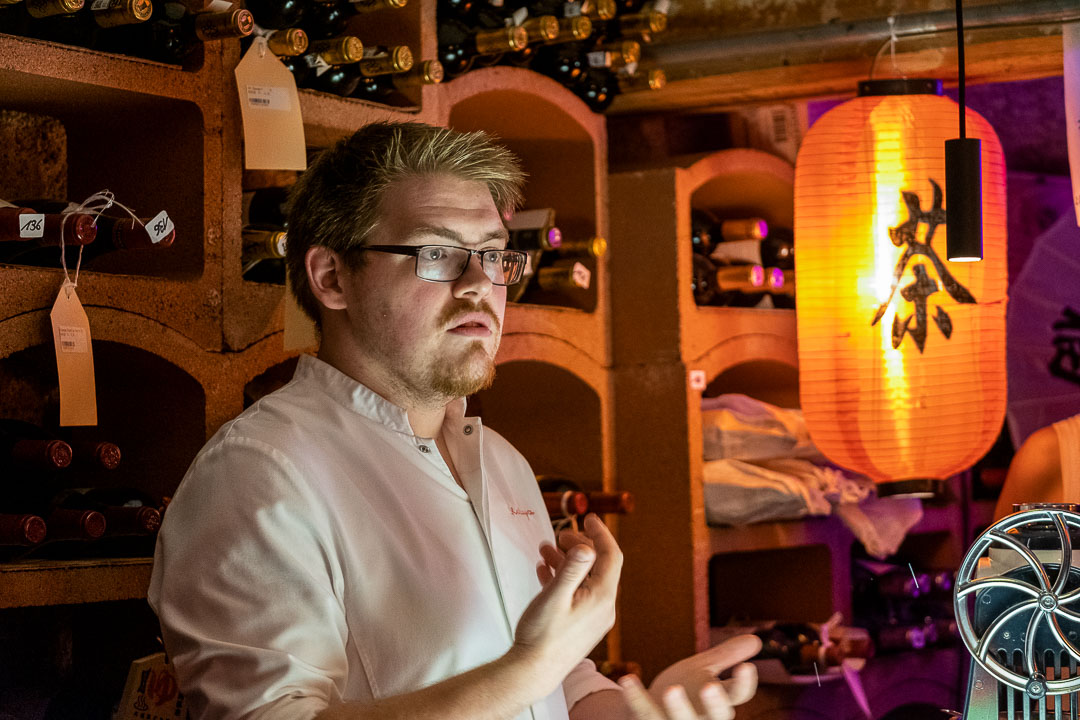
Anjou pigeon, carrot, pecan nut, passion fruit & curry leaves.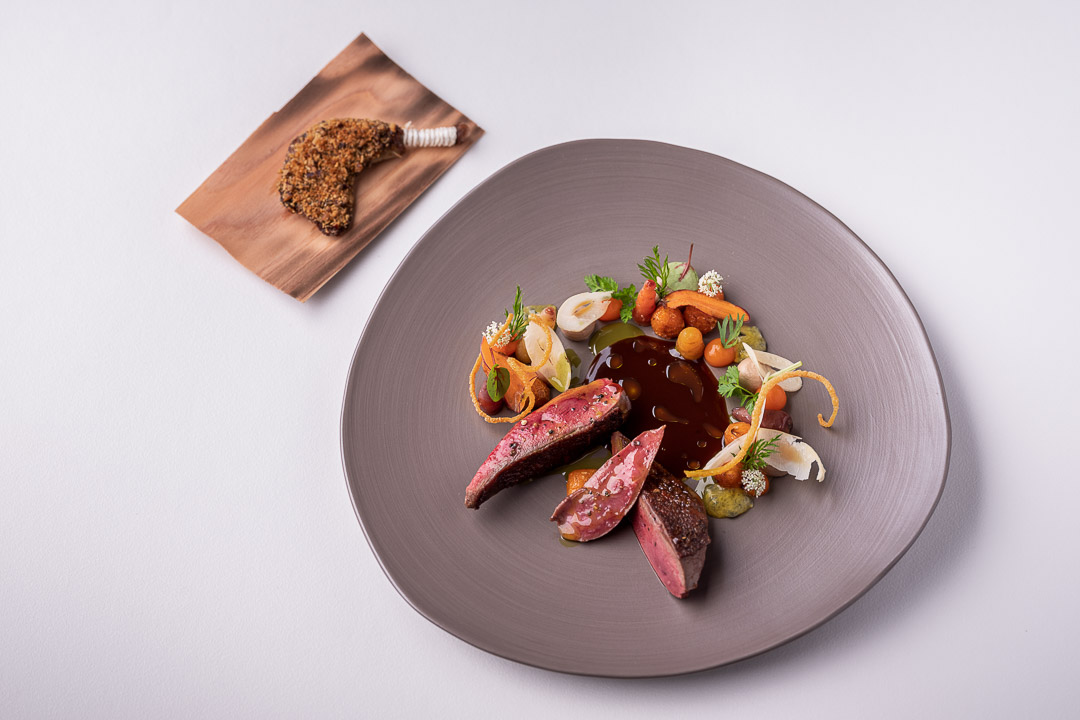
Ozaki Wagyu, soy infused cherry tomato, stuffed onions, shiokoji & basil.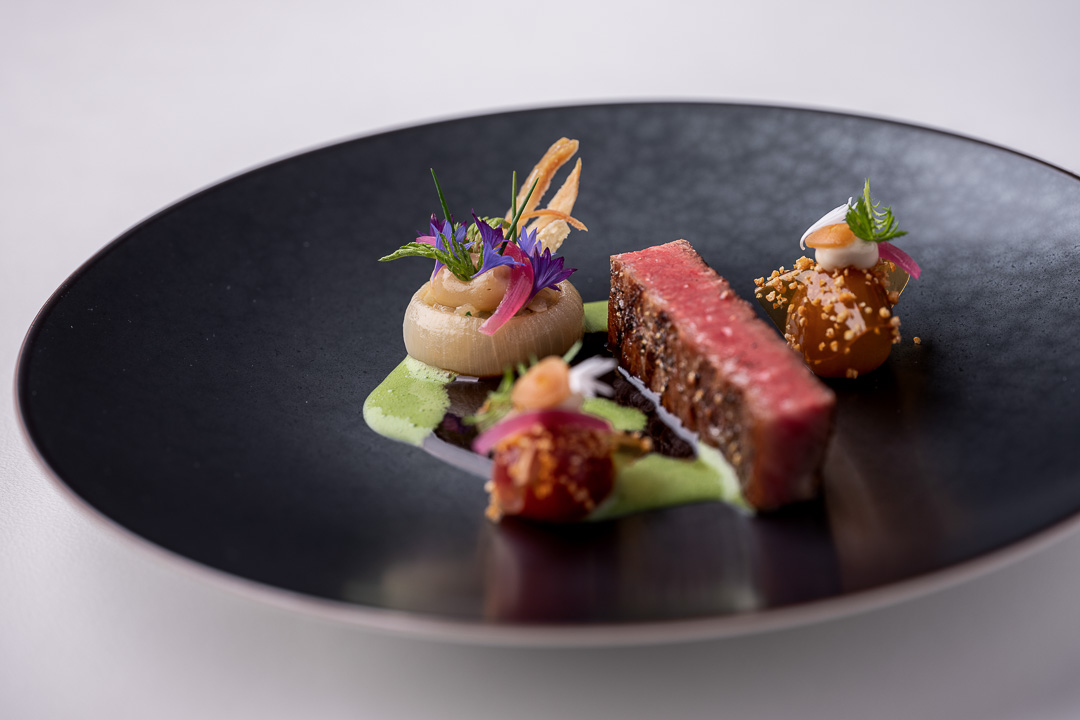
Cherry, meadowsweet, almond, Amontillado sherry & cicely.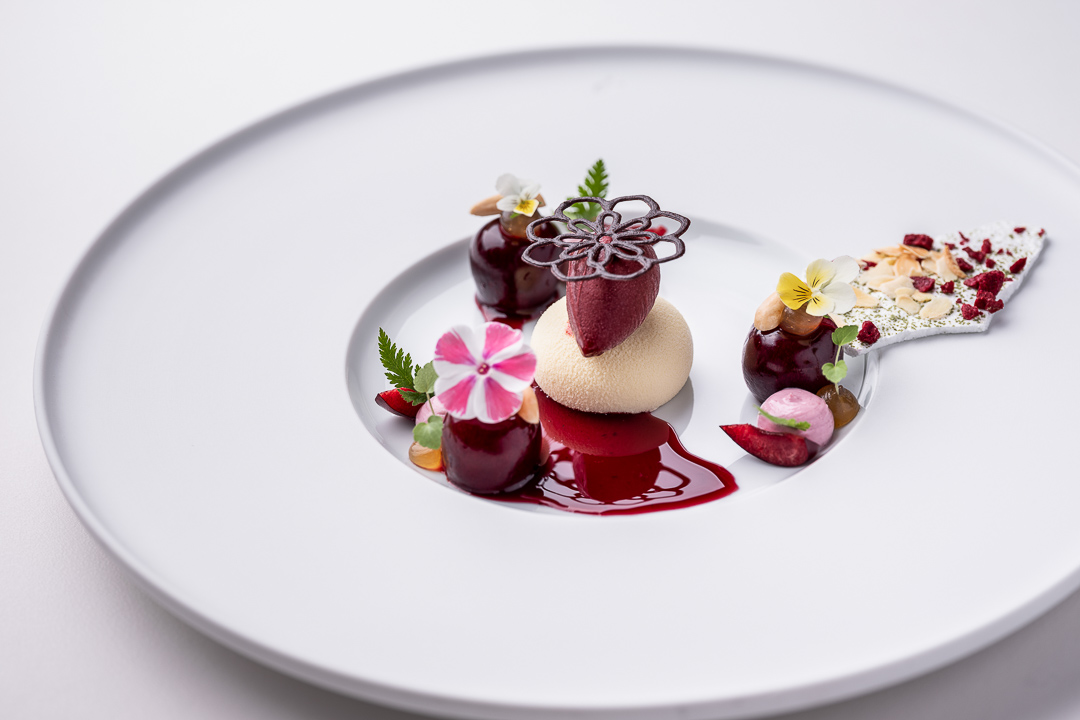
Shiso, medlar, elderflower & honey.
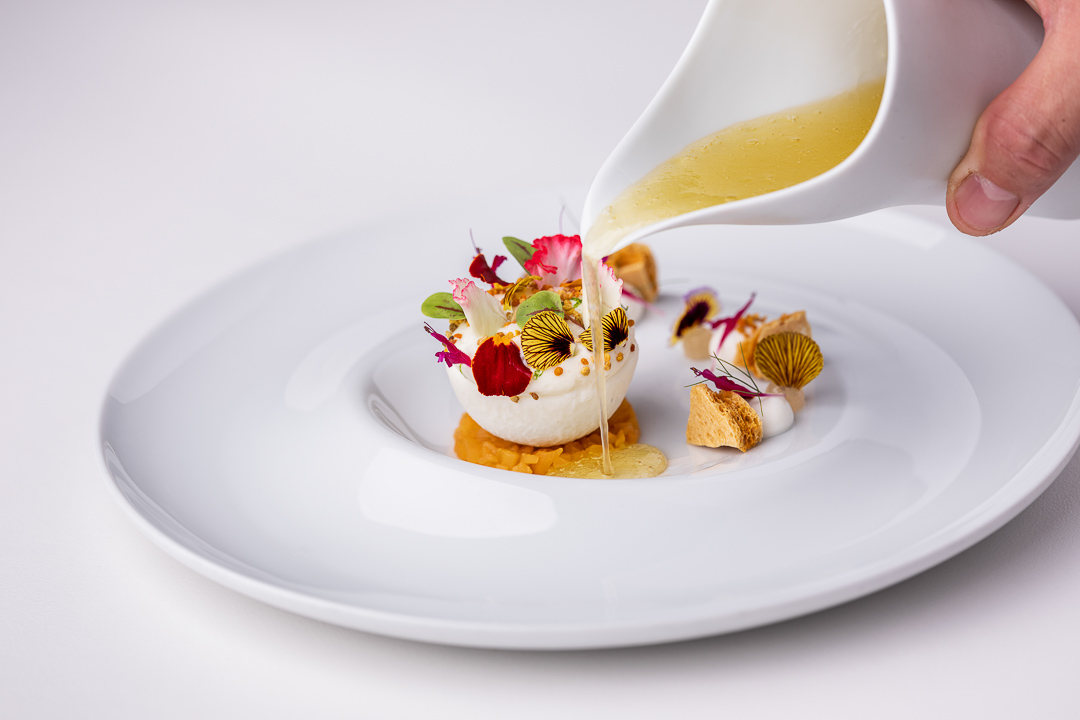

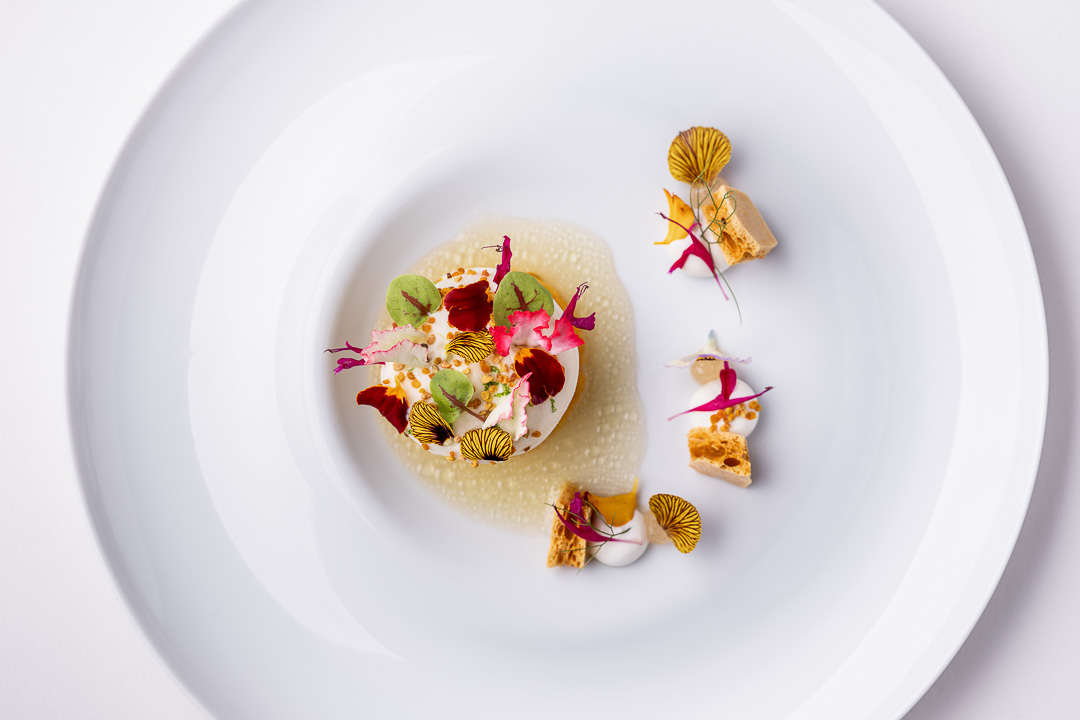
Homemade kombucha from the secret recipe of Erna, the grandmother of one of the staff members.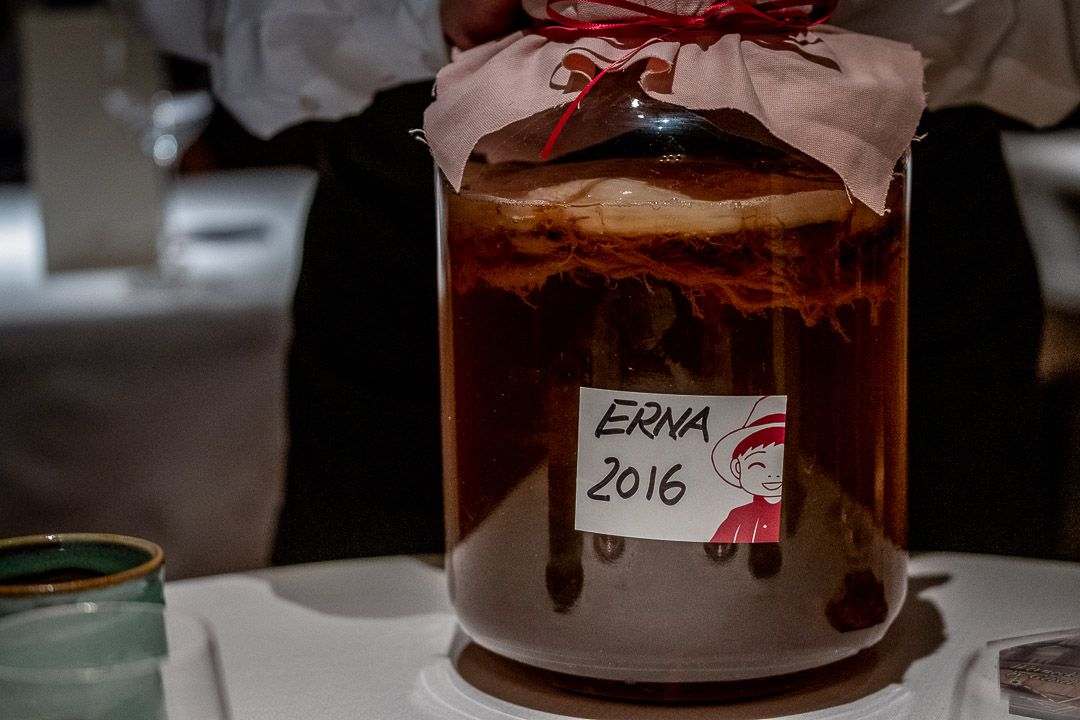
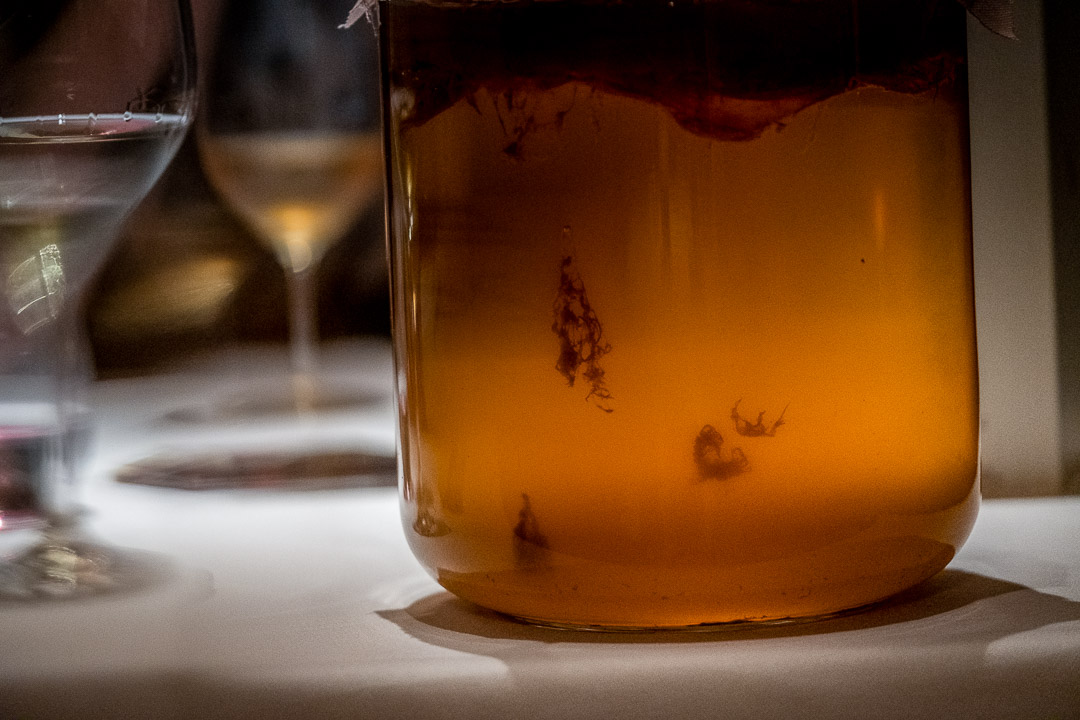
With a puzzle and some friandises we’re at the end of the meal. This course consists of a matcha mousse, ice cream pralines and a fortune cookie.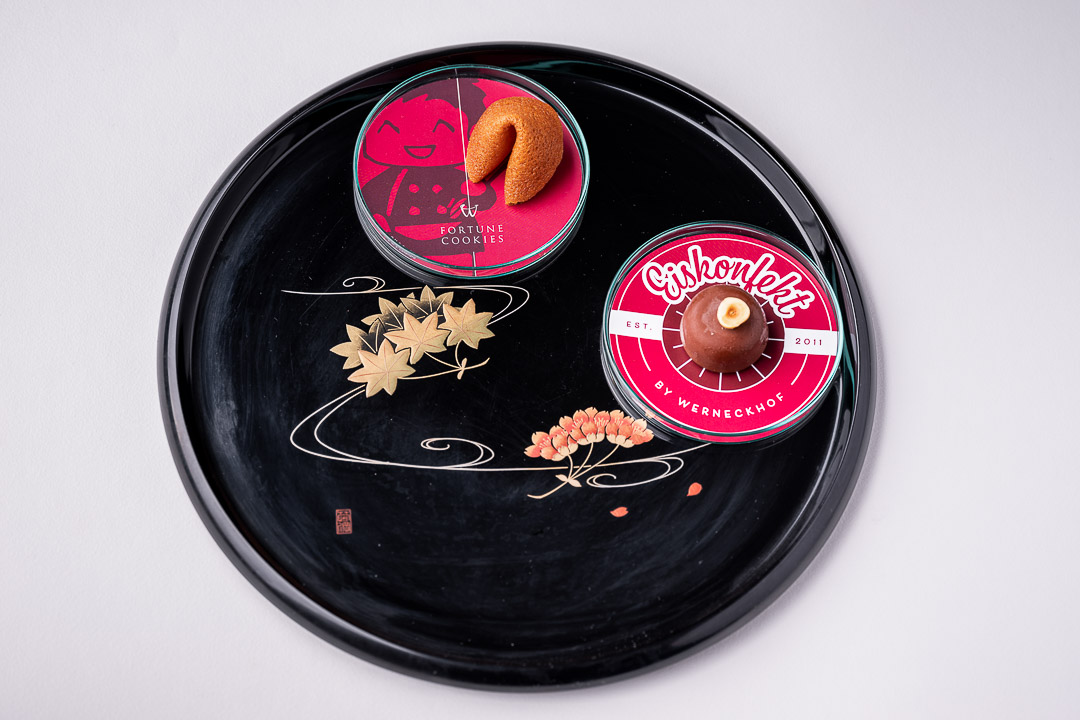
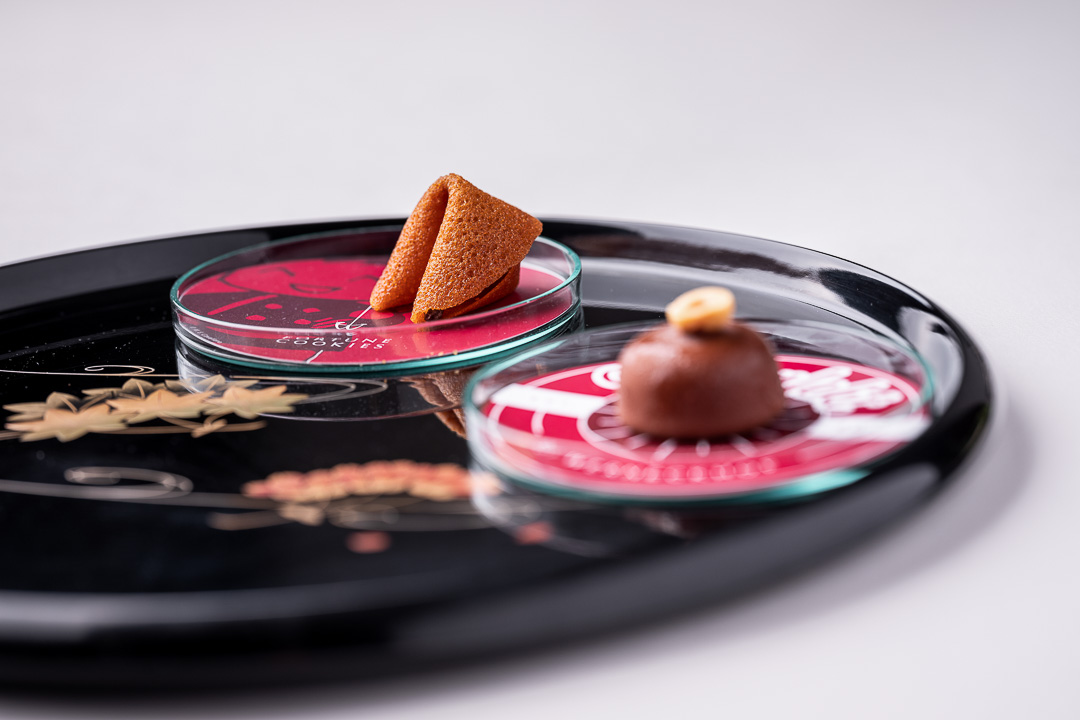
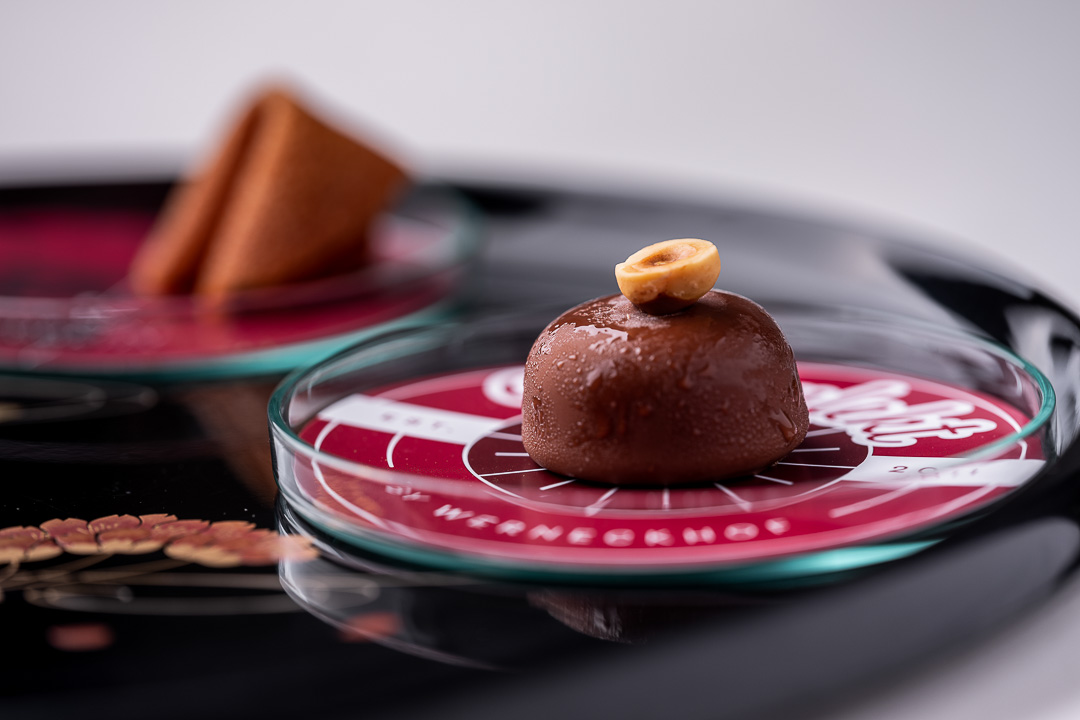
Ideas for a pleasant stay in Munich
We combined our visit to Werneckhof by Geisel with a city trip to Munich, which gave us the opportunity to discover two other places managed by the Geisel group. BEYOND by Geisel, their most recent hotel project is a truly unique boutique hotel with an amazing view on the Marienplatz, with its famous Rathhaus and Clockenspiel. With only 19 rooms, a very personal, yet discrete service and an open kitchen where guests can serve themselves or can get served 24/7, you feel at home in no time. Check out the full review of BEYOND by Geisel via this link.
The closest hotel to Werneckhof by Geisel is Geisel’s cool and hippish hotel Schwabinger Wahrheit by Geisel. Offering comfortable spacious rooms, with modest, yet contemporary designs, Munich’s first hybrid hotel is truly worth a visit too.
In short
At Werneckhof by Geisel, Chef de Cuisine Tohru Nakamura manages to reflect his roots – he’s half German and half Japanese – in a well-balanced way of cooking. His Eurasian cuisine is served in an Art-Nouveau setting, highlighting the contrast between his modern haute cuisine and the classic Bavarian interior.
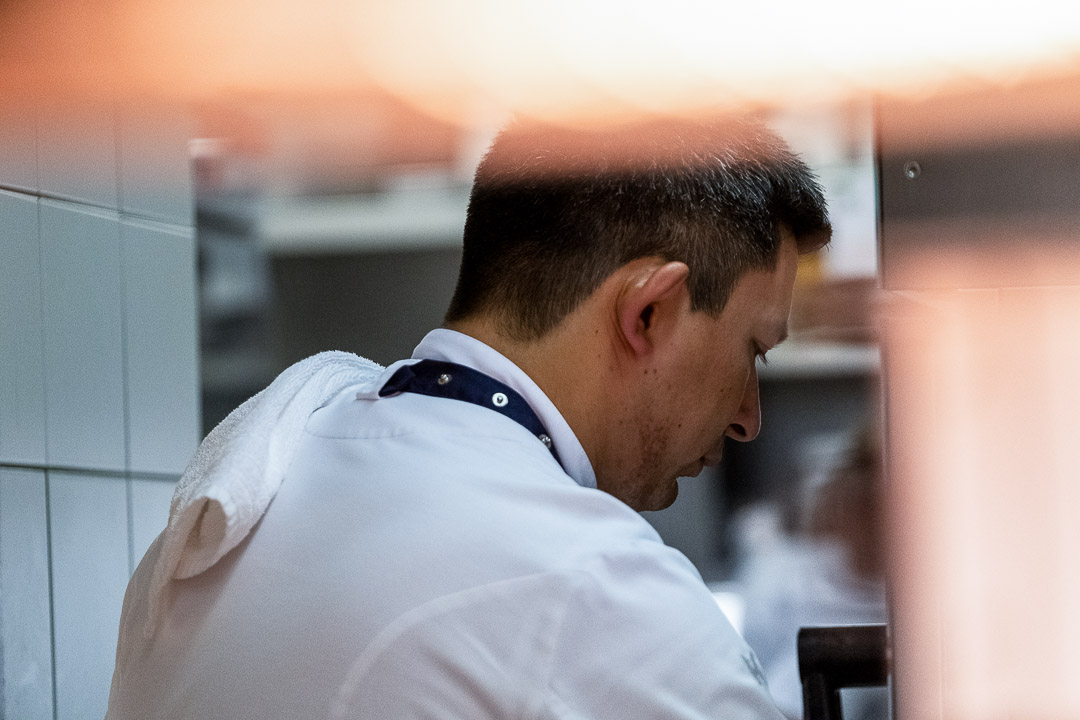
Practical information
Werneckhof by Geisel, Werneckstraße 11, 80802 München, Germany | info@geisels-werneckhof.de | +49 (0)89 388 795 68 | www.geisels-werneckhof.de | facebook.com/GeiselsWerneckhof/ | instagram.com/tohrunakamura/ | instagram.com/werneckhof.bygeisel/ | facebook.com/TohruNakamura.official/
–
Text: Sarah De Hondt
Photography: Adriaan Van Looy


